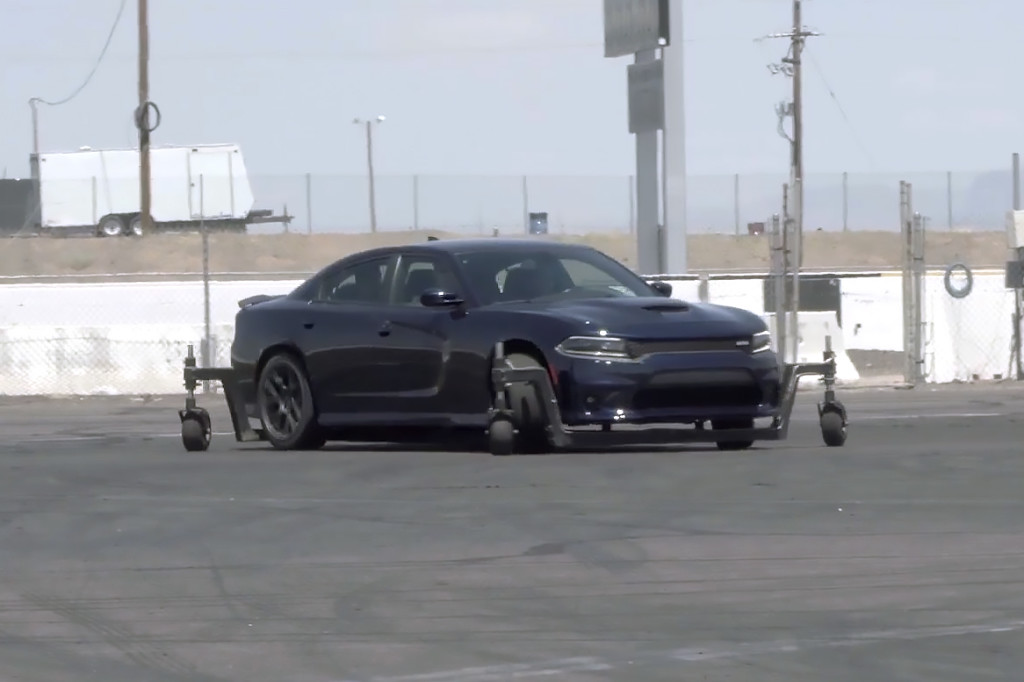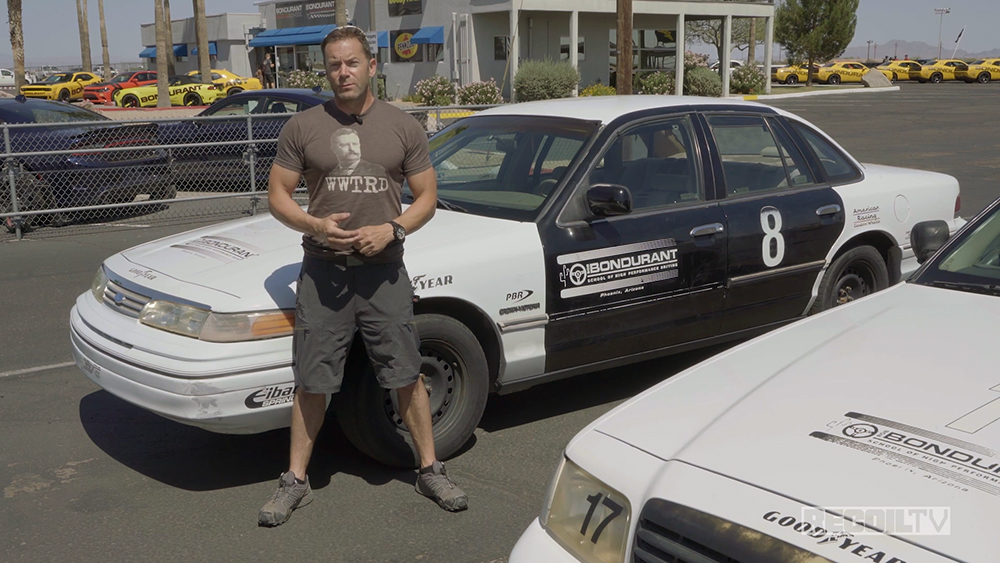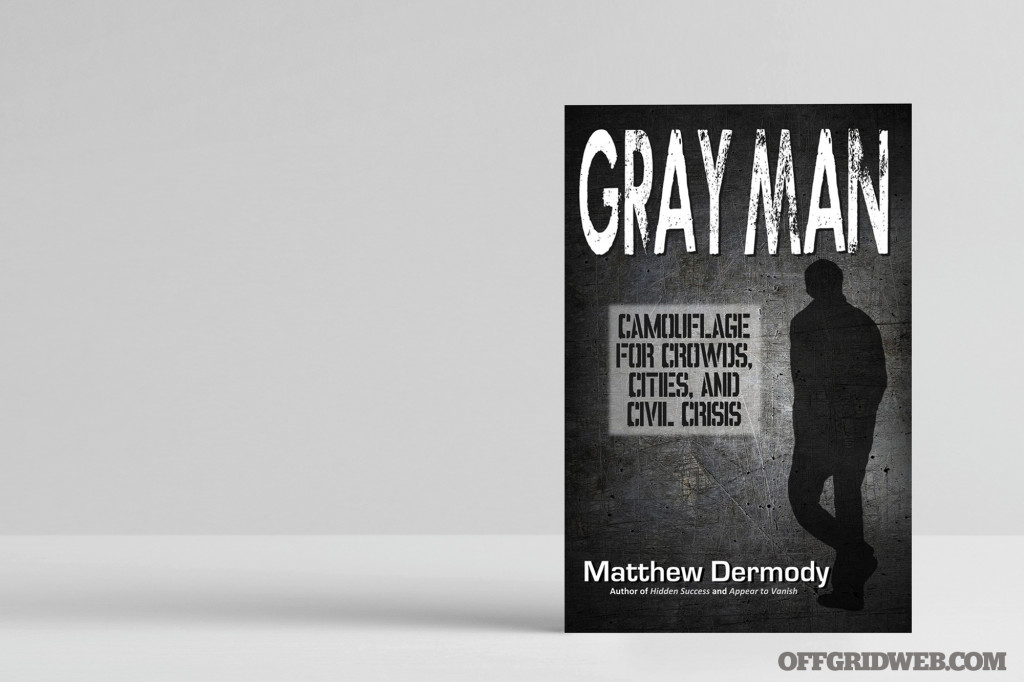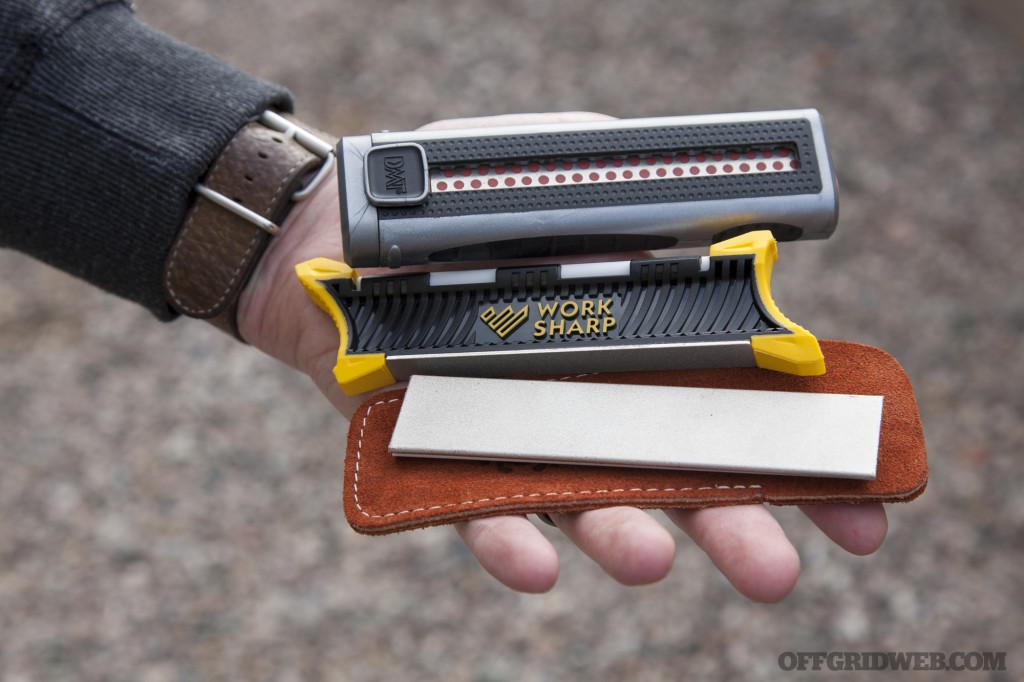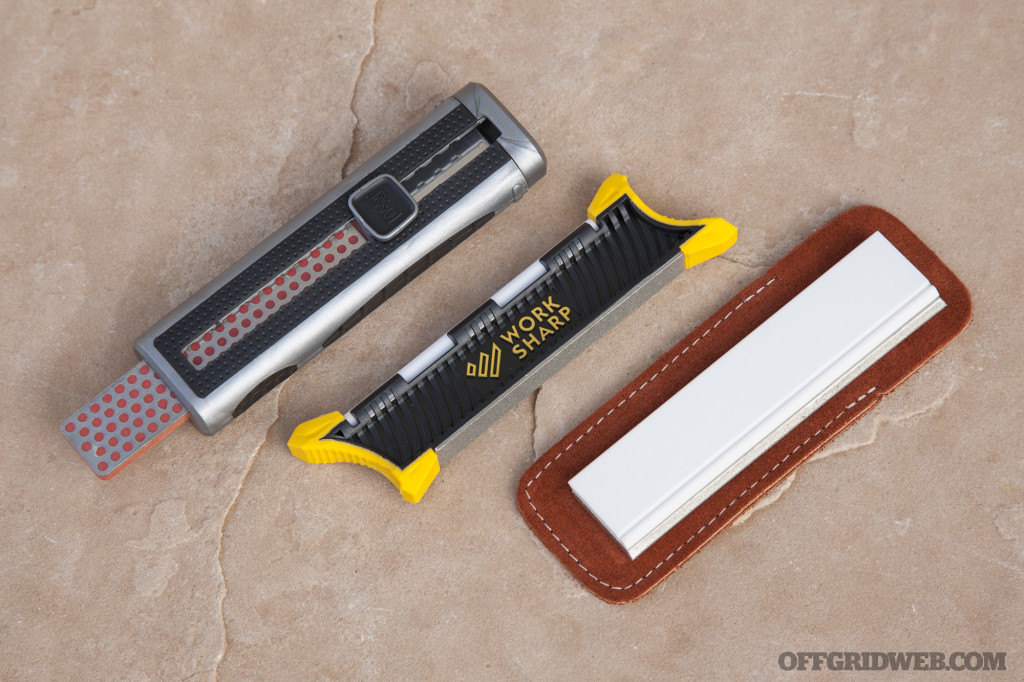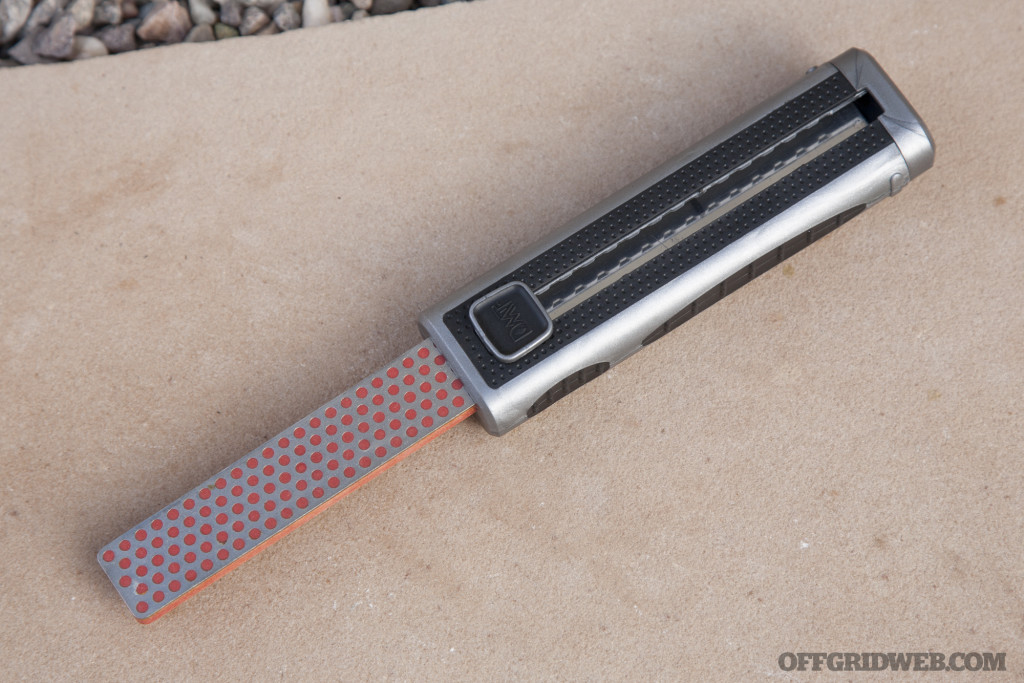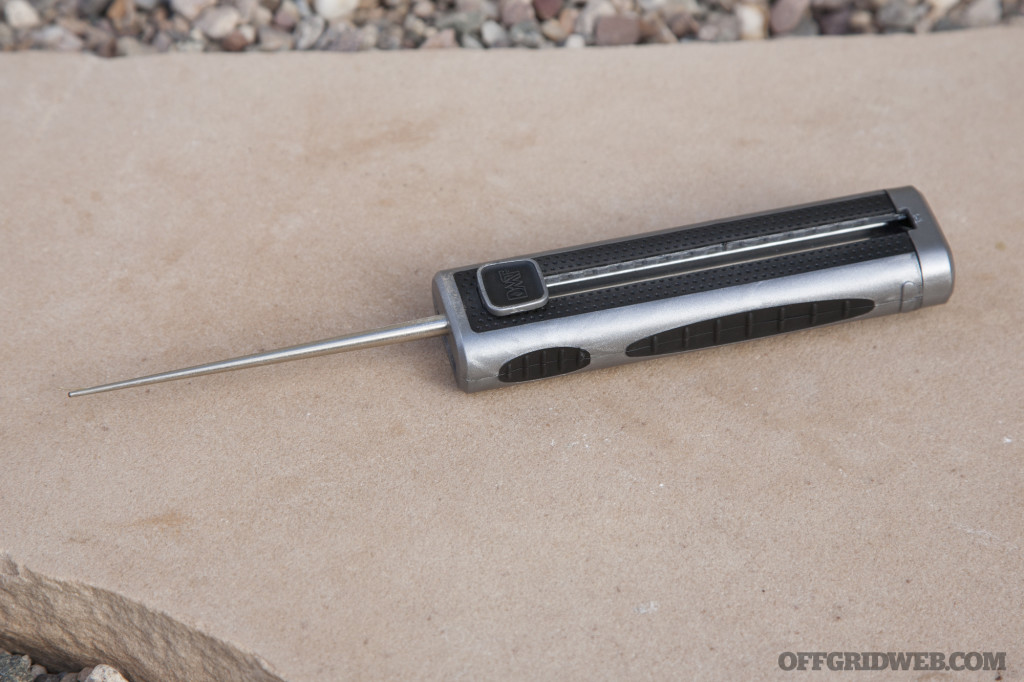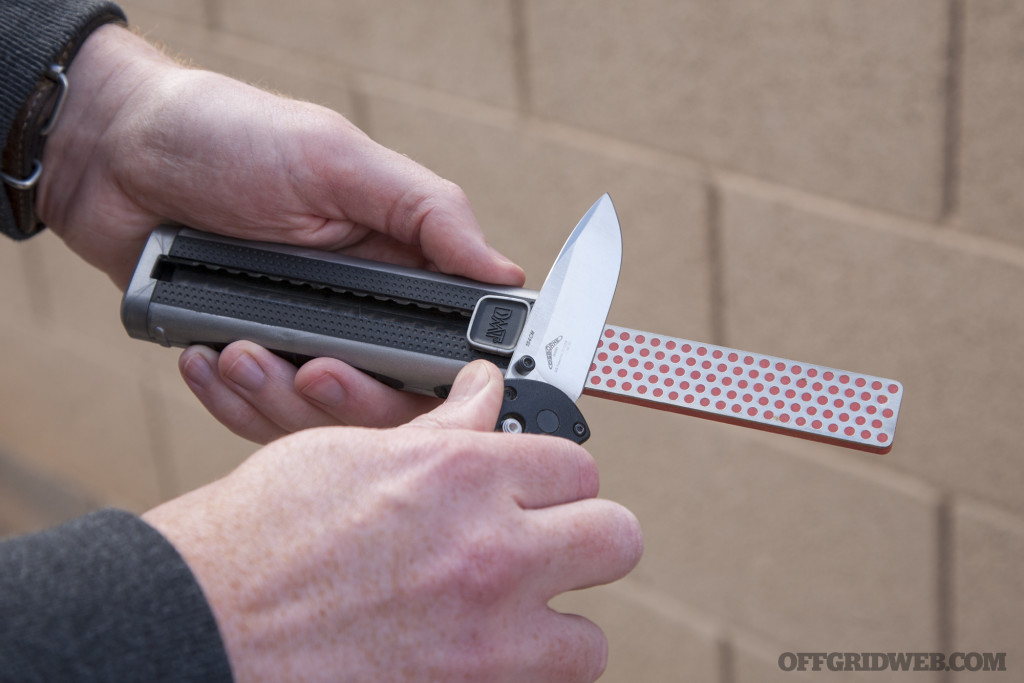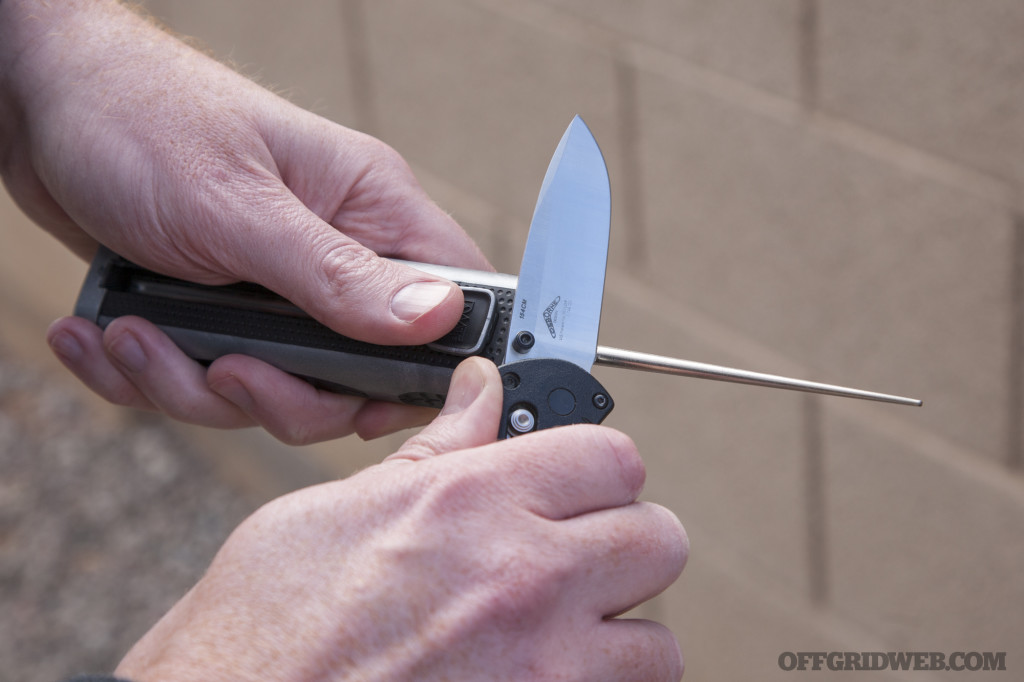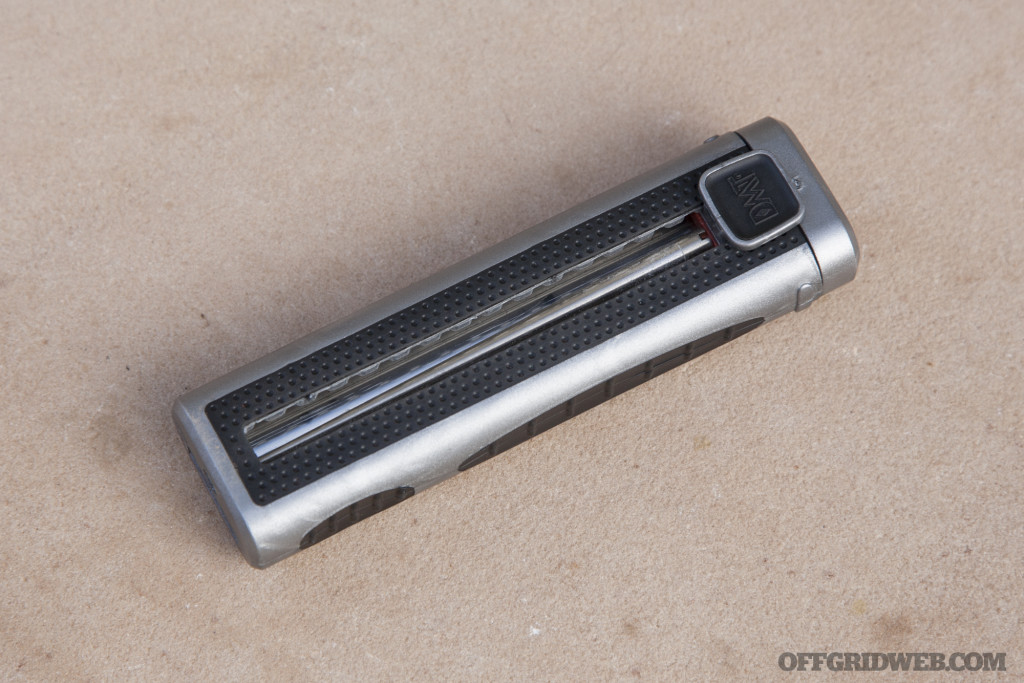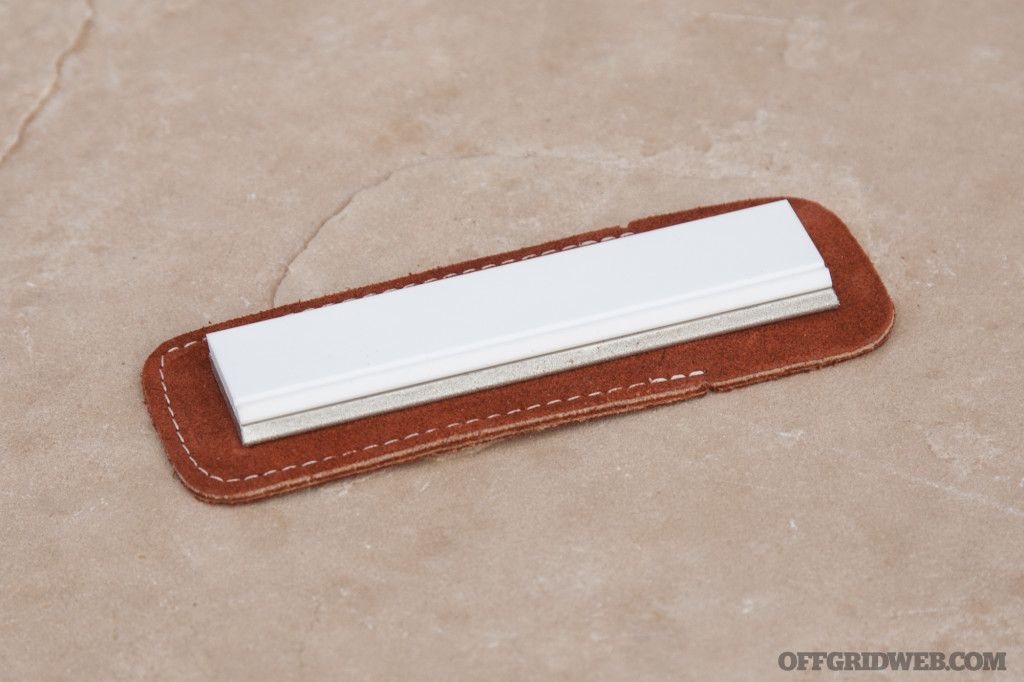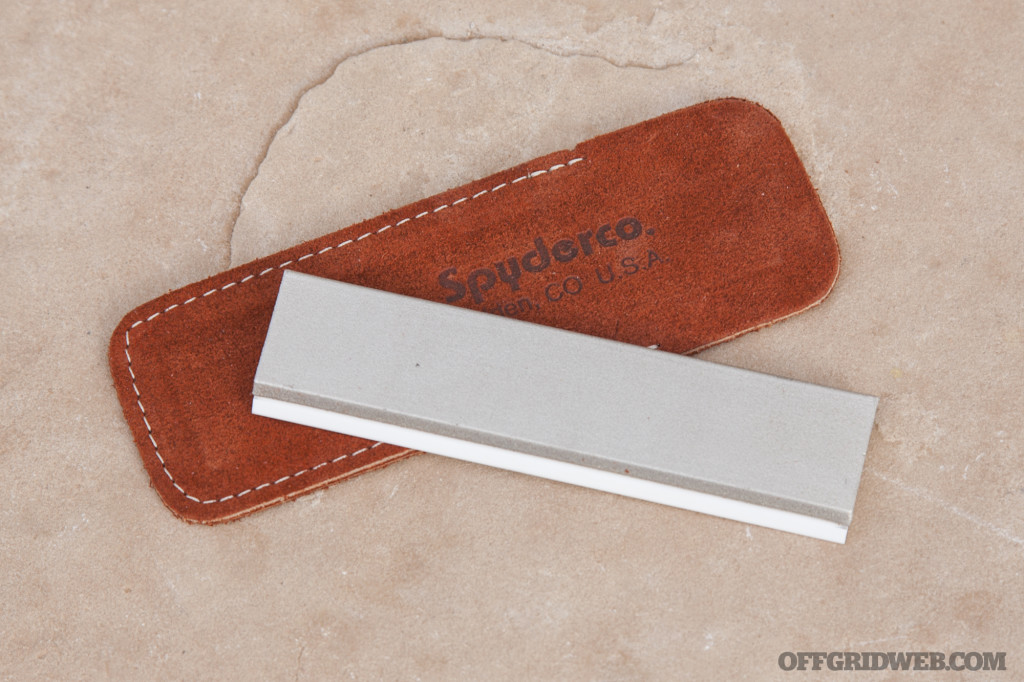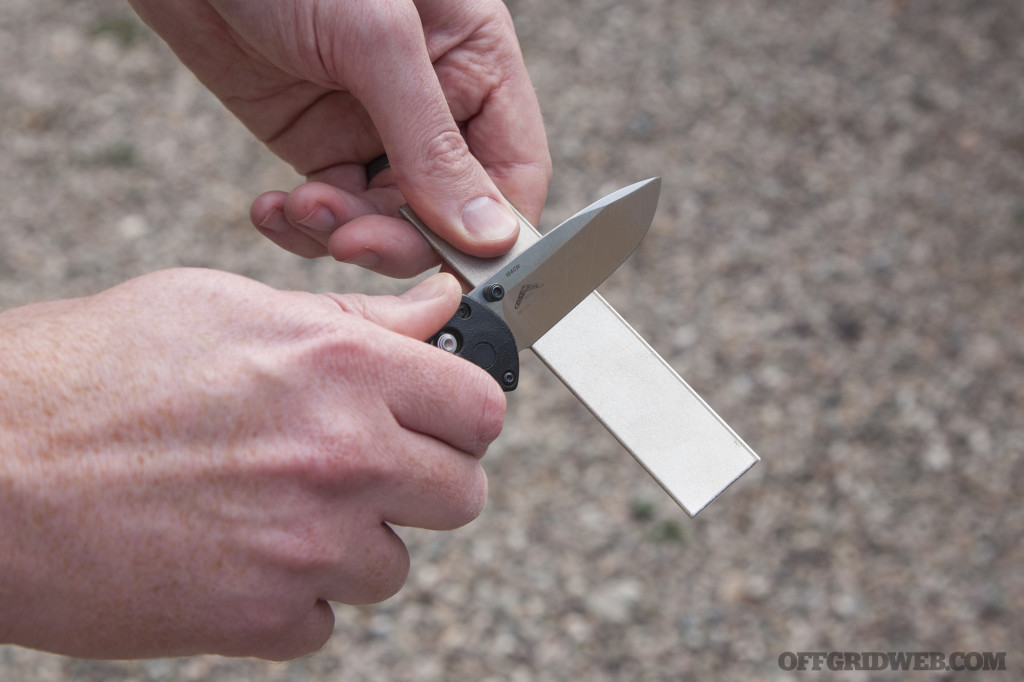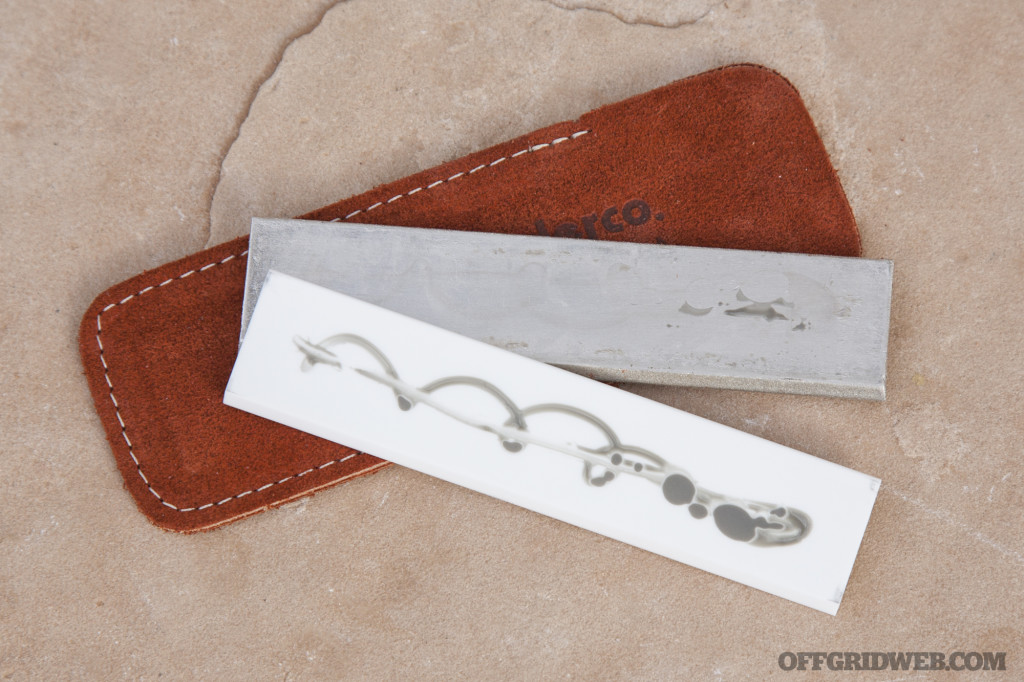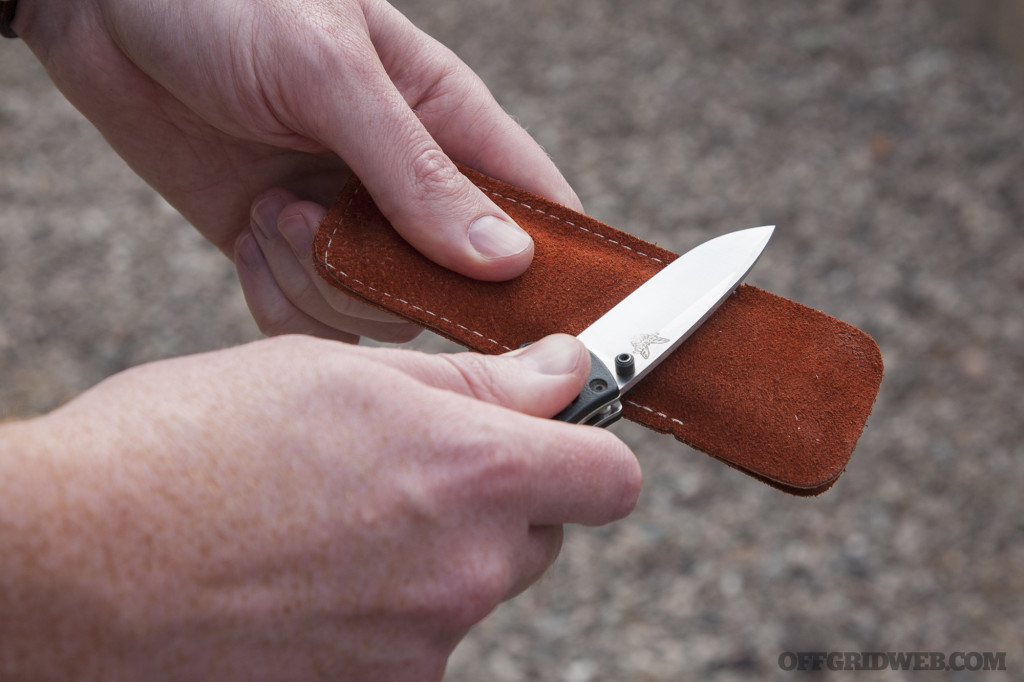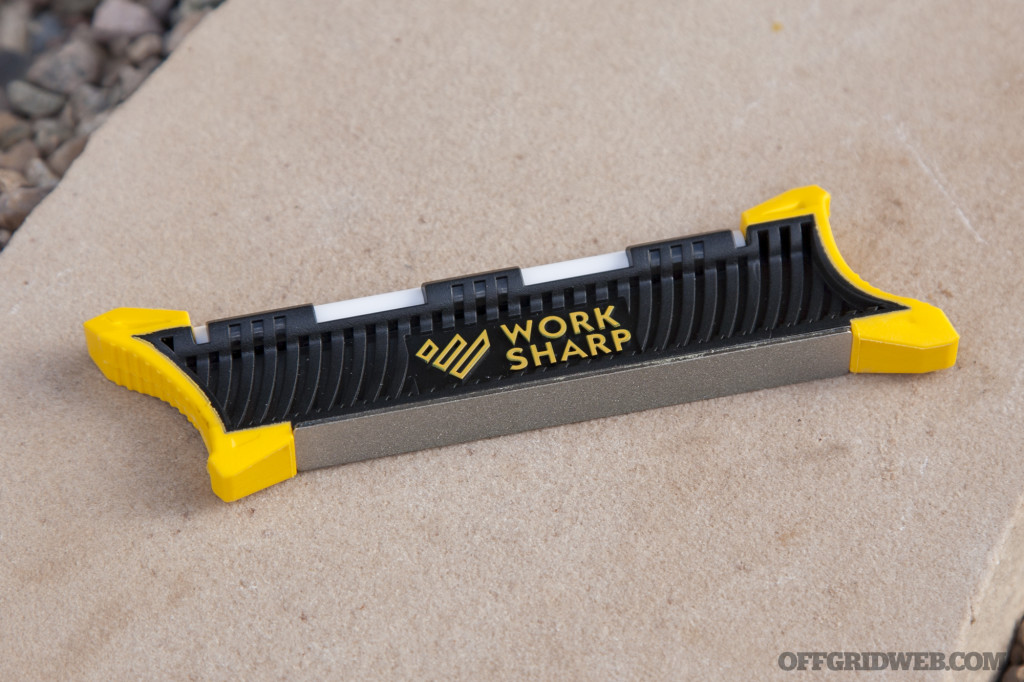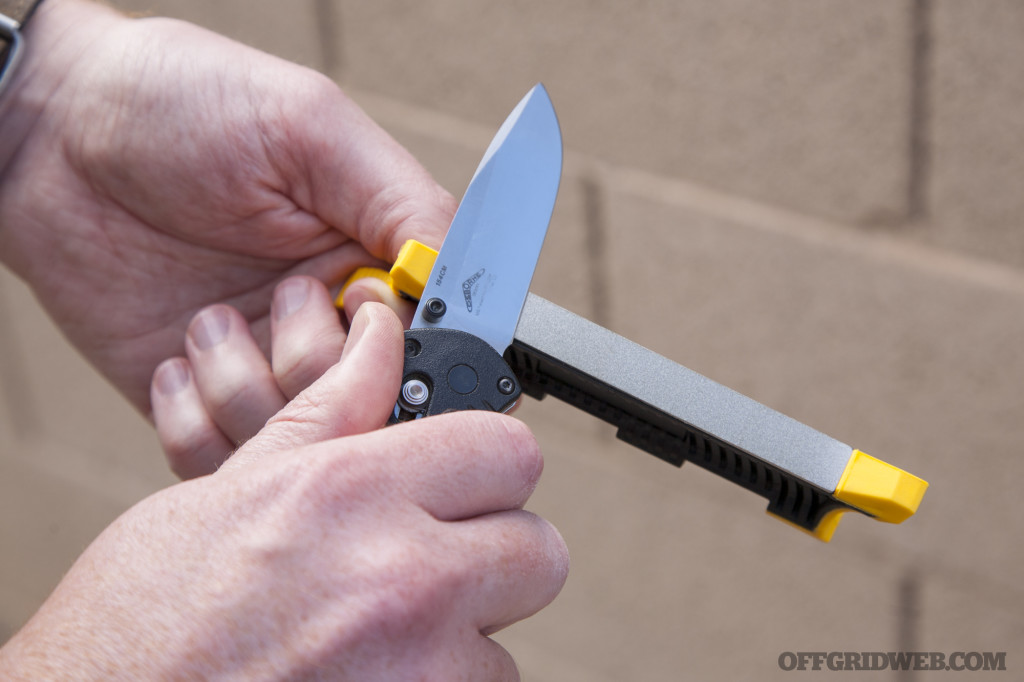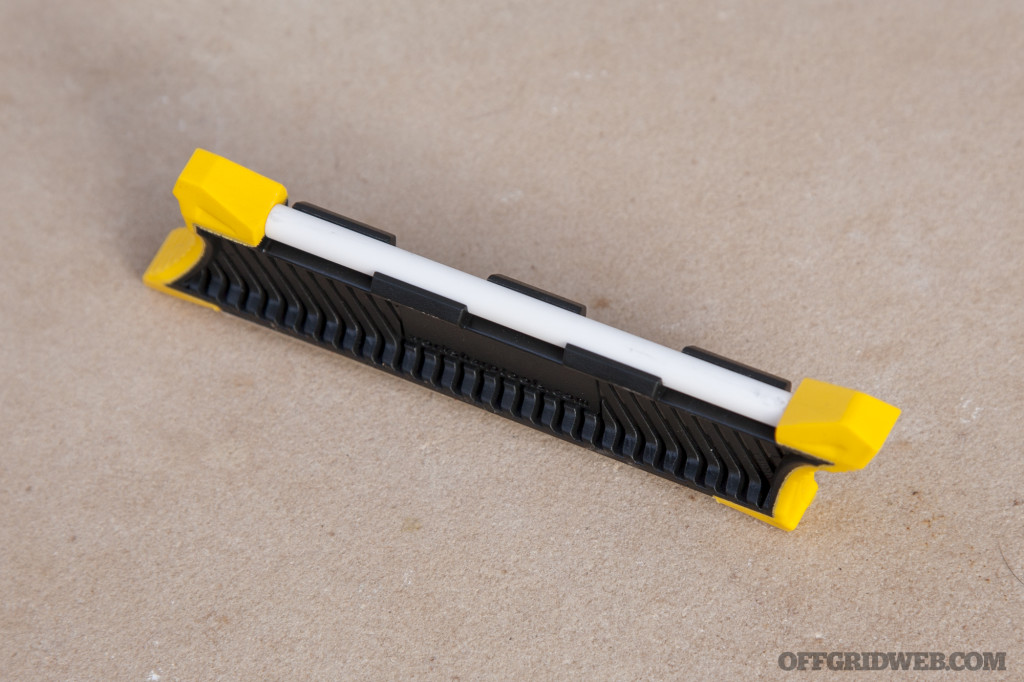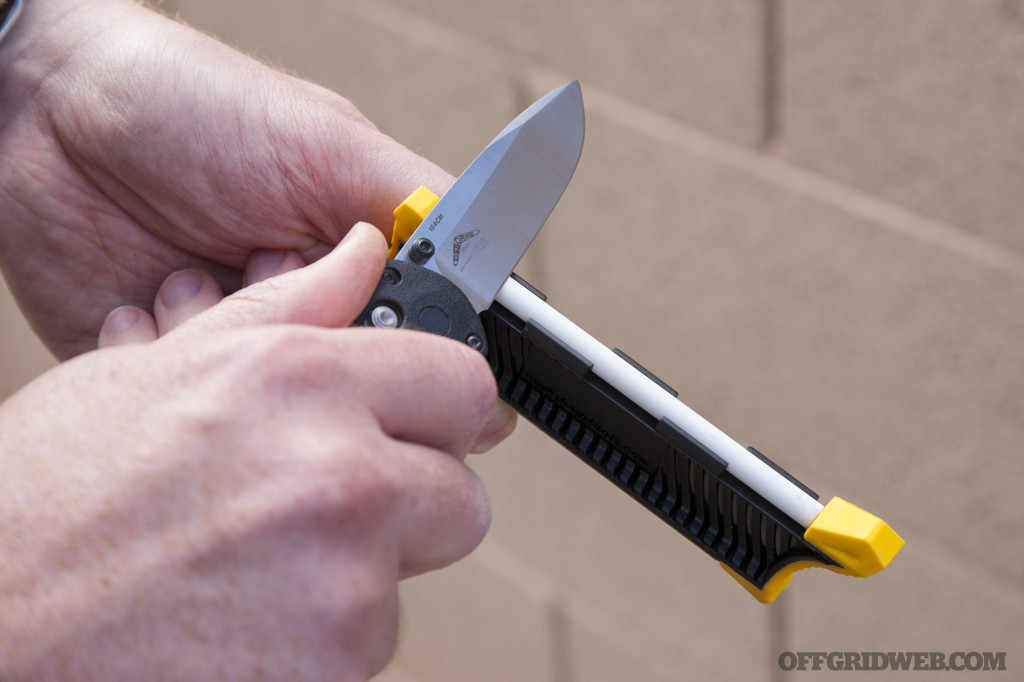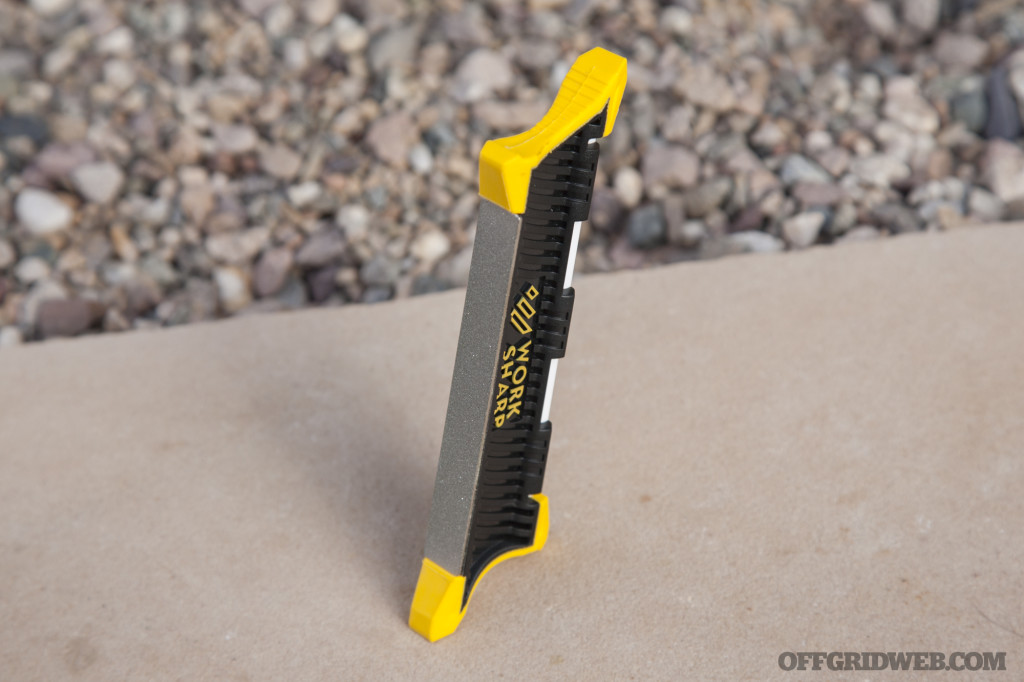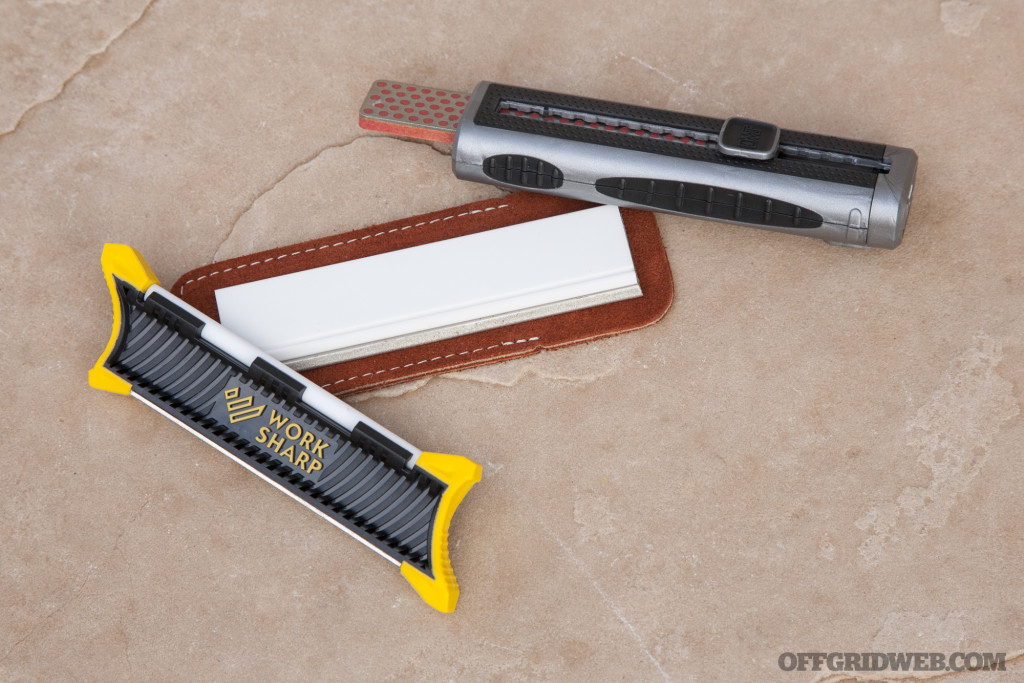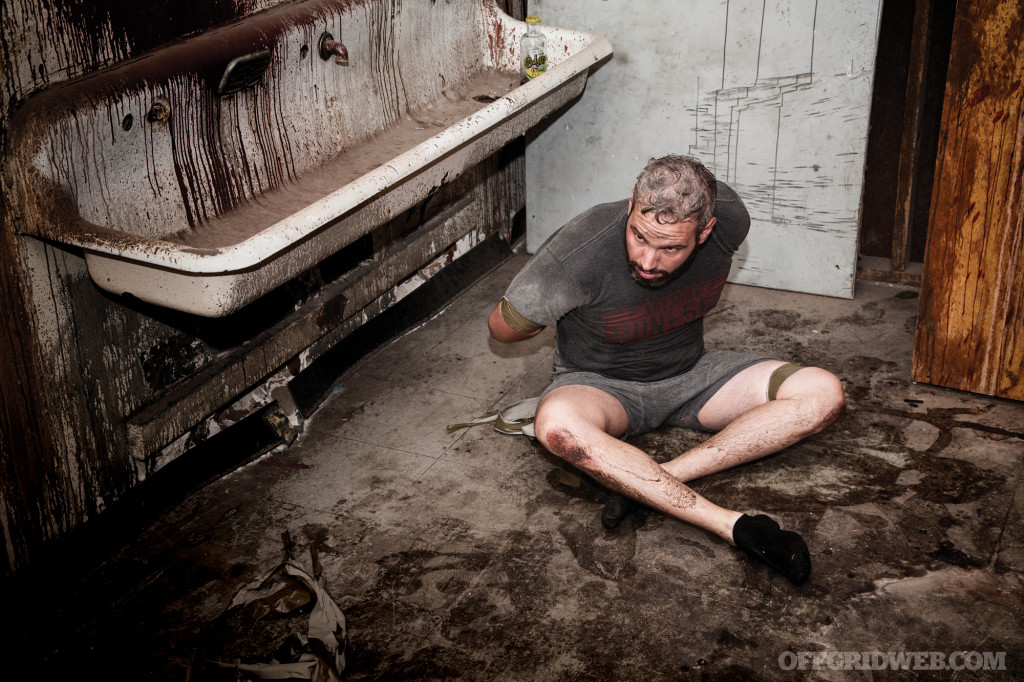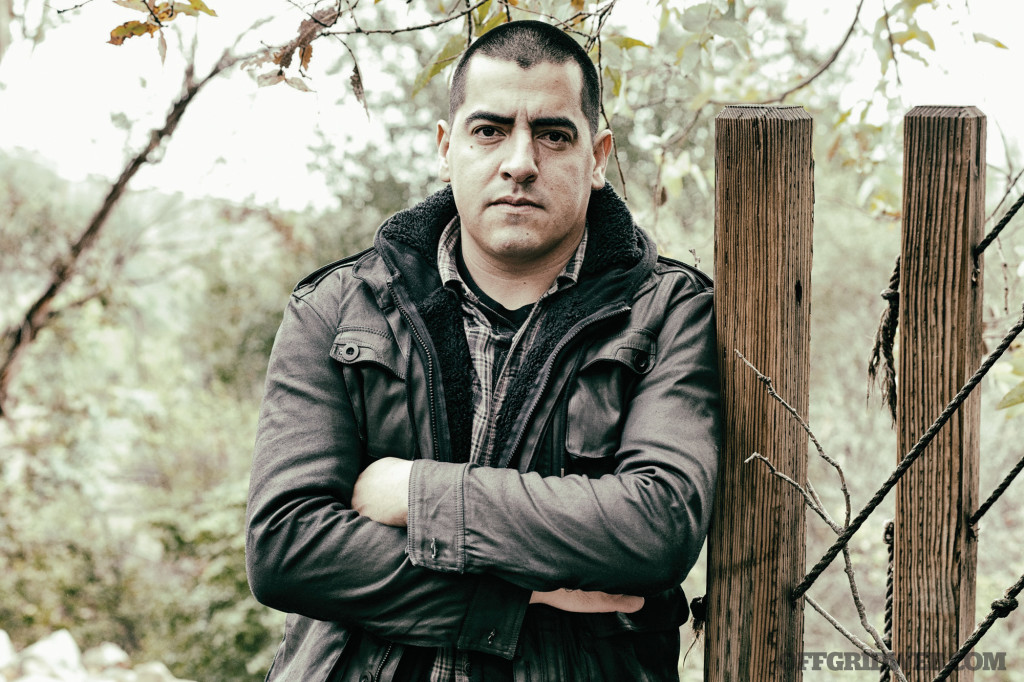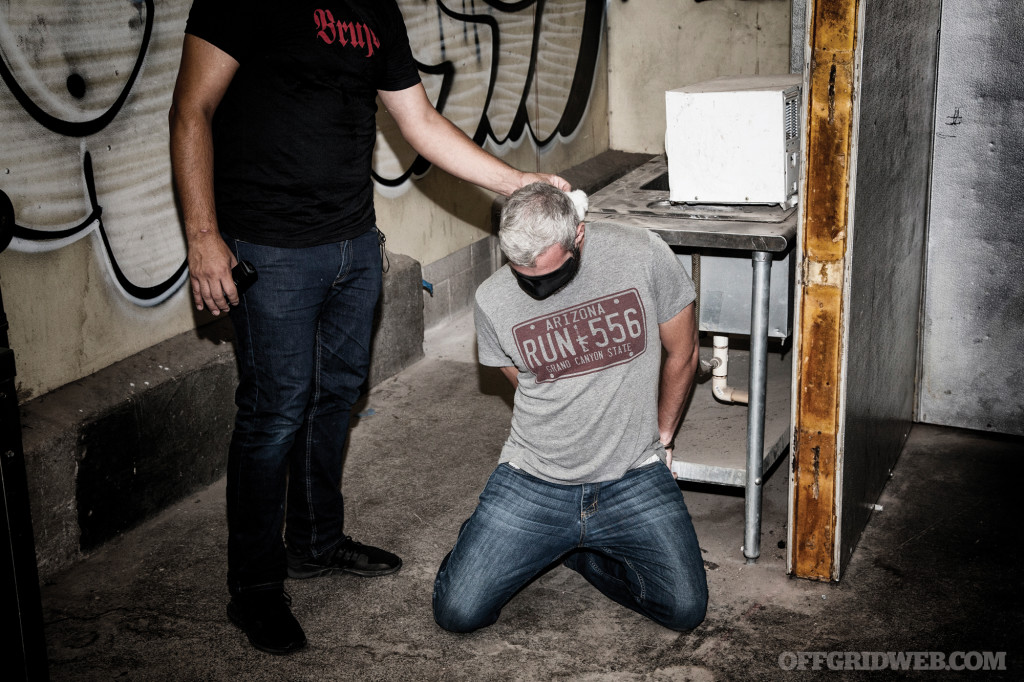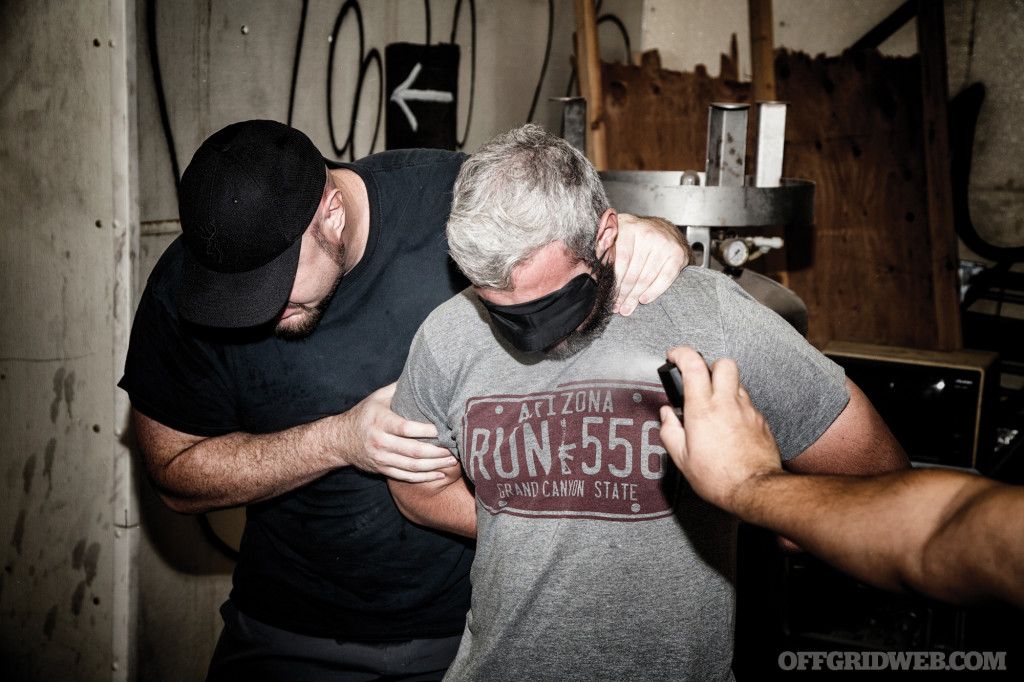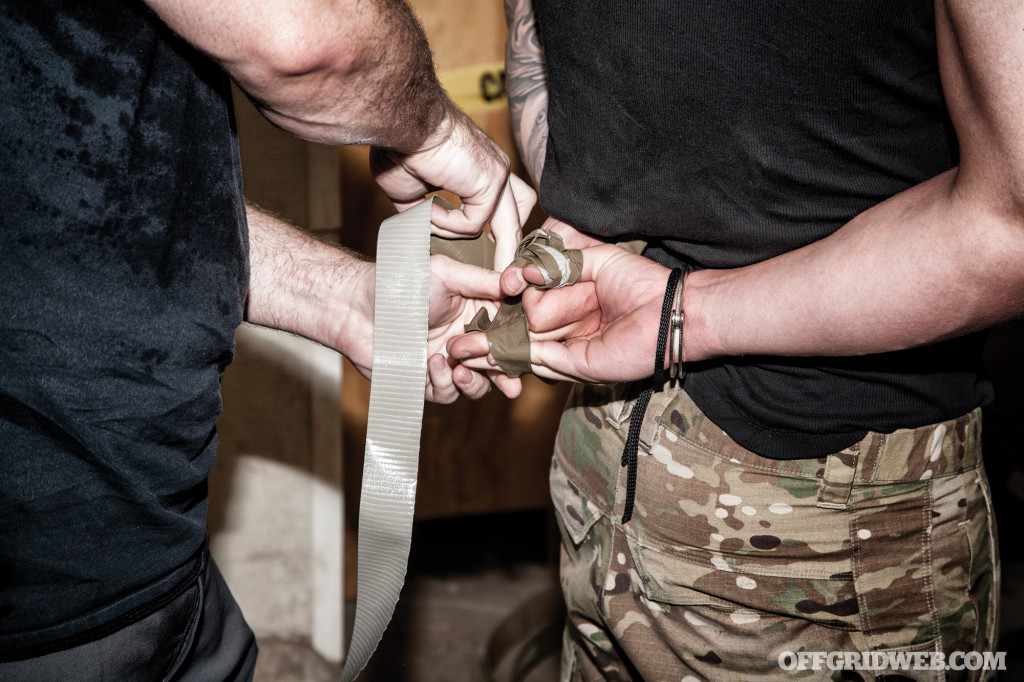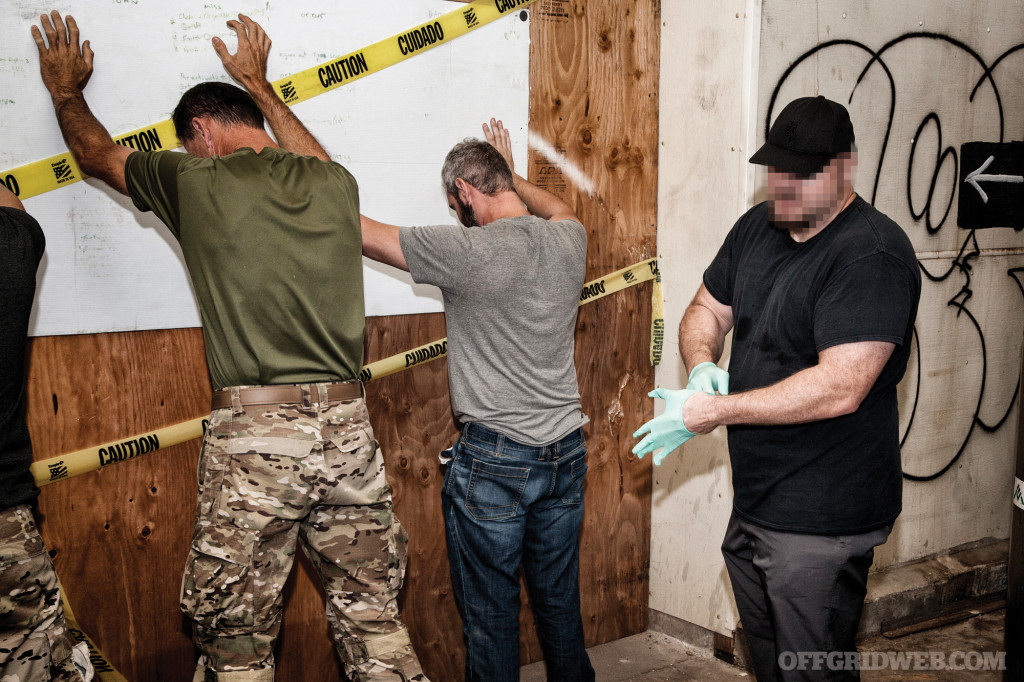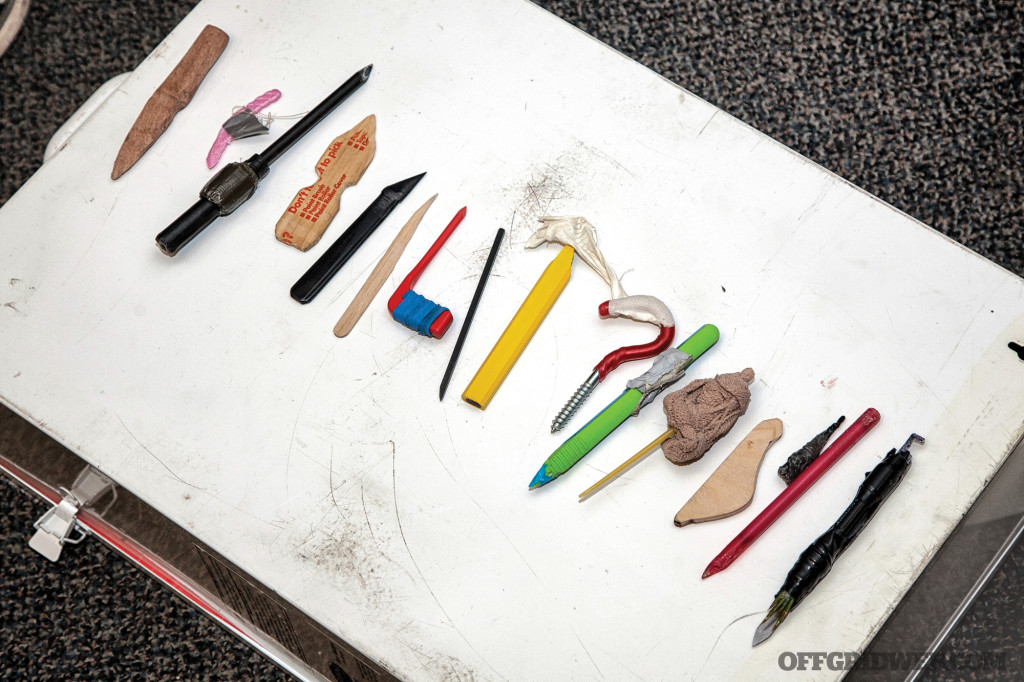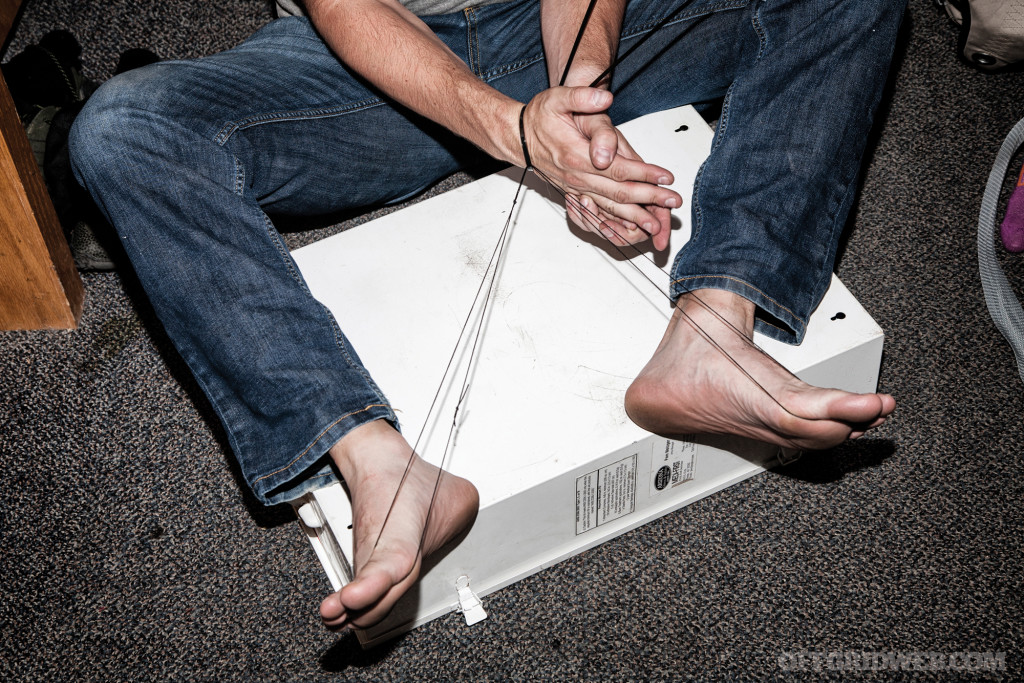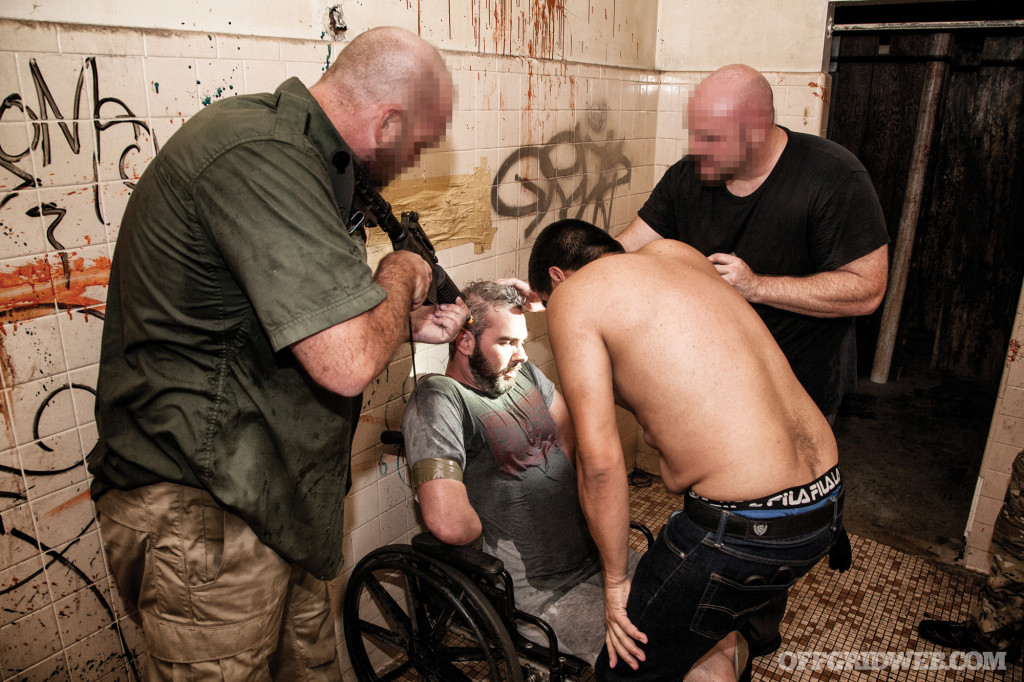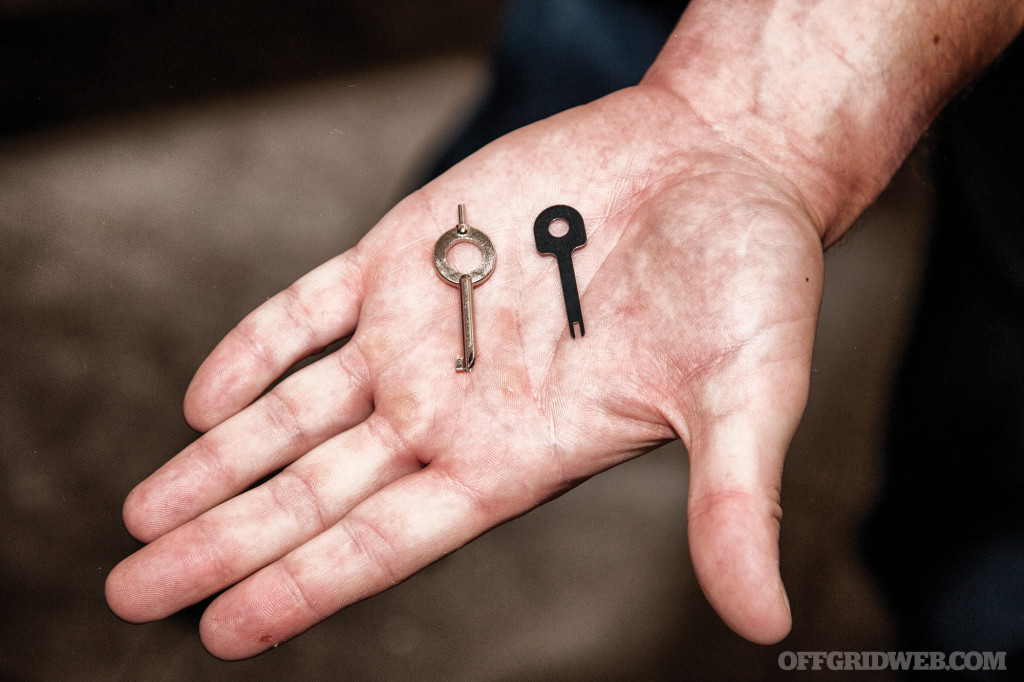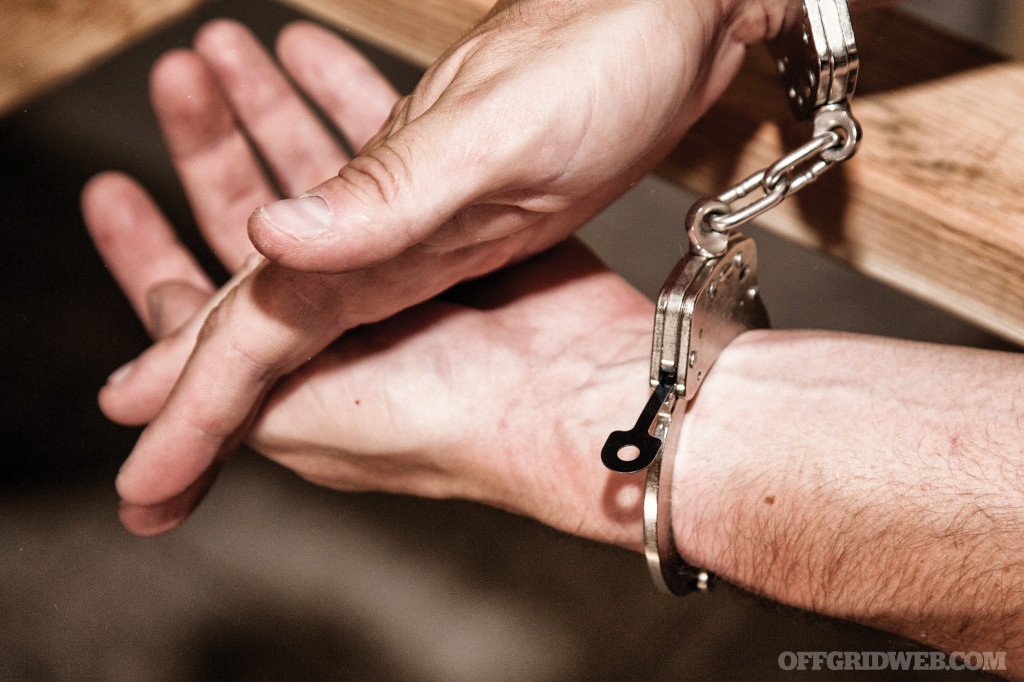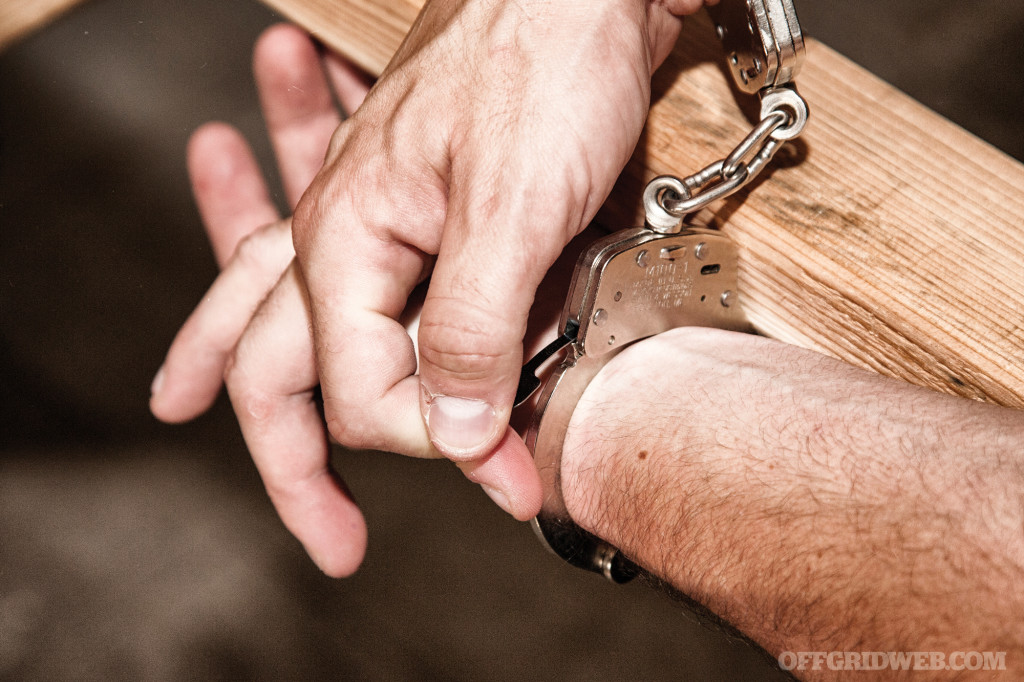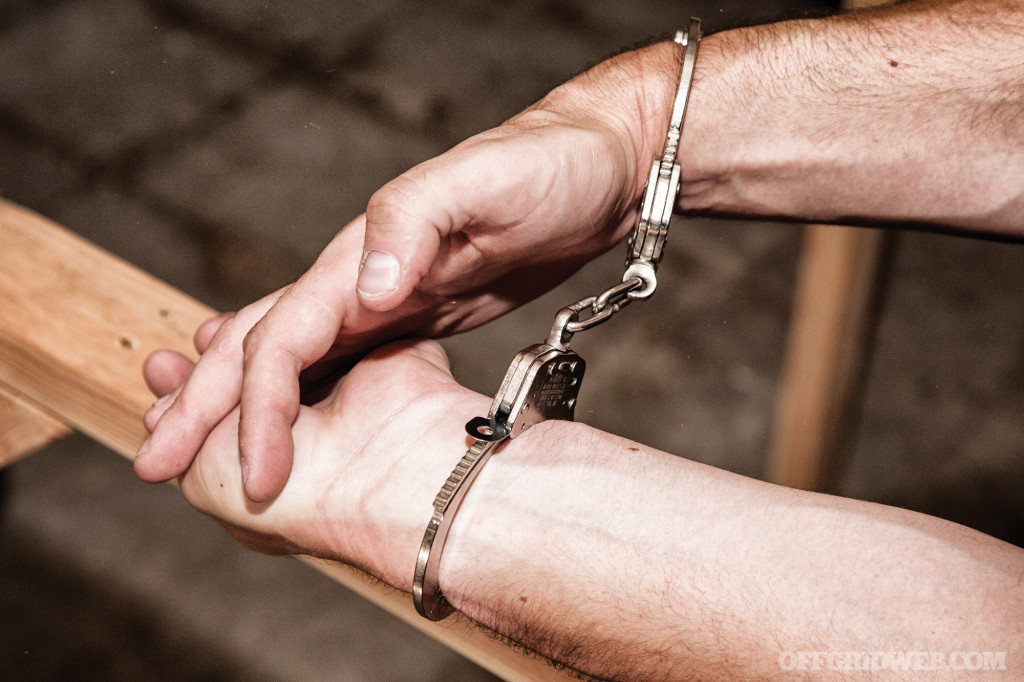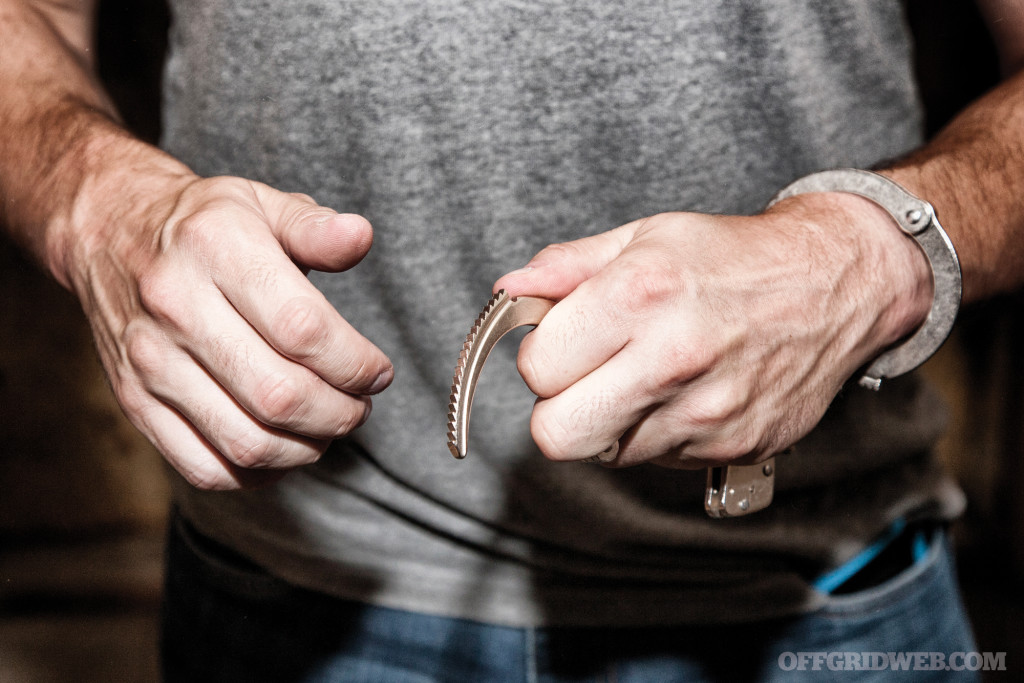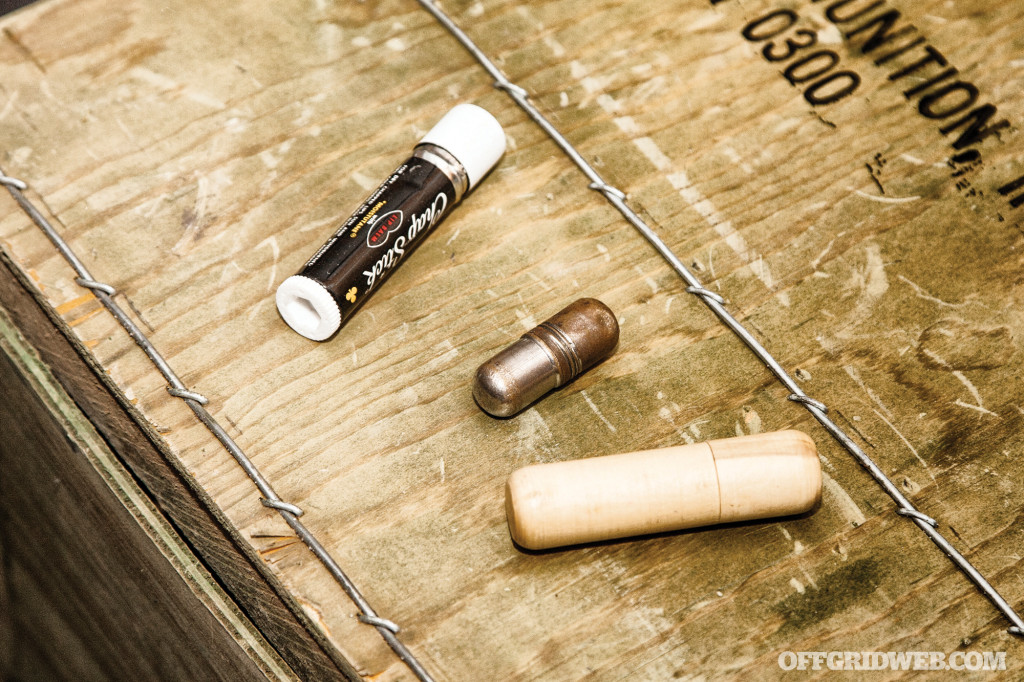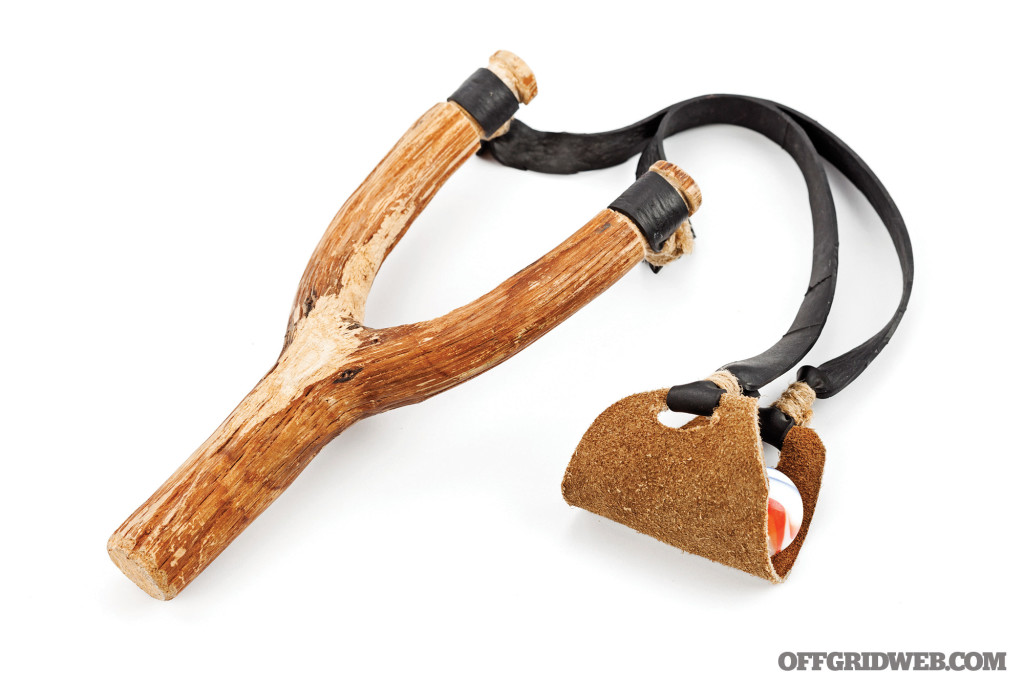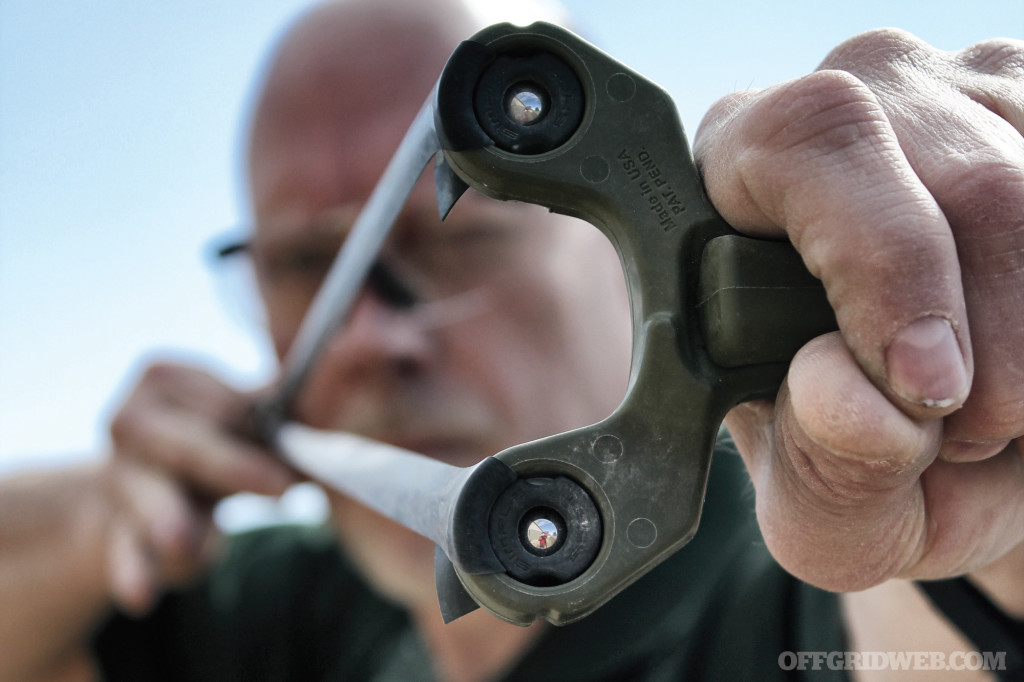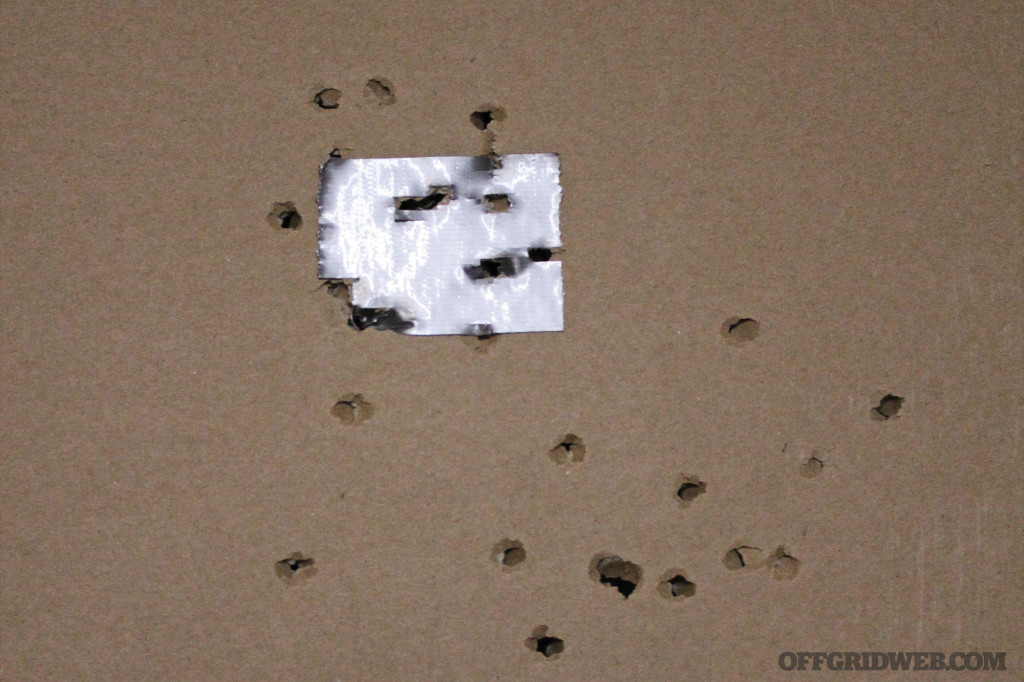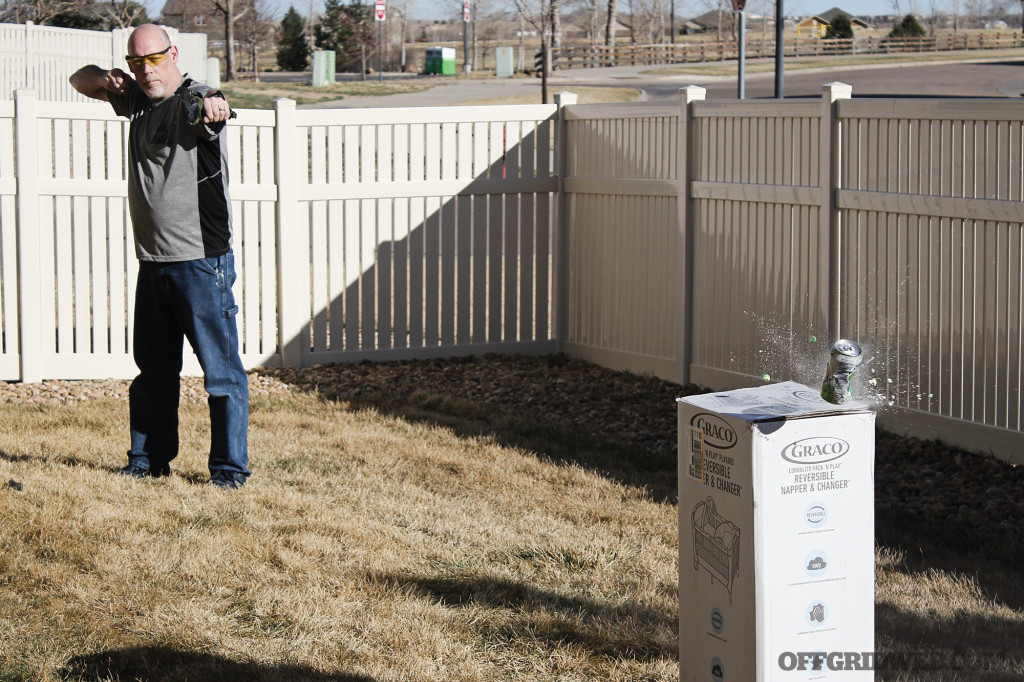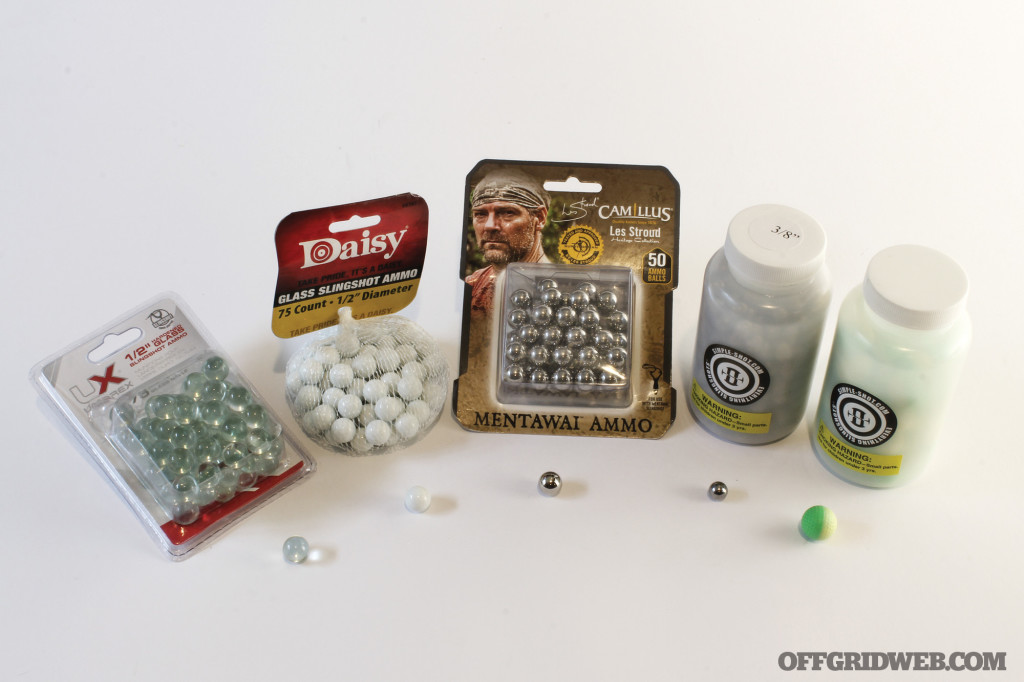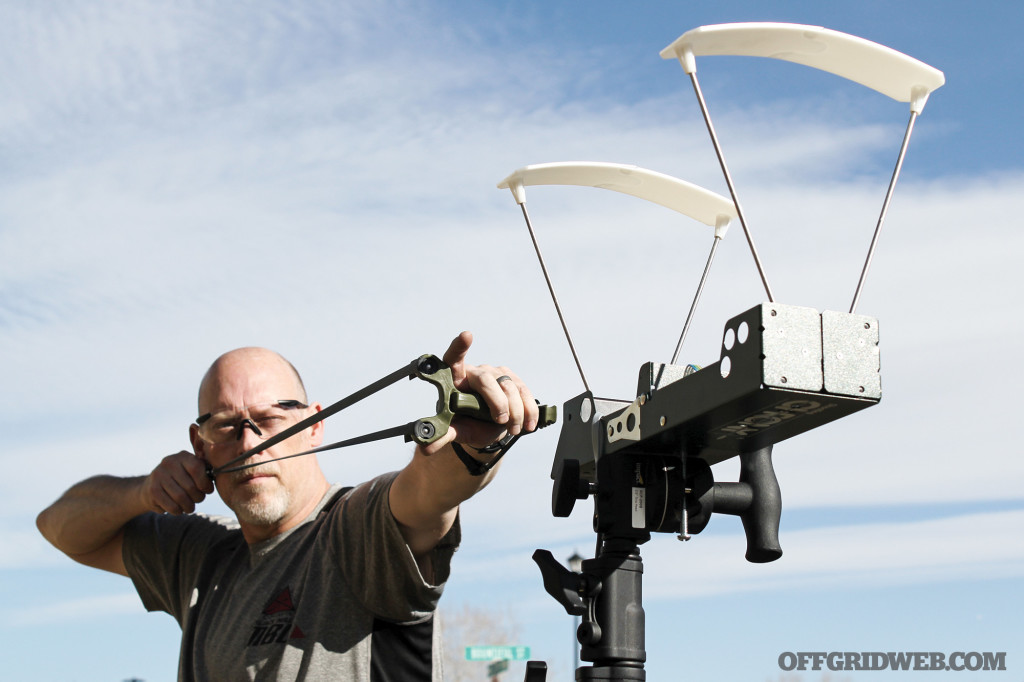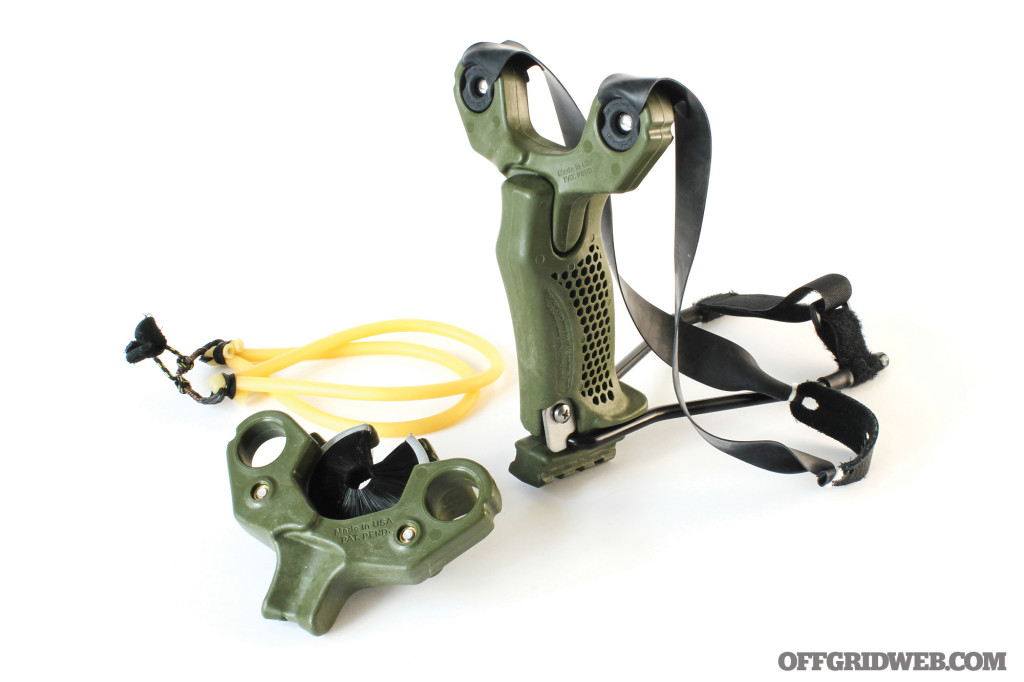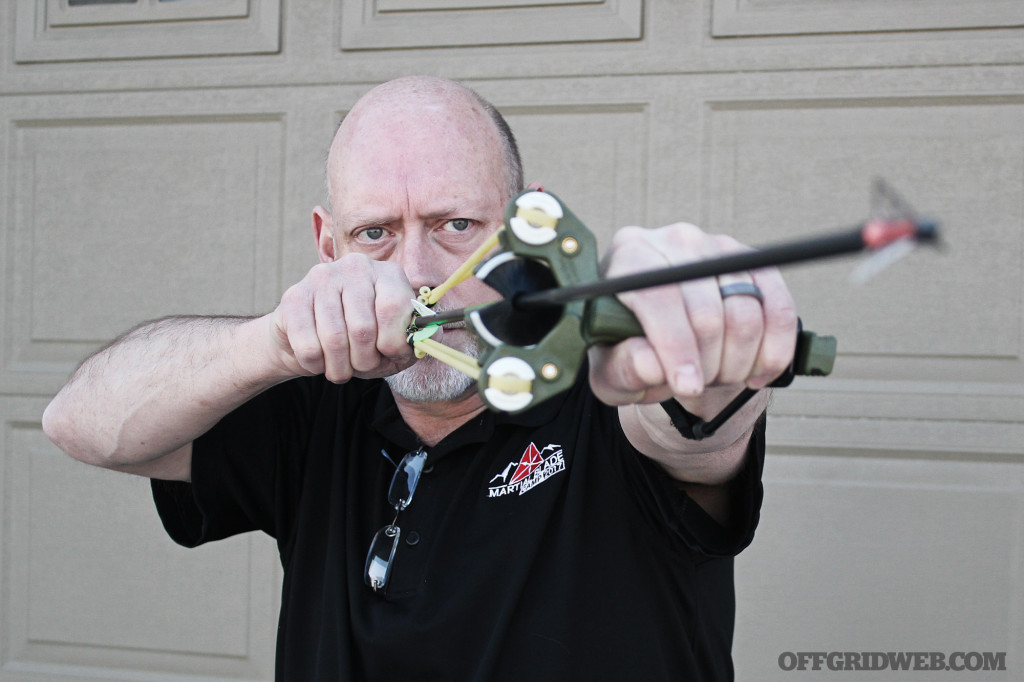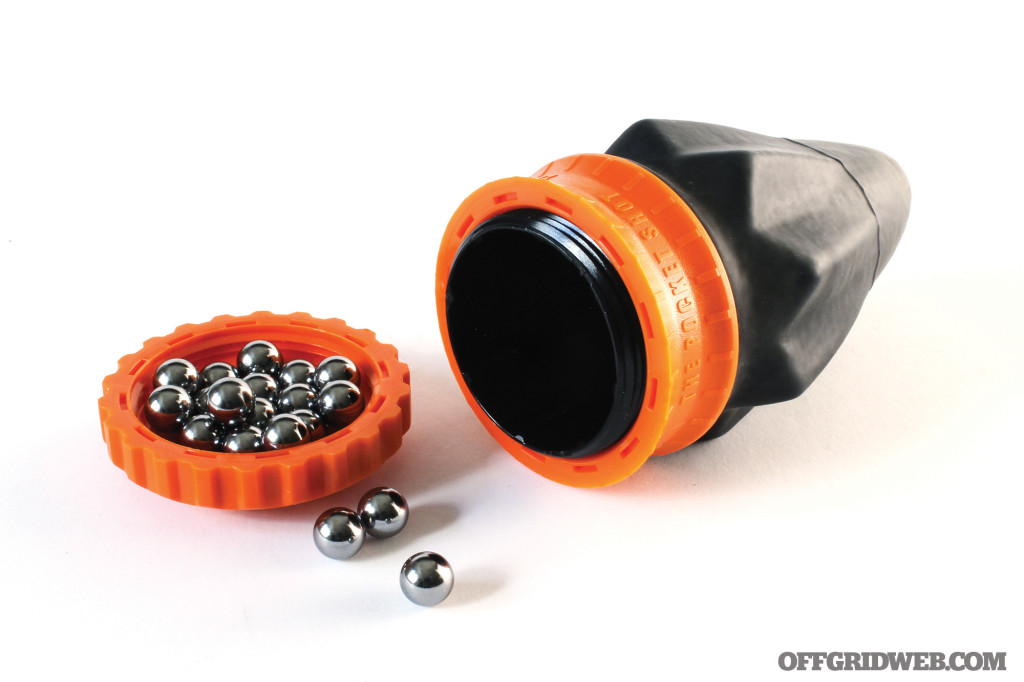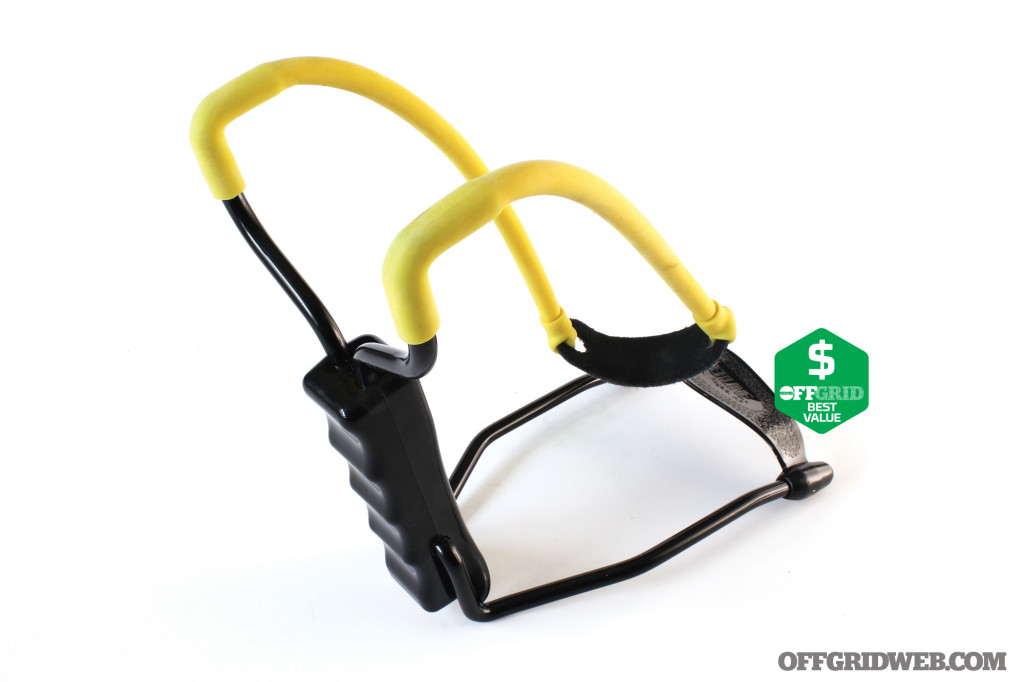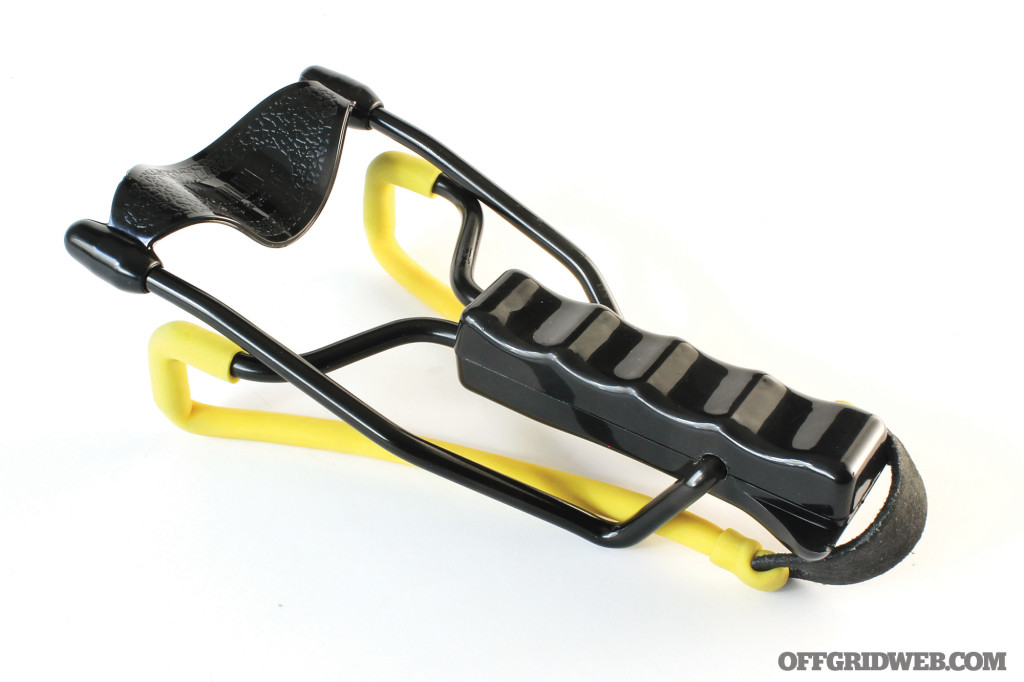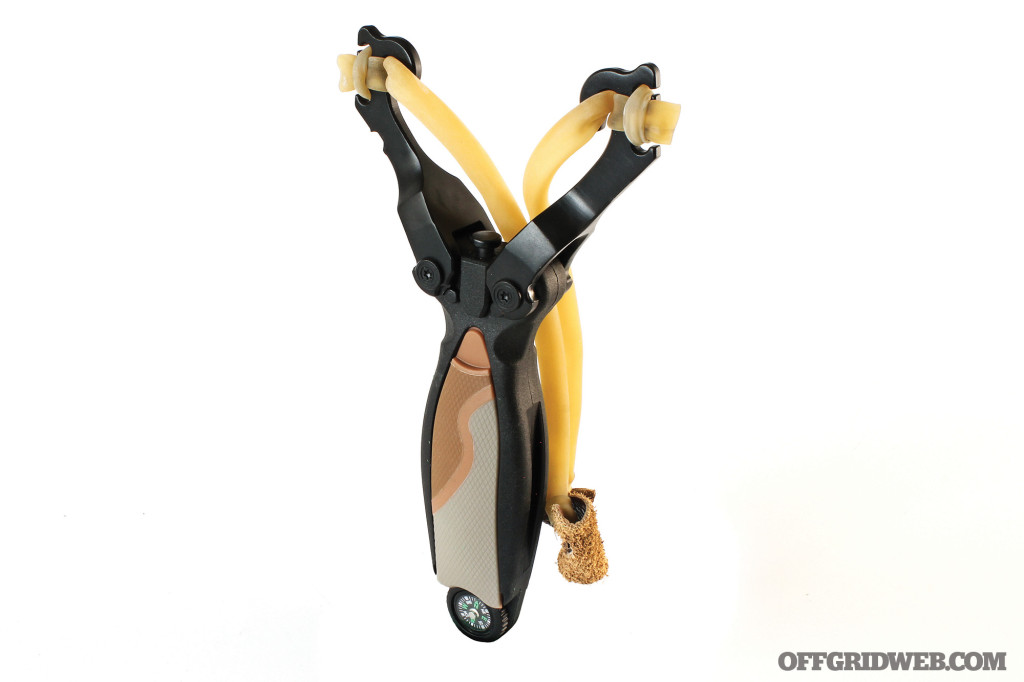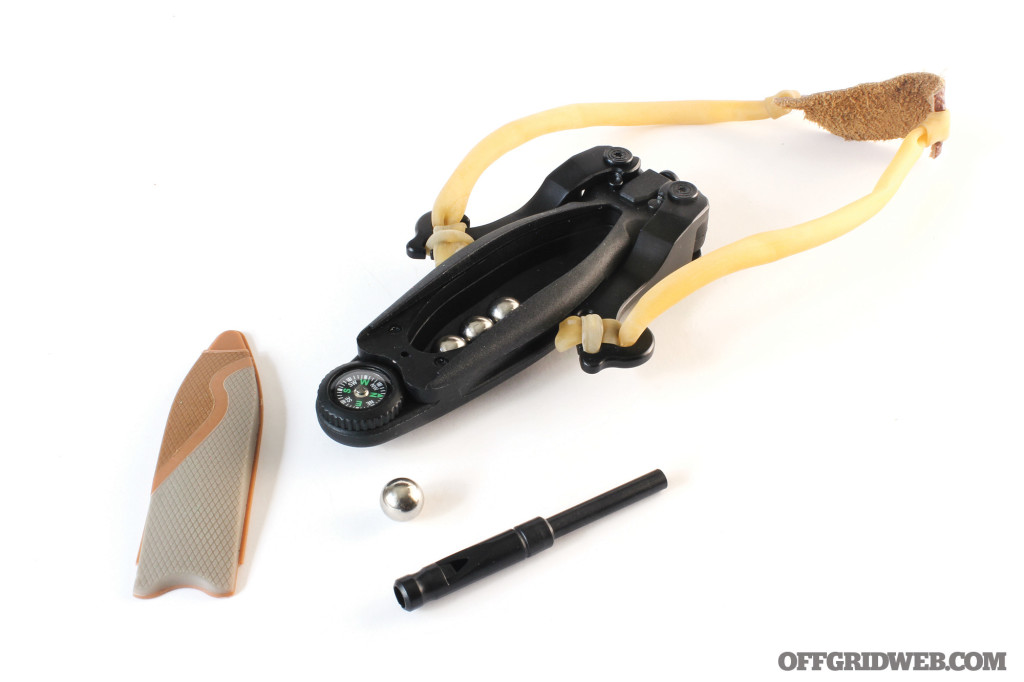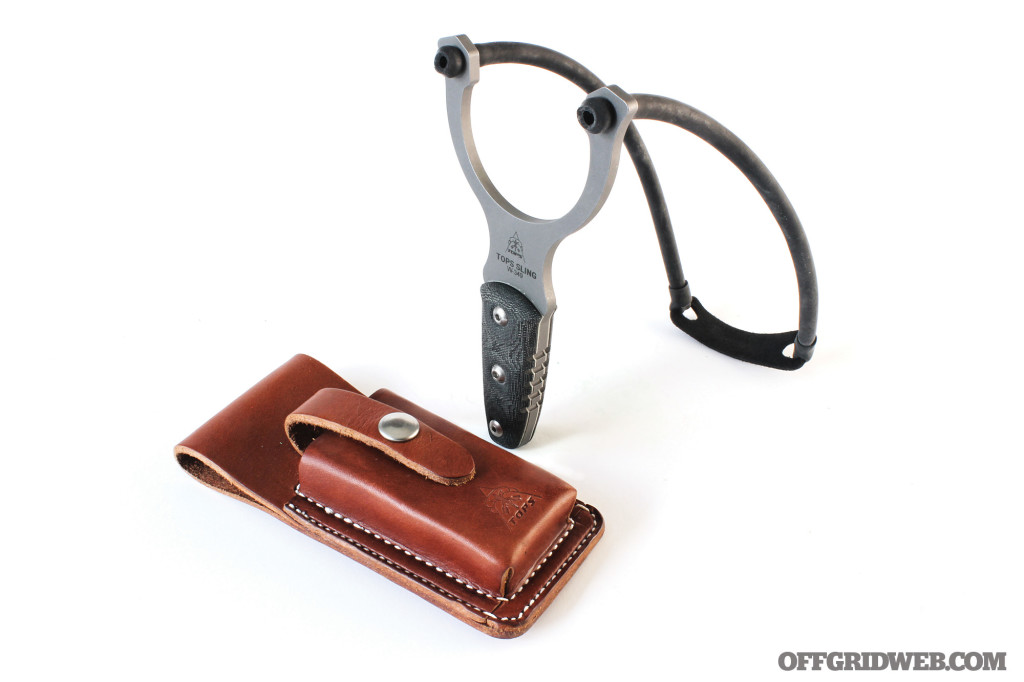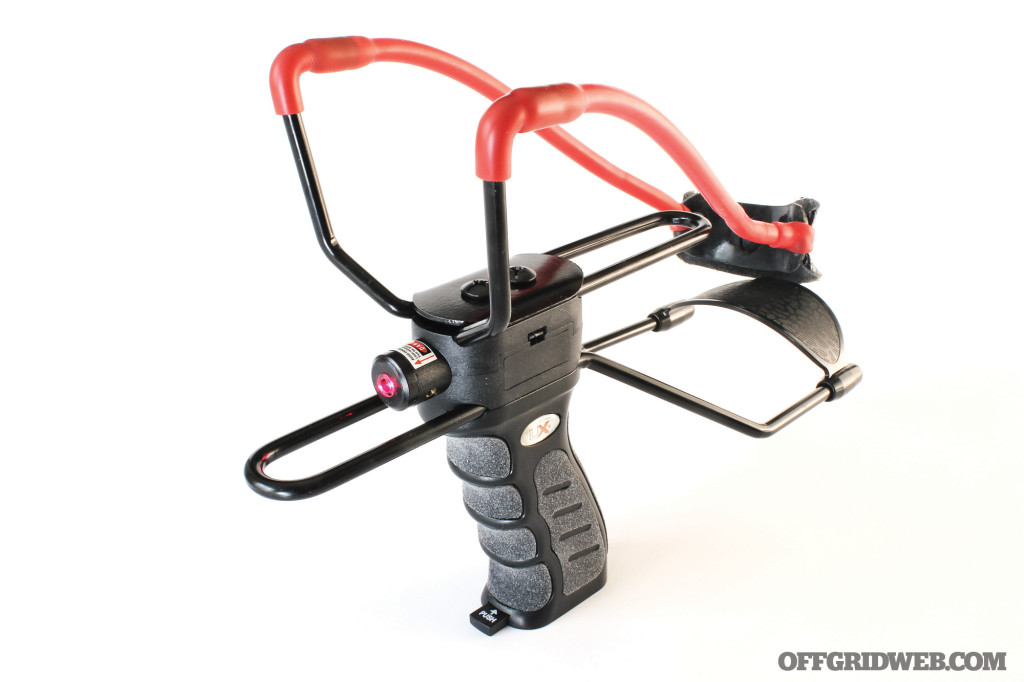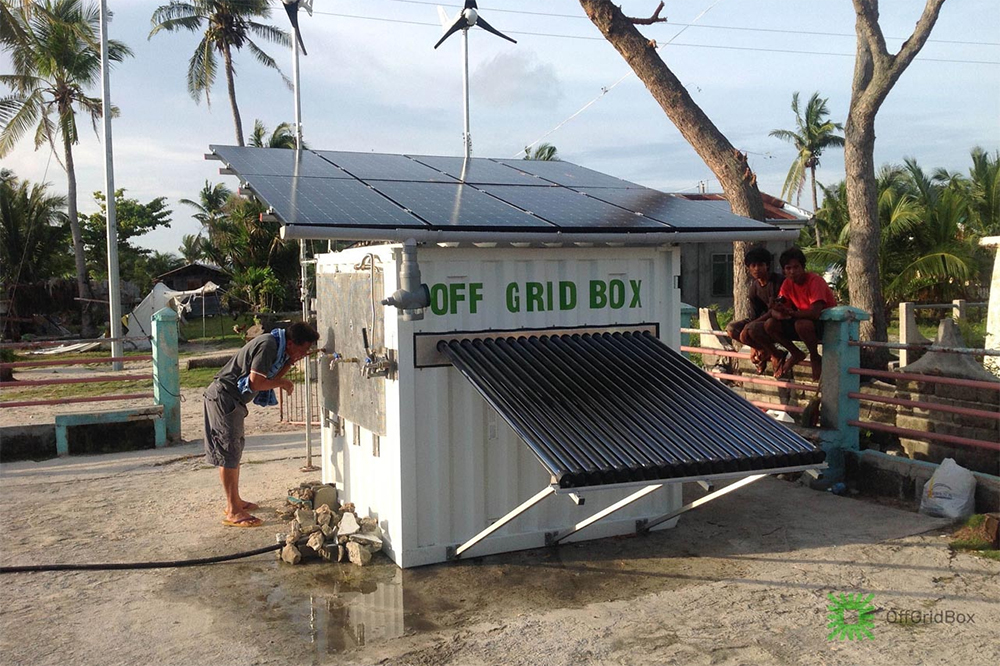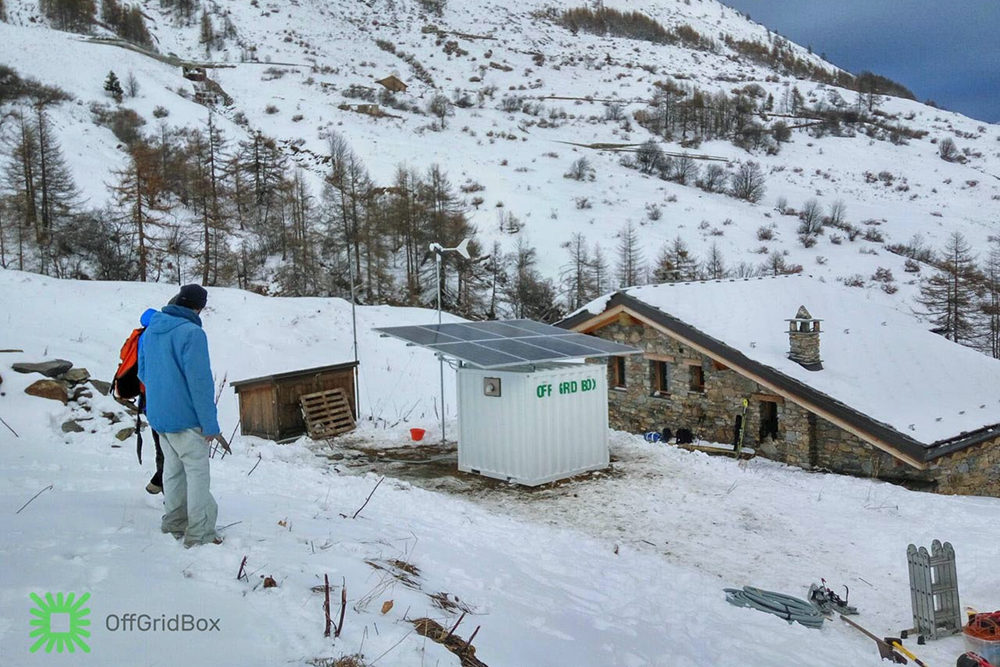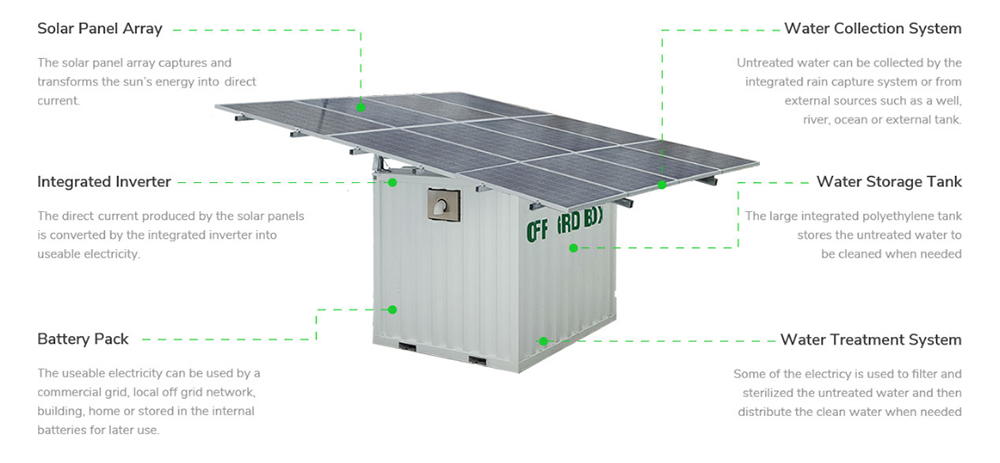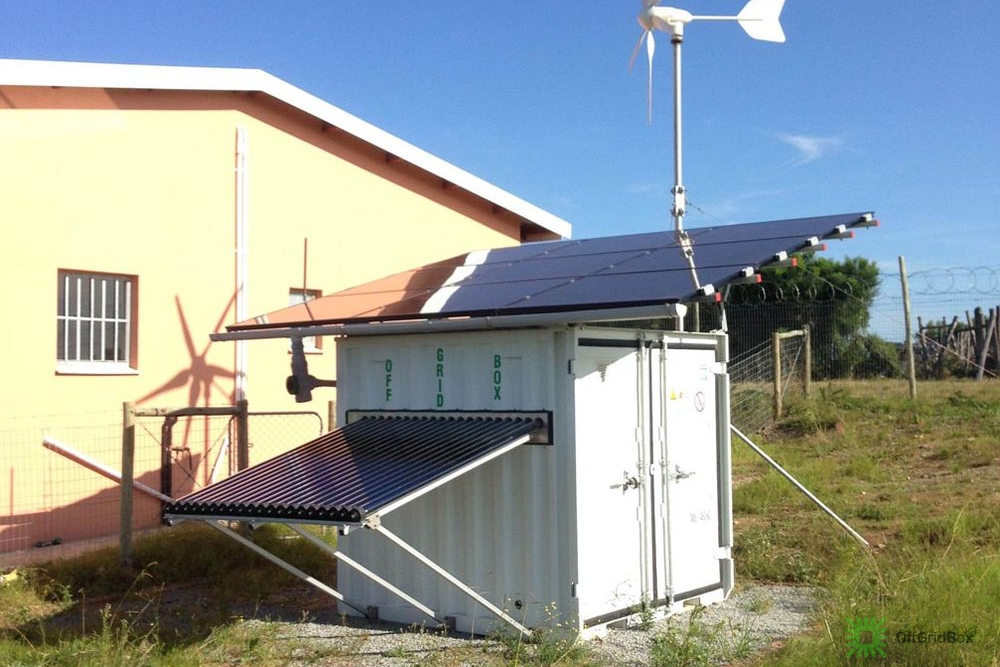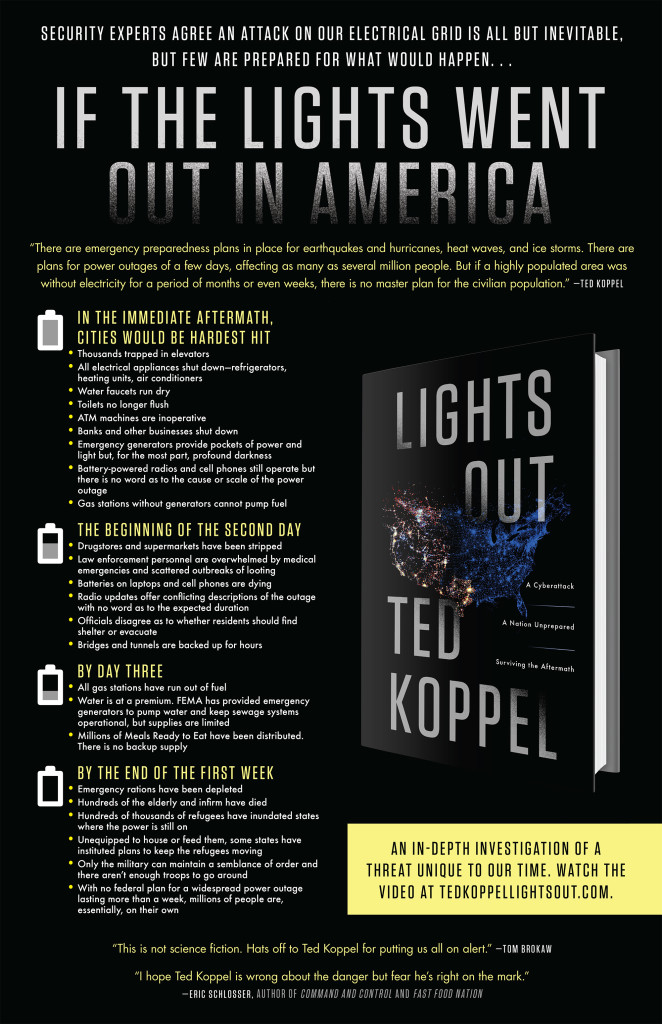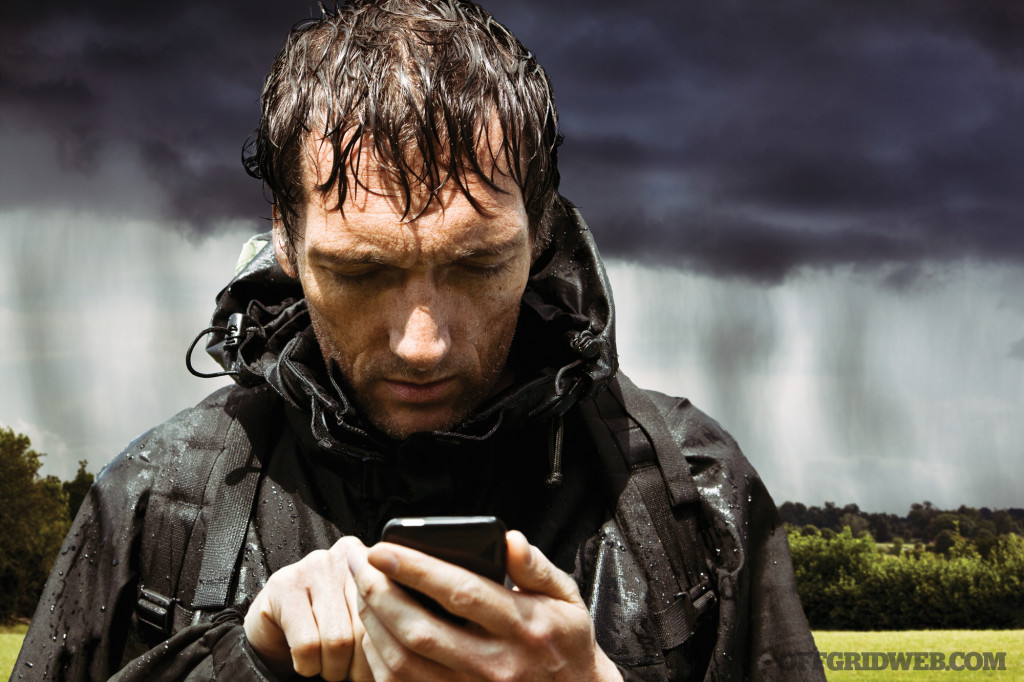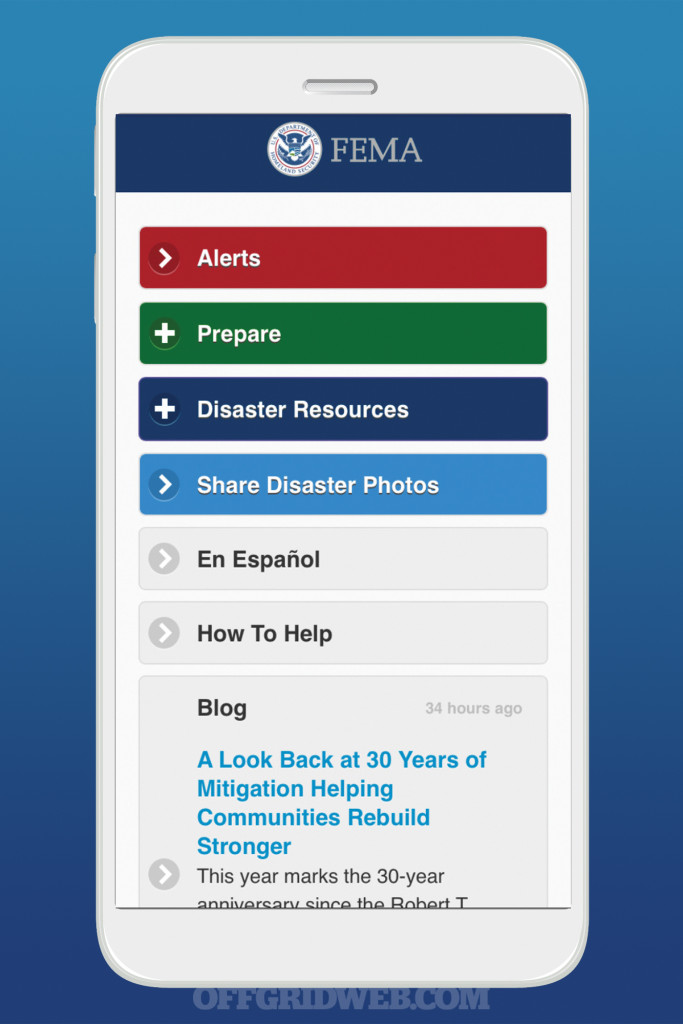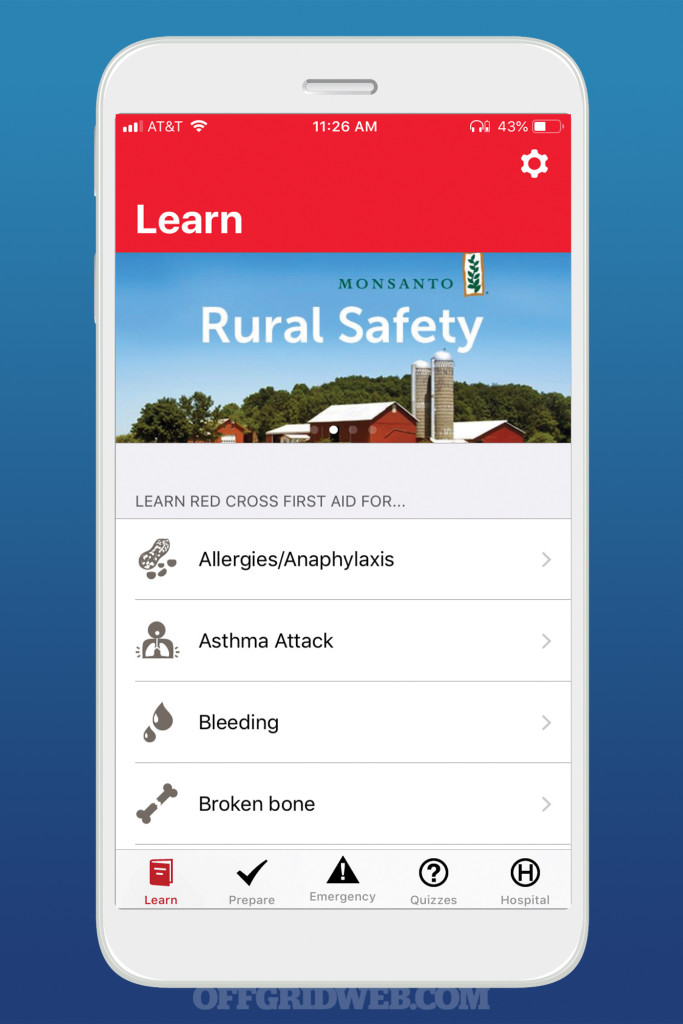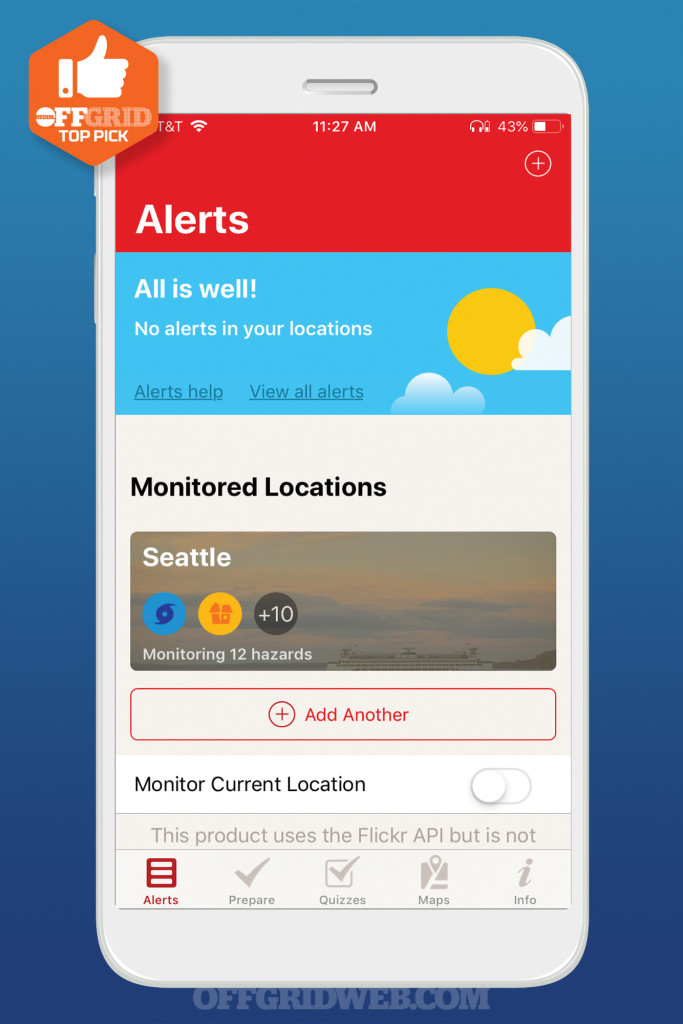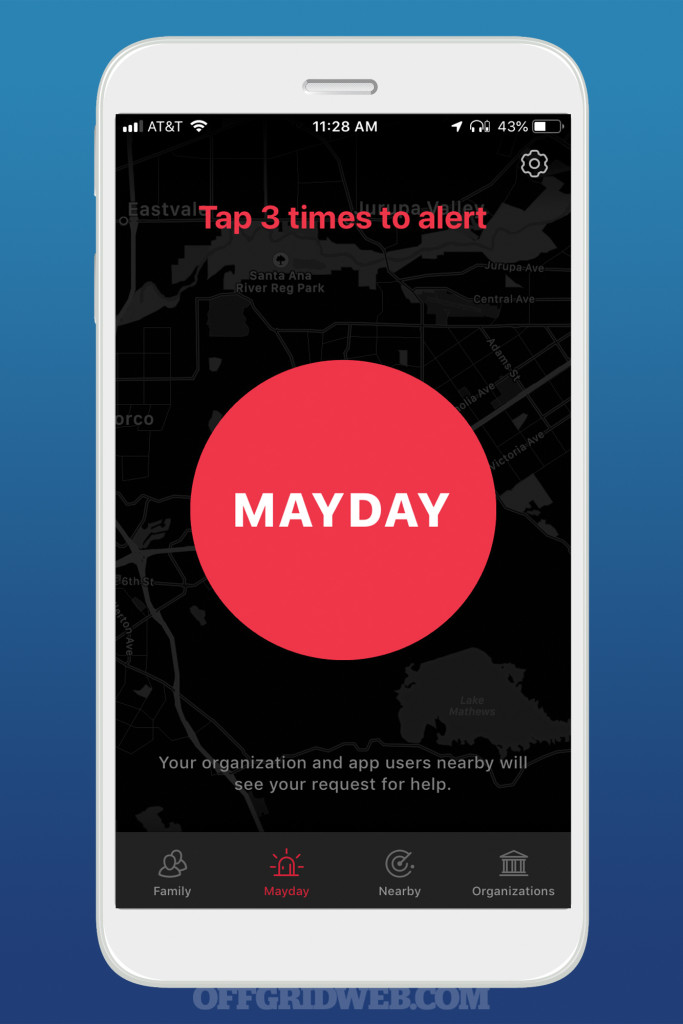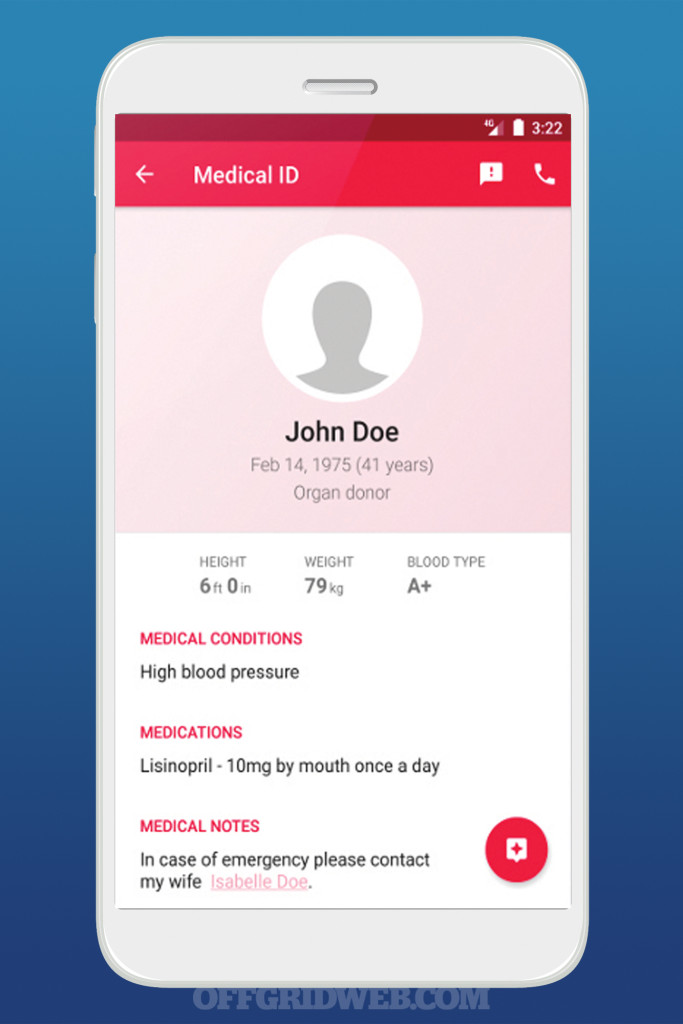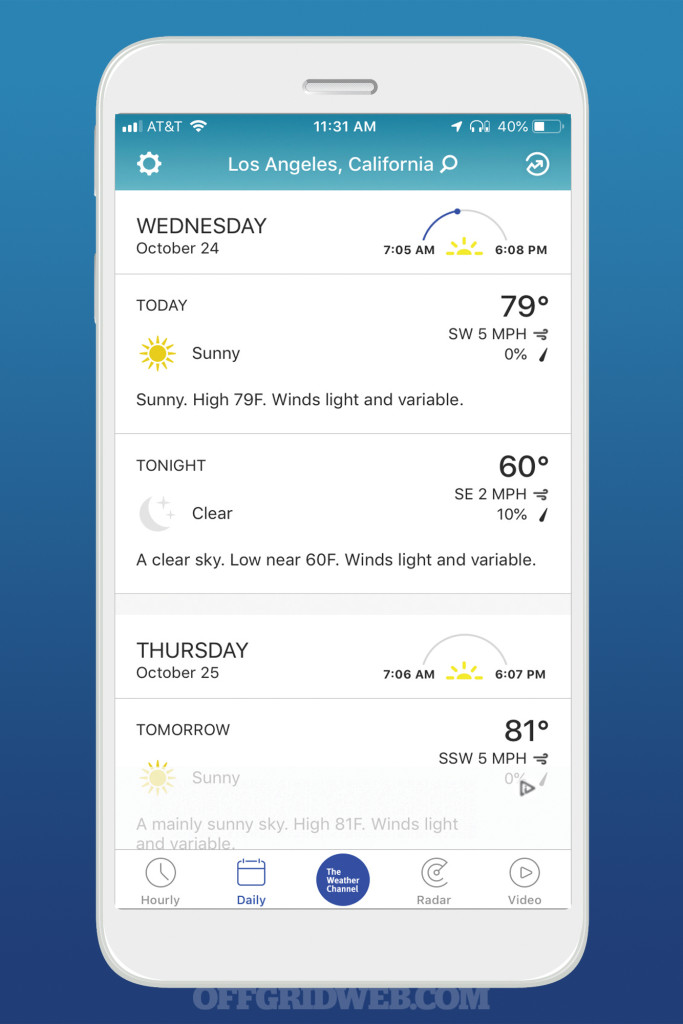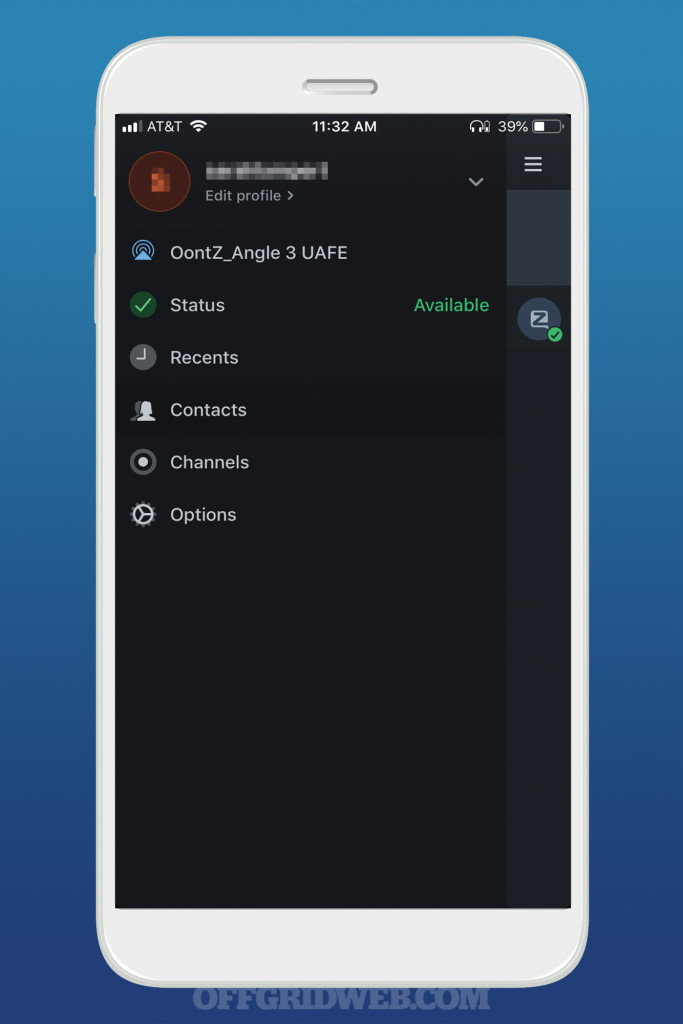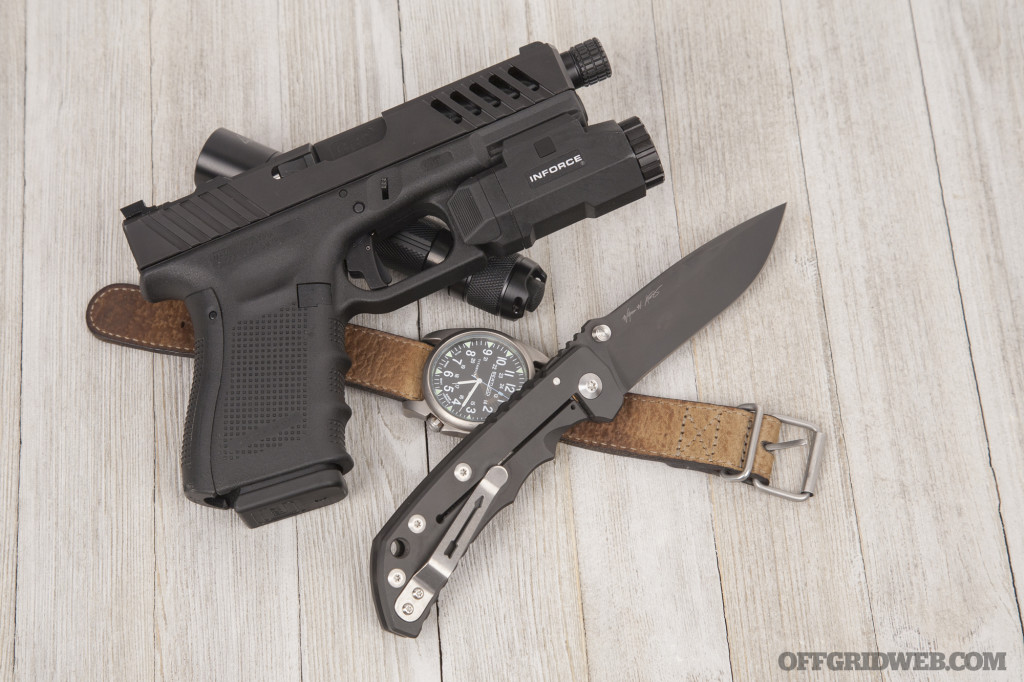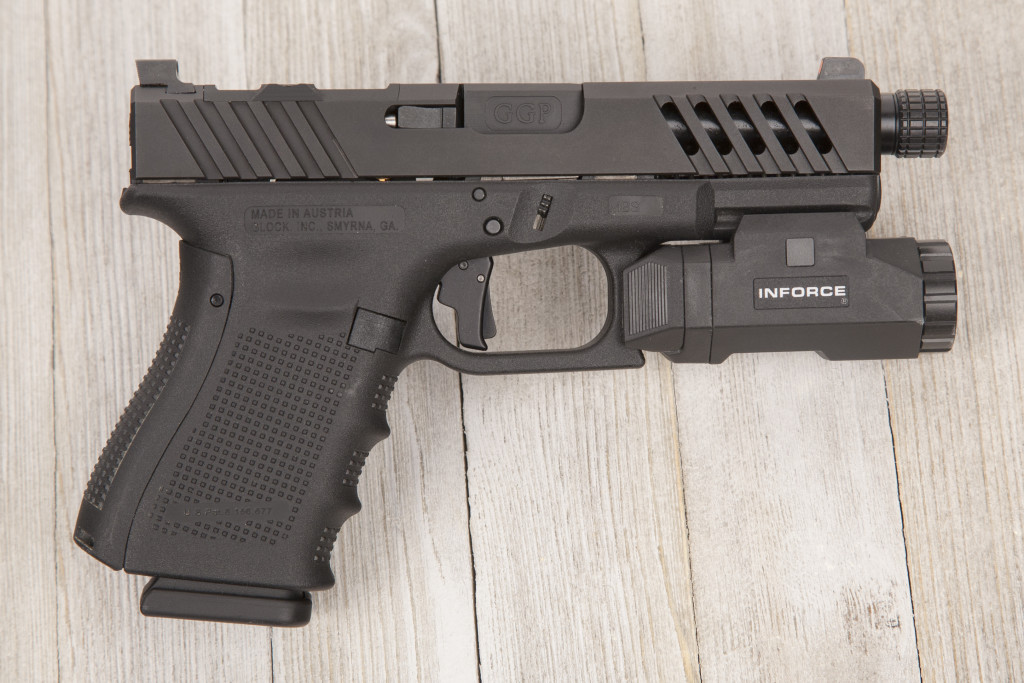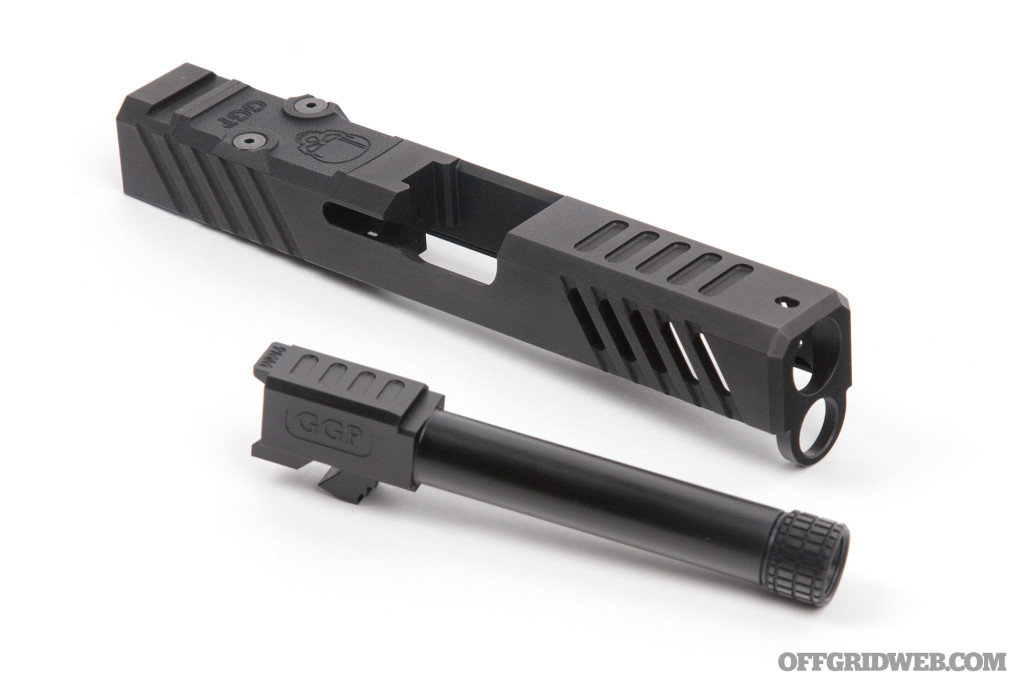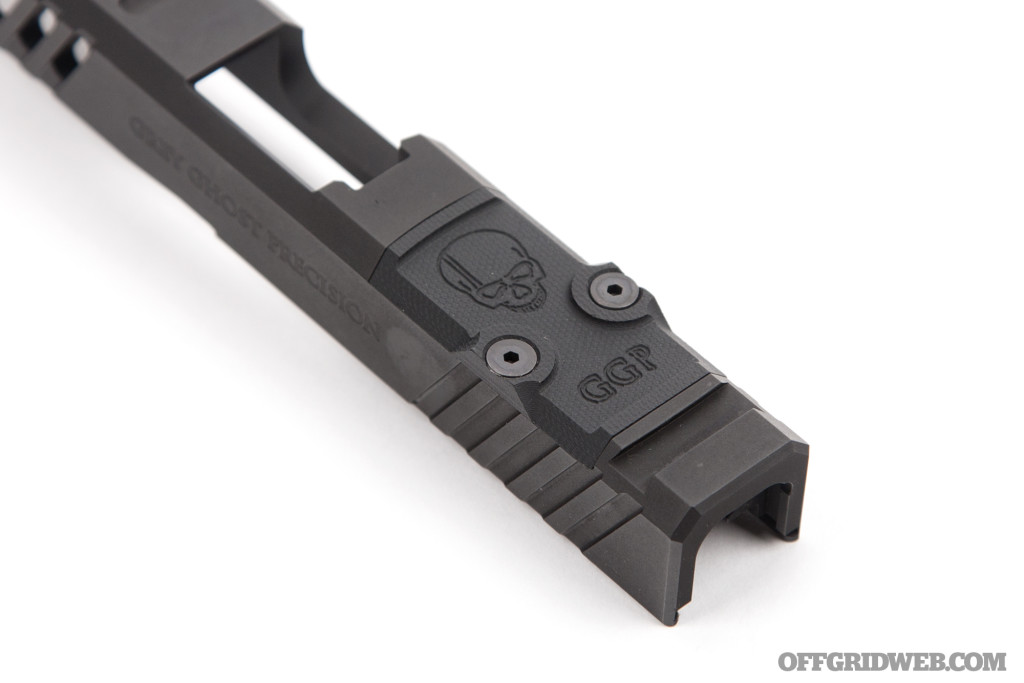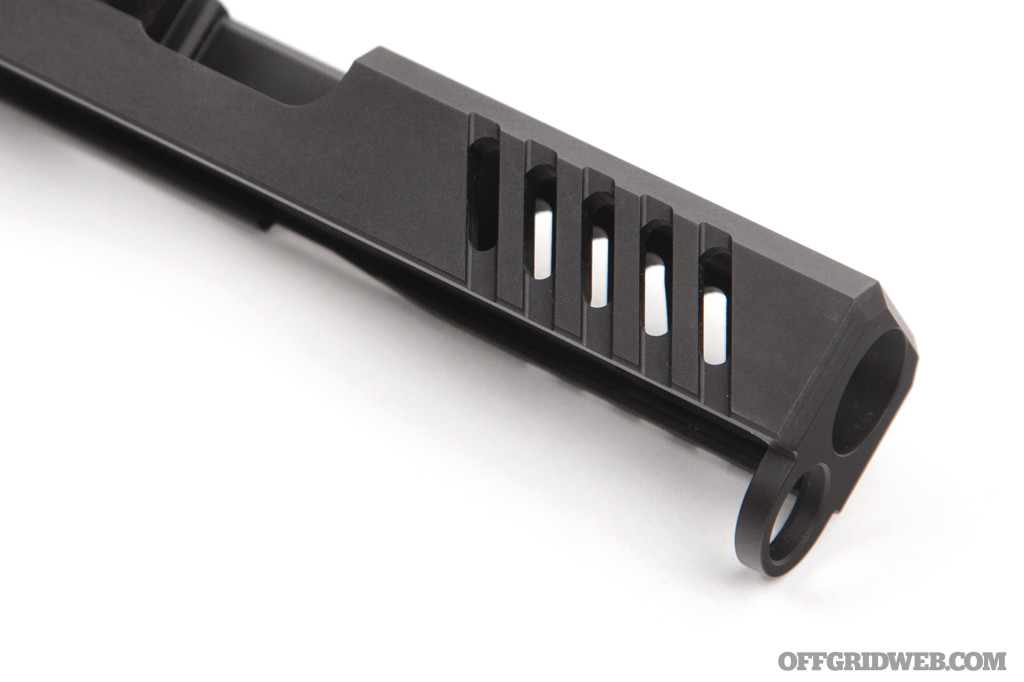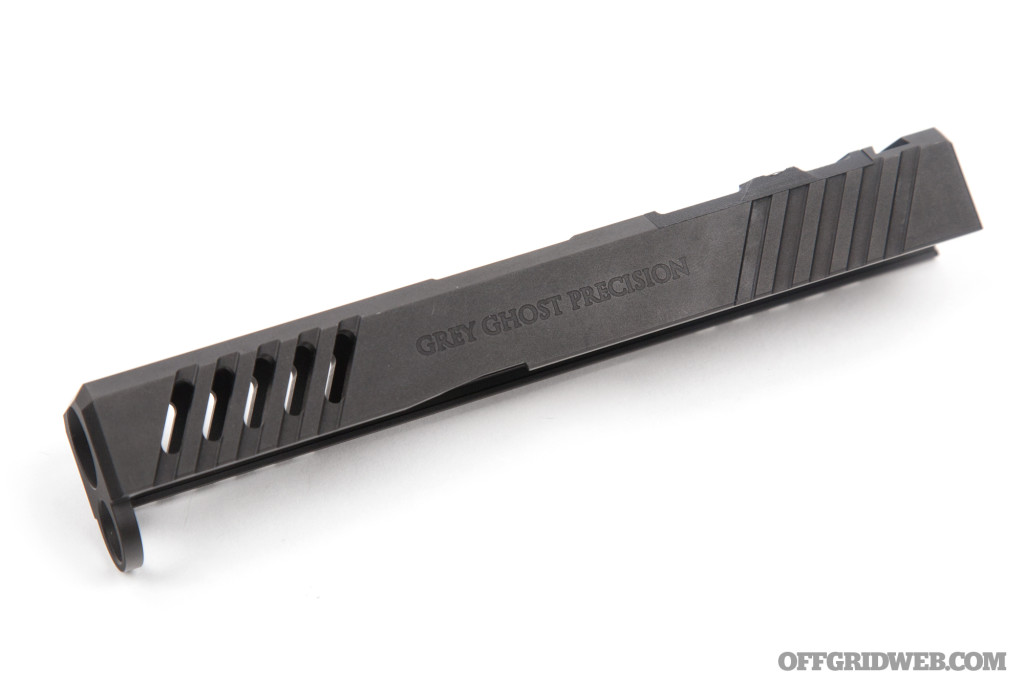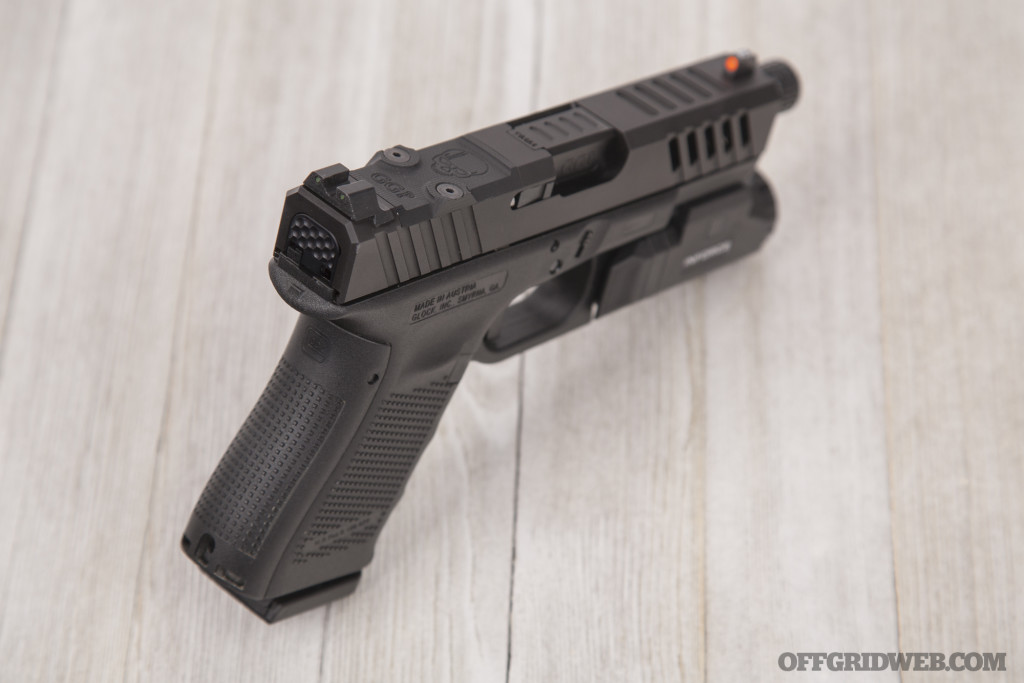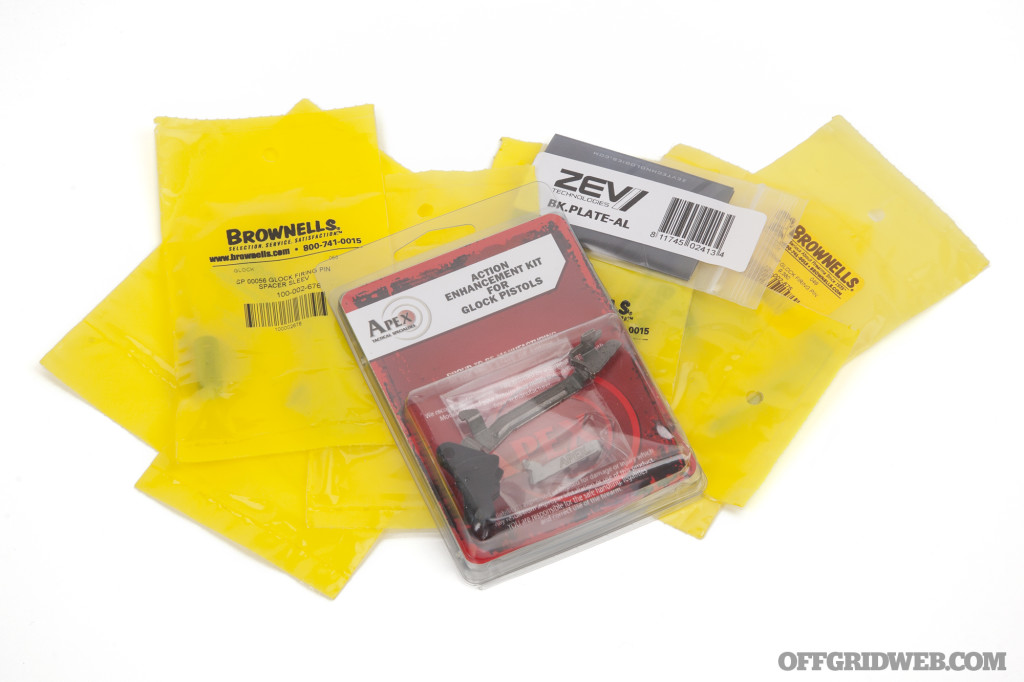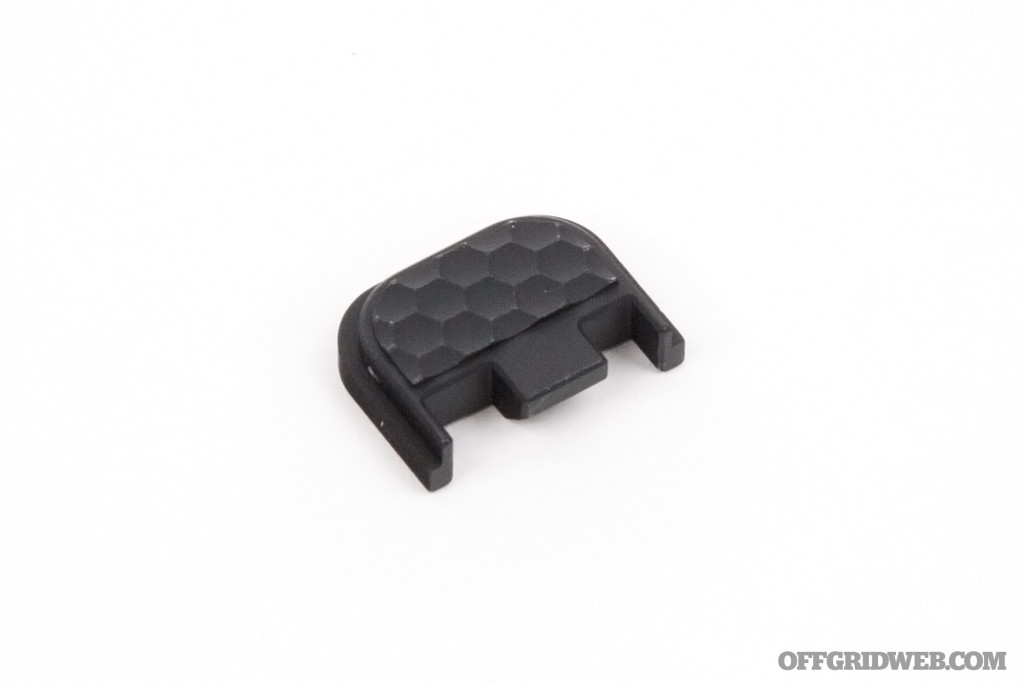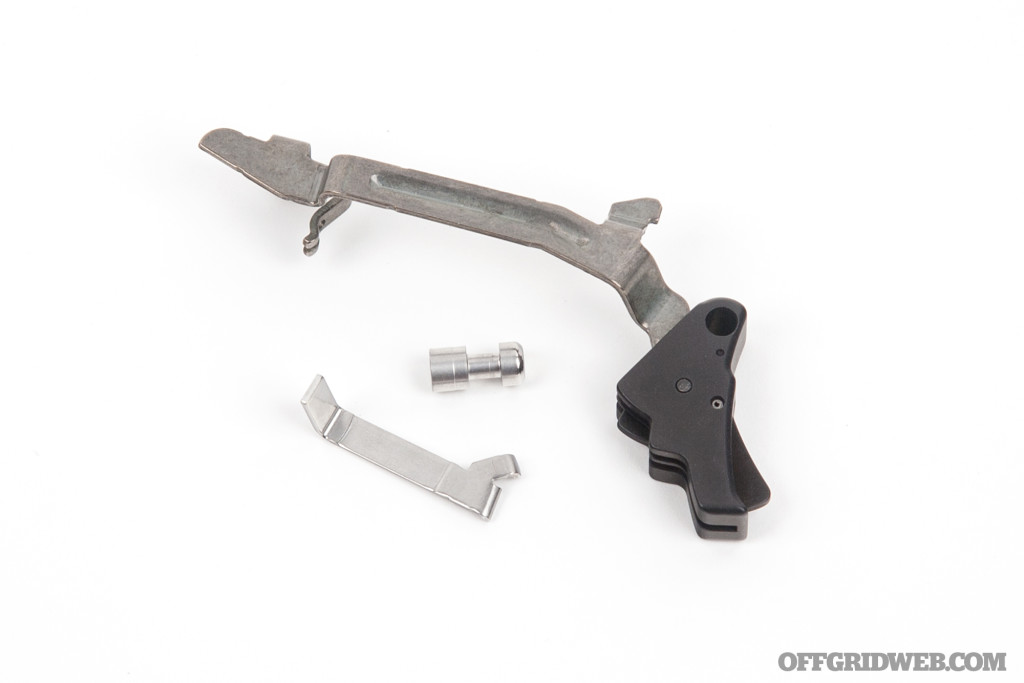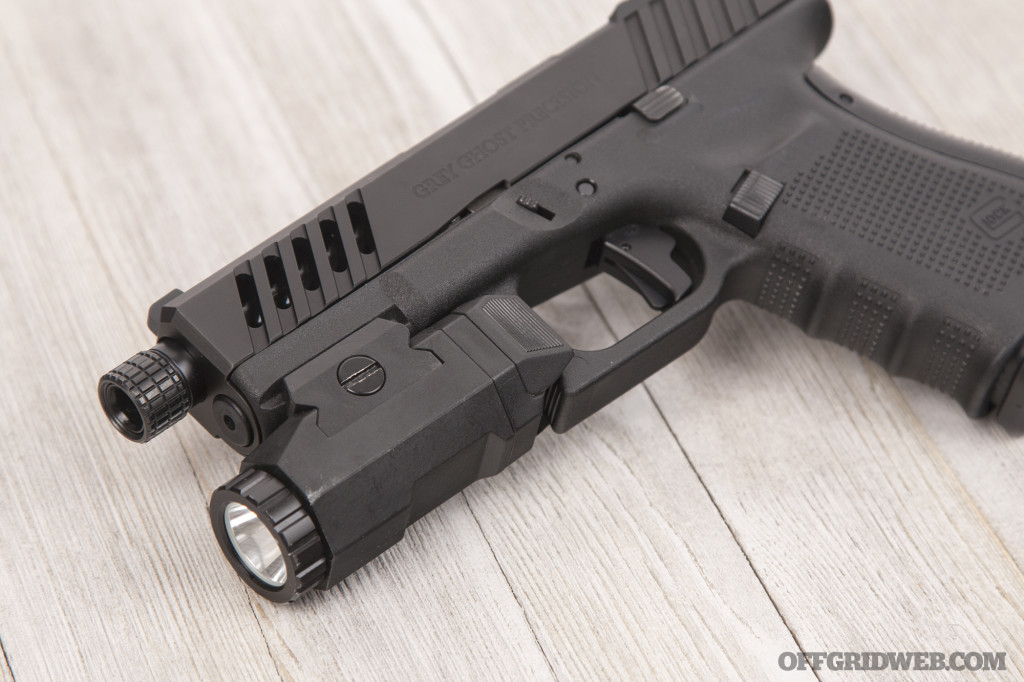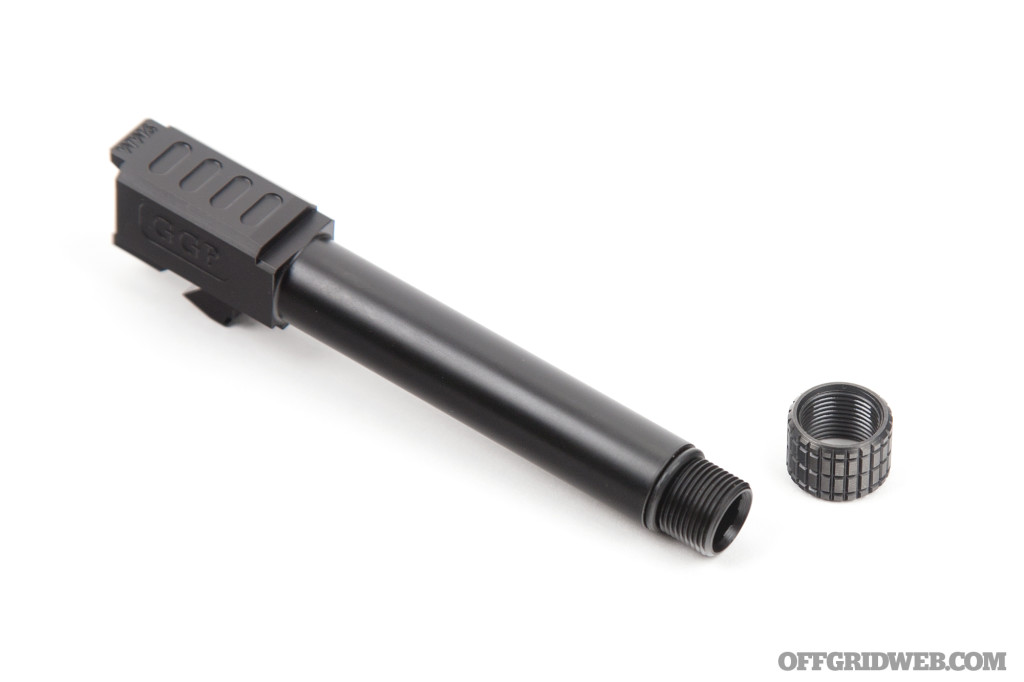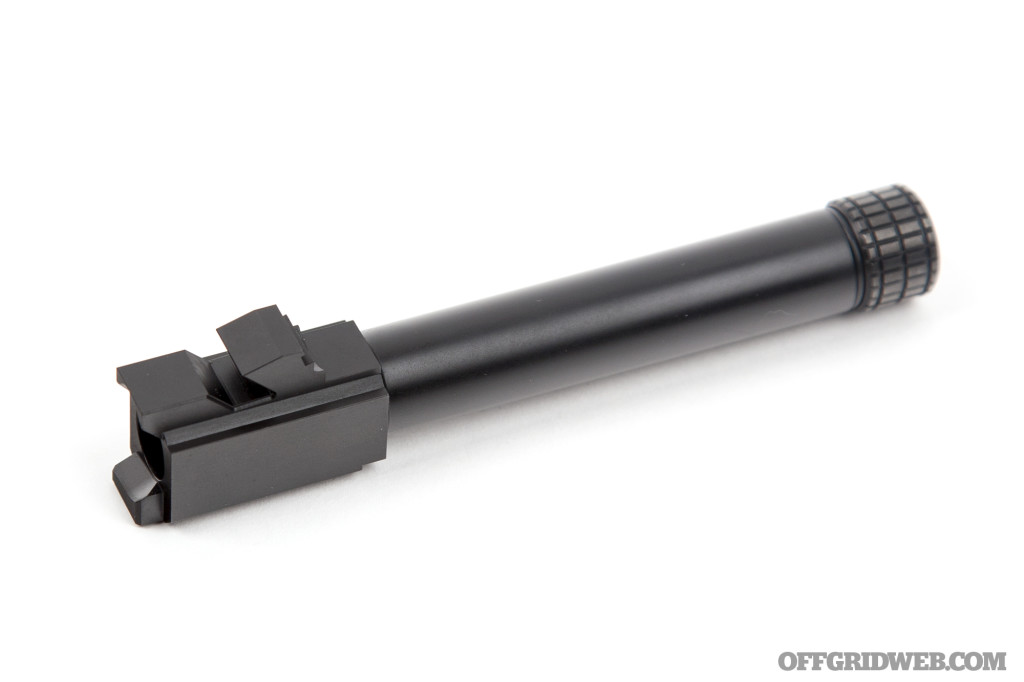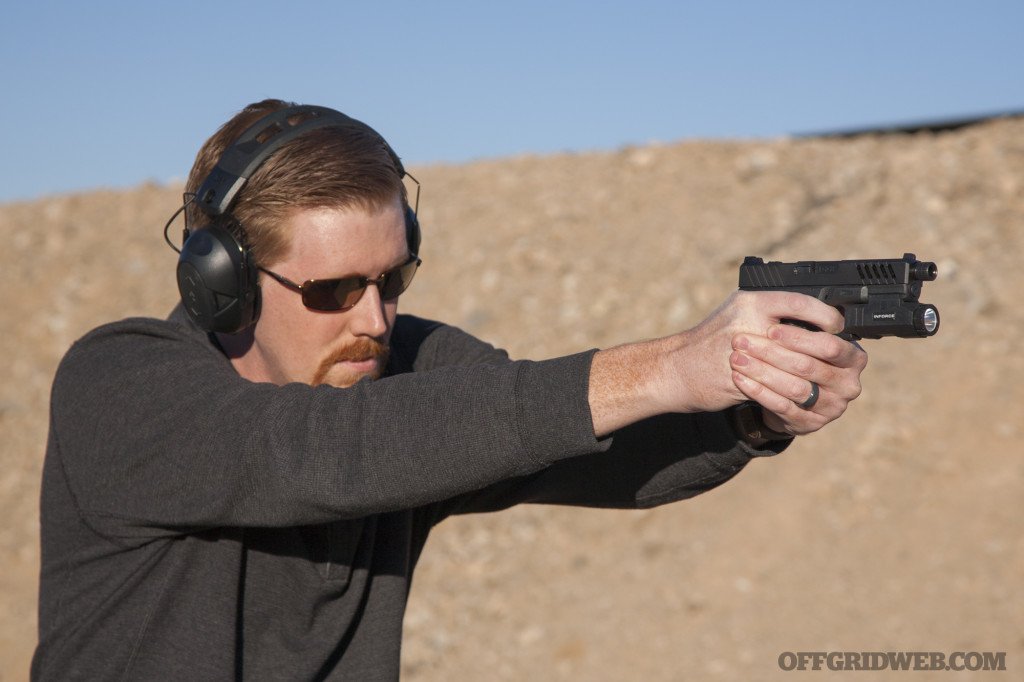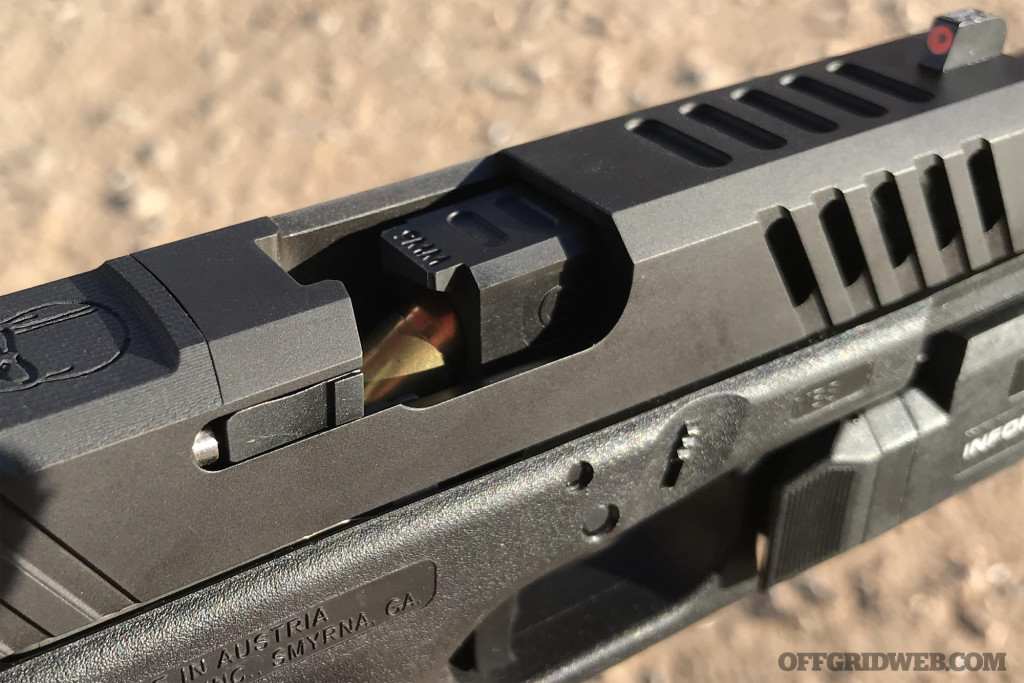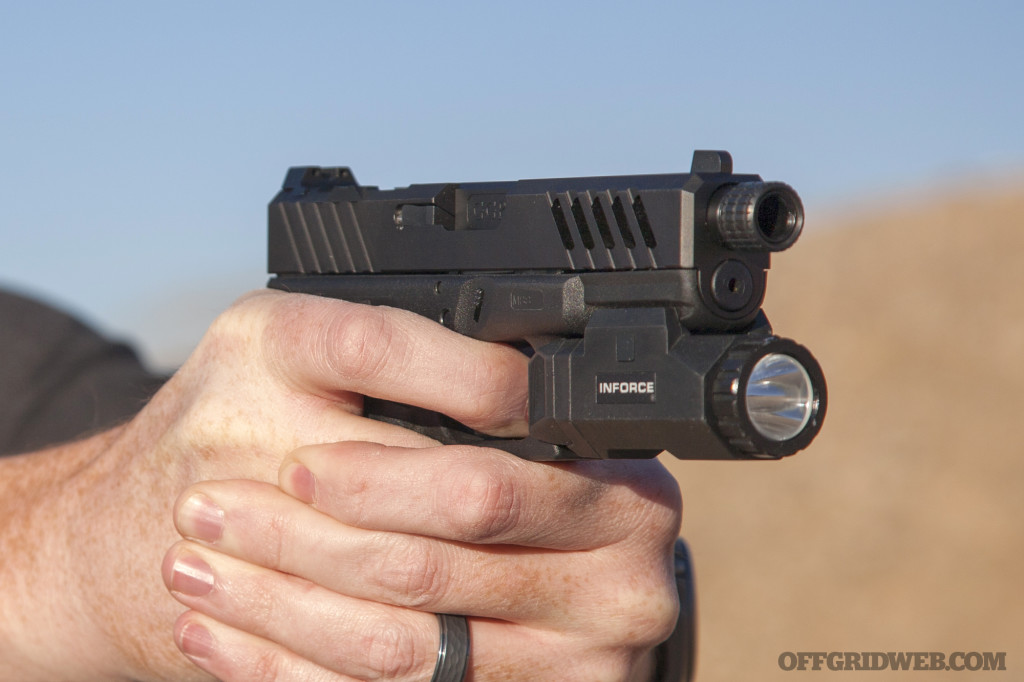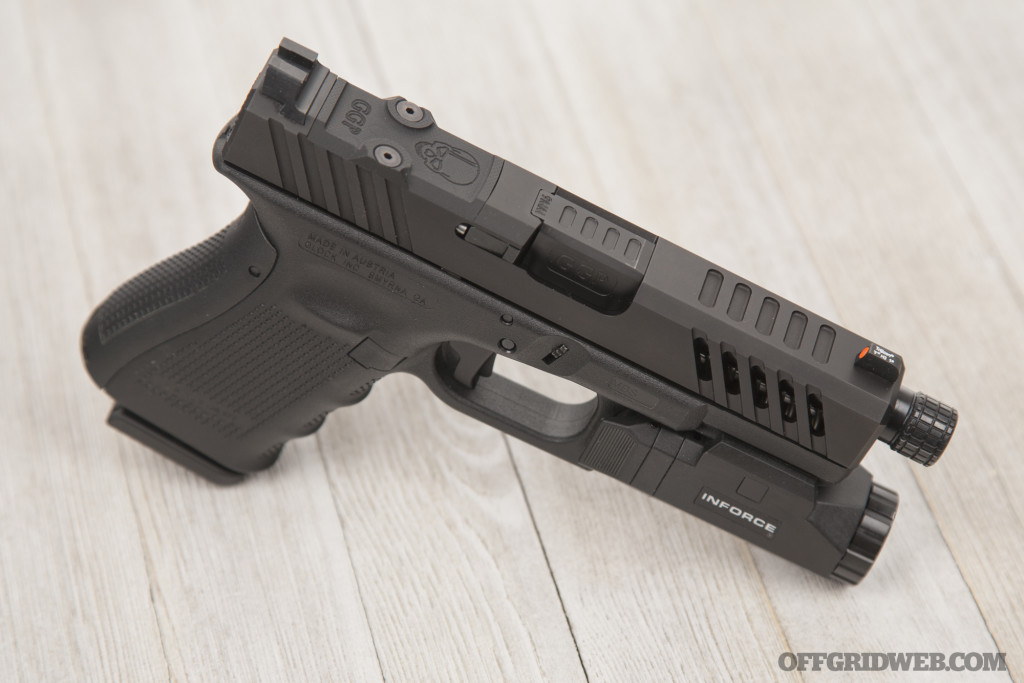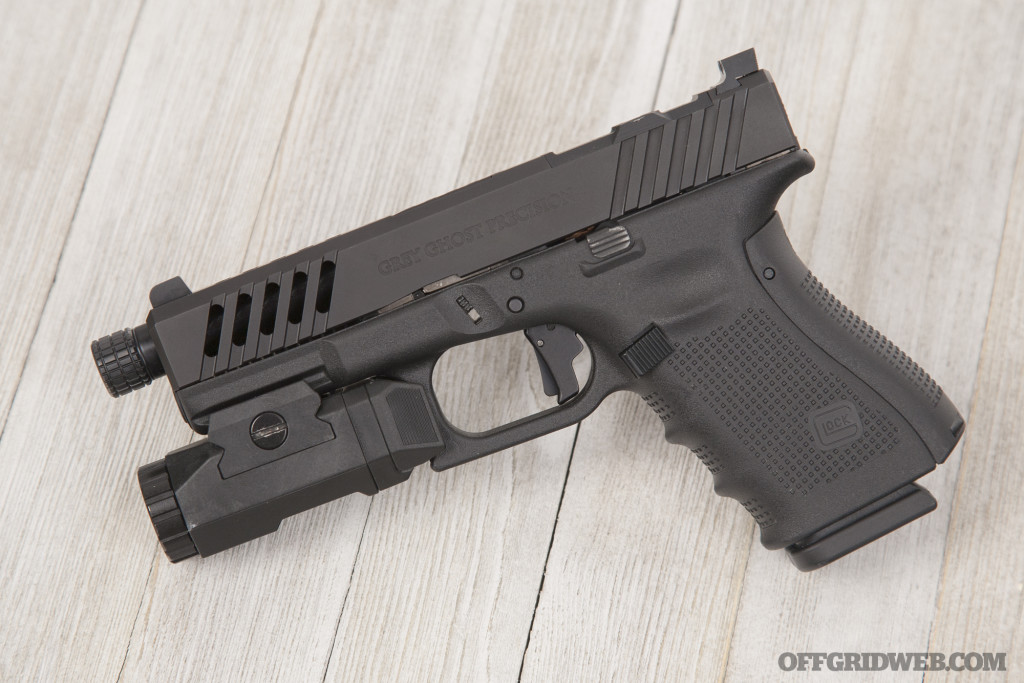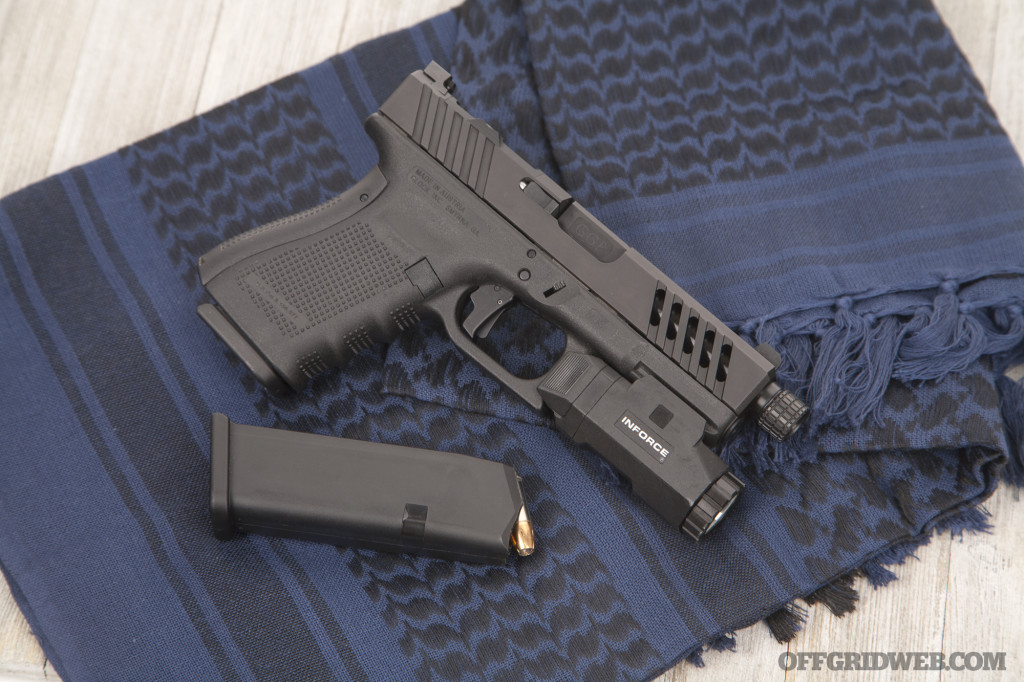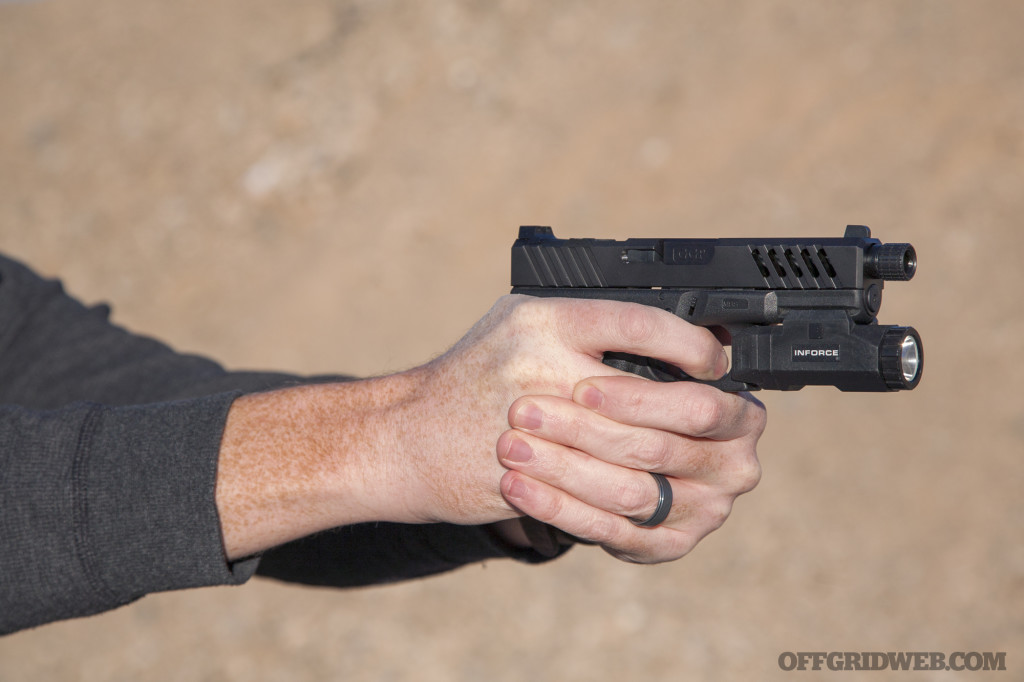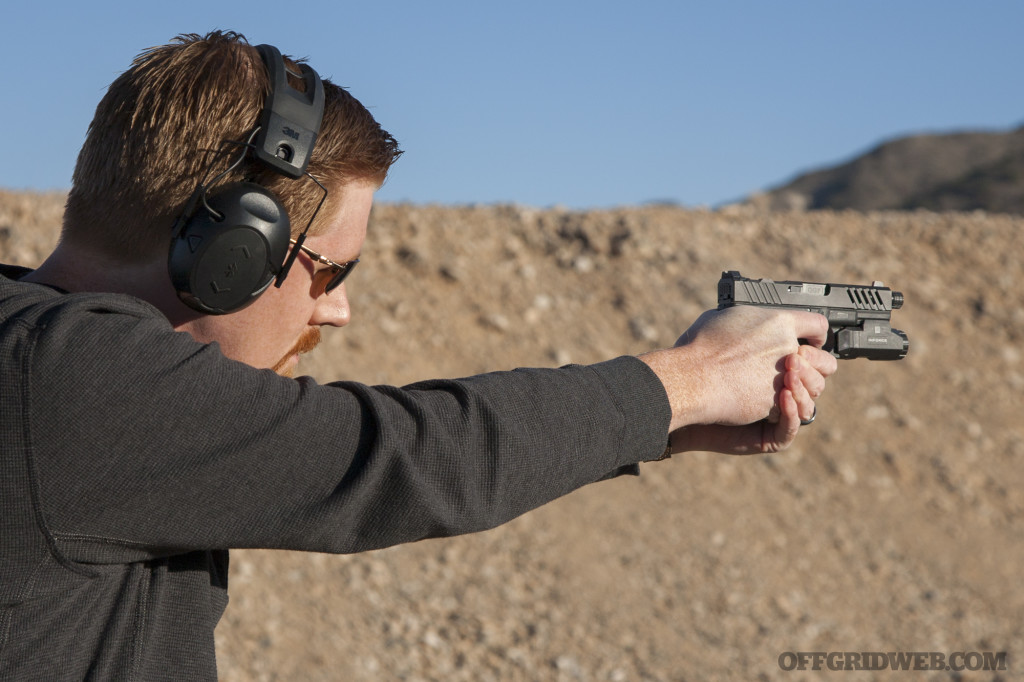Photos by Liz Leggett Photography
Looking at Doug Marcaida, you might think he’s an artist of some sort with a gallery on Rodeo Drive. He’s got that goatee, the suave hair, and the elegant demeanor. He’s articulate and refined. So what’s he doing swinging swords, axes, and knives on the History Channel’s Forged in Fire?
Forged in Fire (in case you’ve just emerged from your underground bunker) is a competition series with three judges (including Doug), one host, and four bladesmith contestants. Each episode focuses on forging a cutting tool or edged weapon from scratch. The winner walks away with a cool 10 grand in their pocket, and the episode’s championship title. How cool is that? Weapons, fire, forging, information, and fine edges are all displayed in full boob-tube brilliance. That explains why this year marks the fifth season, and even spawned a spin-off series titled Forged in Fire: Knife or Death.
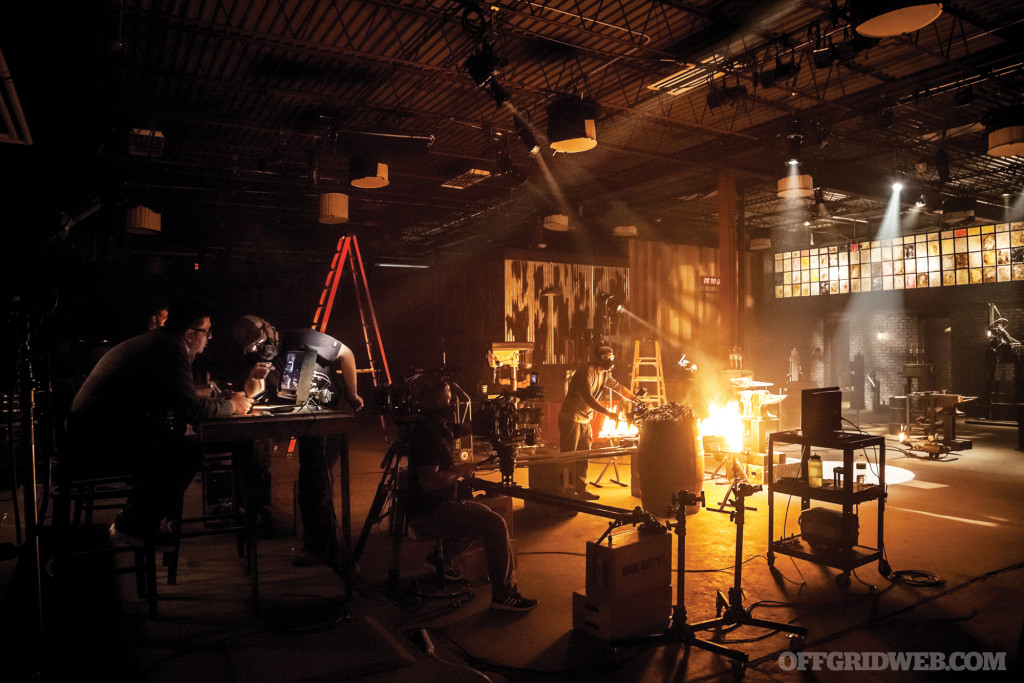
On the set of Forged in Fire.
Marcaida’s involvement in the show involves pressure testing the weapons and evaluating each blade for combat effectiveness. As a master of the Filipino art of Kali, he’s a natural for handling edged weapons. We recently caught up with Doug between filming episodes and cut straight to the chase with his observations of the hit show, what martial arts he secretly wants to study, and his attitude toward survival.
Our Interview with Doug Marcaida
RECOIL OFFGRID: How did you get hooked up with Forged in Fire?
Doug Marcaida: I got a call from their casting producer who found me through my YouTube videos. They were looking for an end user of edged weapons to be a judge on the show.
What’s the filming schedule like?
DM: It’s taken over my time. We film an average of 30 to 40 episodes spread out through the year and about a week per episode … so, it’s drawn out.
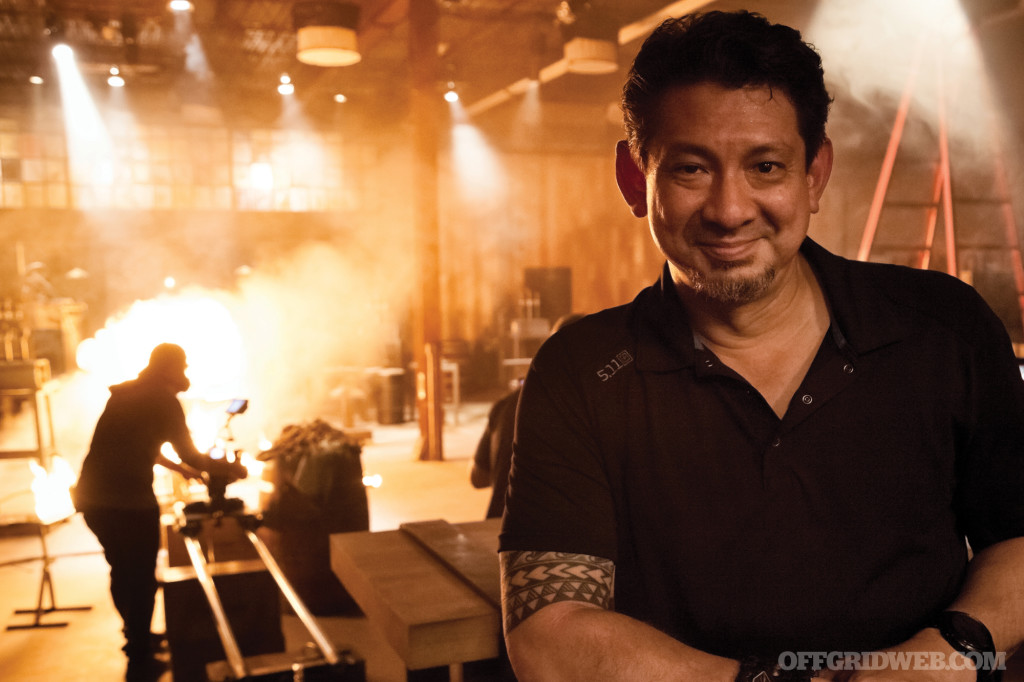
That’s a lot of work. How long does it take to film one episode of Forged in Fire?
DM: It takes about eight days for each episode to be completed.
Now in the fifth season, why do you think Forged in Fire has become such a hit?
DM: I think that our inner desire to be able to create things with our hands is projected when we watch shows like Forged in Fire. From imagination to creation in a competition format, but we happen to have fire, sparks, edged weapons, kill tests, strength tests, and sharpness tests … and did I mention edged weapons?
What’s not to like, right? Handling weapons, especially sharp, pointy ones is dangerous. Did you have any dicey situations where life and limb were threatened?
DM: All the time! To wield a weapon with full intent to cut or decapitate is very dangerous, especially because it’s not a weapon that I have time to “zero in” or be familiar with. Every bladed weapon to me is as dangerous as a firearm. We can easily take it for granted, when in fact they were created with one purpose, which is to destroy life and limb.
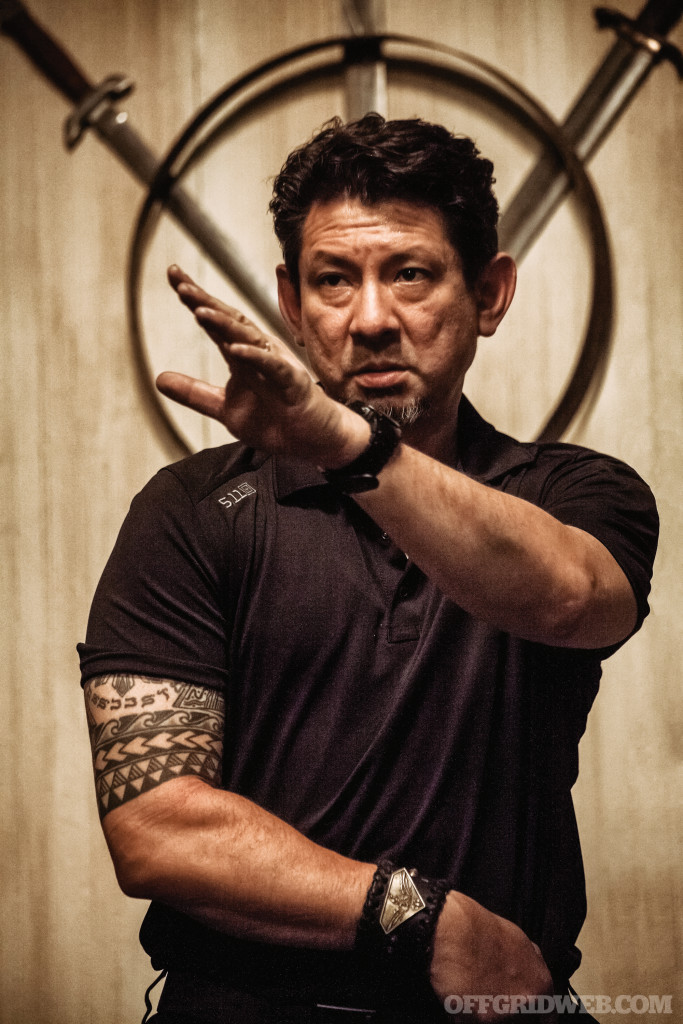
Were you ever injured while filming?
DM: Yes, I was injured during one of our tests. I was testing a heavy blade that was not very sharp against a dry, rubbery ballistics dummy where the shock of the cut and impact injured my rotator cuff.
What did you do in the military?
DM: I started out in logistics, then cross-trained into the cardio-pulmonary field. It was during my stint in the Air Force that I discovered Filipino martial arts (FMA).
What piqued your interest in martial arts?
DM: I always liked fighting and was a big fan of martial arts movies as a kid, so I had to get my Bruce Lee moves on.
We’re big fans of martial arts movies as well. What are your favorites?
DM: The Last Samurai is by far my favorite of all time in terms of story line and that “martial Zen” feeling. I am of course a big fan of Bruce Lee and enjoy Tony Jaa for his amazing timing, along with Iko Uwais. I’m also a big Kurosawa fan.
Tell us about your martial arts journey.
DM: I started as a kid with basics of karate, kickboxing, and Tae Kwon Do, but it was always a side hobby. It wasn’t until I discovered Filipino martial arts in my mid 20s that I really became serious about training. I studied under the several grandmasters and instructors of Pekiti Tirsia Kali, San Miguel Eskrima, and Kali deLeon, along with exposure to Silat and other FMA systems.
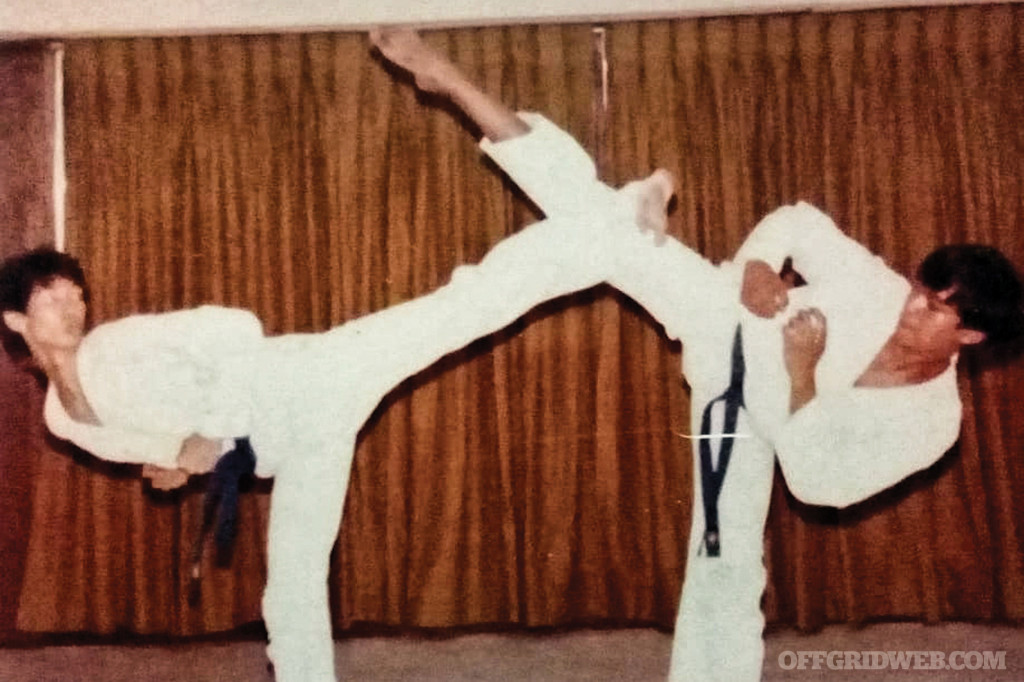
Tae Kwon Do days.
Why did you end up choosing Eskrima/Kali, or did it choose you?
DM: It chose me. [Laughs] When I was introduced to it in my mid 20s I fell madly in love with the art, and I seemed to have a flair for it. But I never learned it in my homeland as a kid growing up in the Philippines. I learned it in the U.S. while I was in the Air force. The irony of it all.
Your English is excellent for a kid growing up in the Philippines. How old were you when you came to the U.S.?
DM: I was 17 when I came to the U.S.
You teach Marcaida Kali, what is that and why is it different from other systems of FMA?
DM: It is my interpretation of martial arts. The way I am able to explain doing what I love to do. It’s a mix of all my lessons learned, but more so, the process. I teach learning methods. And the final test is to create your own system and call it by your name. Marcaida Kali is just a term people use to associate it with me.
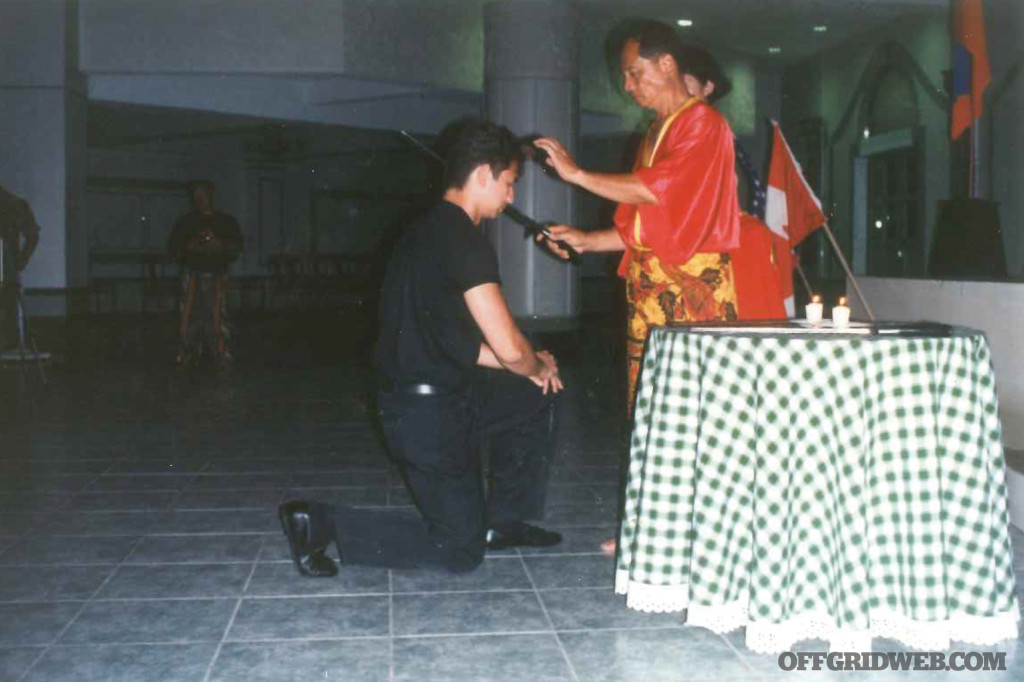
Pekiti Tirsia ceremony with Grand Tuhon Lep Gaje, 1997.
In your OFFGRIDweb.com interview, you stated that with martial arts we should, “seek to develop the good attributes aside from the physical skills and bring back what good qualities martial training develops in a person.” What are these good qualities?
DM: Respect, honor, and integrity — the basic things that should guide our physical, mental, and spiritual being. We need to know why we do things and how these things have to be guided with respectable and honorable use. Martial arts should make us better, not bitter.
What’s the biggest benefit of training in martial arts?
DM: It’s hard to say what are the most important attributes, aside from physical skills developed by the practice of martial arts. Concentration and awareness are probably at the top of the list. From a social standpoint, equanimity is perhaps the most important virtue a martial artist can have; that is, to be able to live in the world without prejudice or fear.
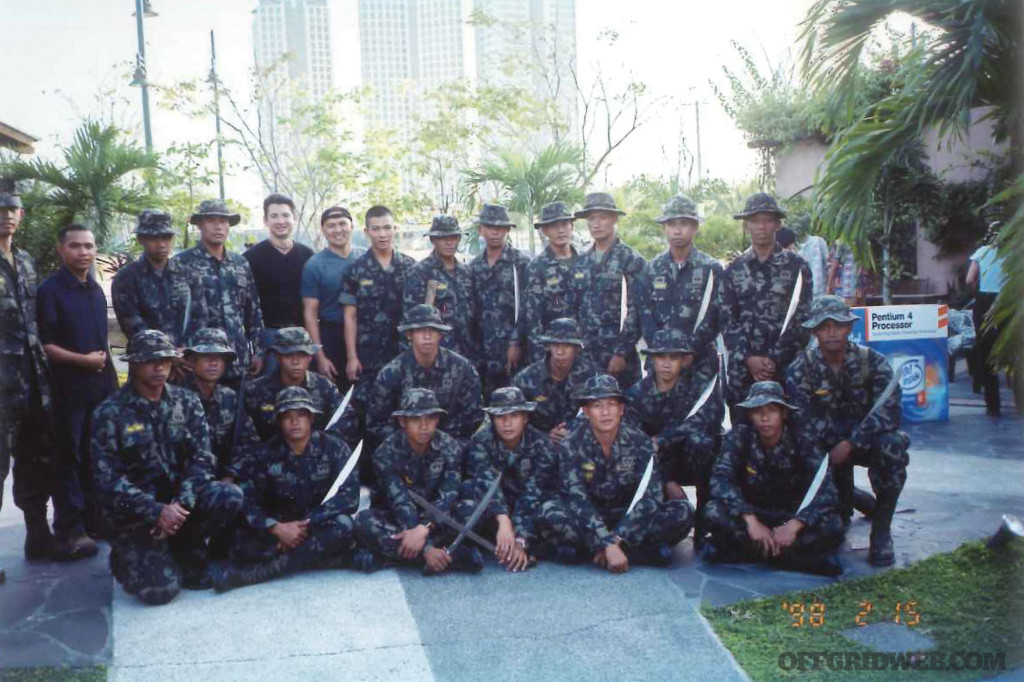
With the Philippine Force Recon Battalion edged-weapon training graduation.
Every art has strengths and weaknesses. What are the weaknesses of your art?
DM: Though we have an empty-hand component in our art, I believe that time spent on any one thing will become your strength. So since FMA is weapons-based, I see that the empty-hands portions — if not trained often — can become the weakness. But what wields the weapons? I would also say that in weapons training, the ground is the last place you want to be; then, ground-grappling would be the weakness. I don’t spend enough time on the ground to make it our strength.
What about the strengths of Kali?
DM: It is a fact of nature that all forms of action are limited by circumstance. In the case of martial arts — size, strength, age, dedication — they all play a fundamental role. Kali is subject to these limitations as are all other martial arts. Its great strength is its ability to weaponize practically everything, thus making the surrounding world a tool — a means of equalizing most disadvantages. The ability to use this resource without abusing it distinguishes the fully accomplished practitioner of Kali from those who are merely attracted to the most flashy aspects of the art.
What was your training schedule like when you started in martial arts?
DM: When I really was into it (still am), my formative years were spent with six-hour-long training sessions on Saturdays and another two hours, twice a week. I gave up my entire Saturdays for the training sessions. Three hours of conditioning, till burn out. Then three hours of technical drills and specifics. The idea was to be so exhausted that the technical were done with only the right muscle groups teaching us to learn to breathe and stay relaxed. Not to power through anything and to trust the weapon.
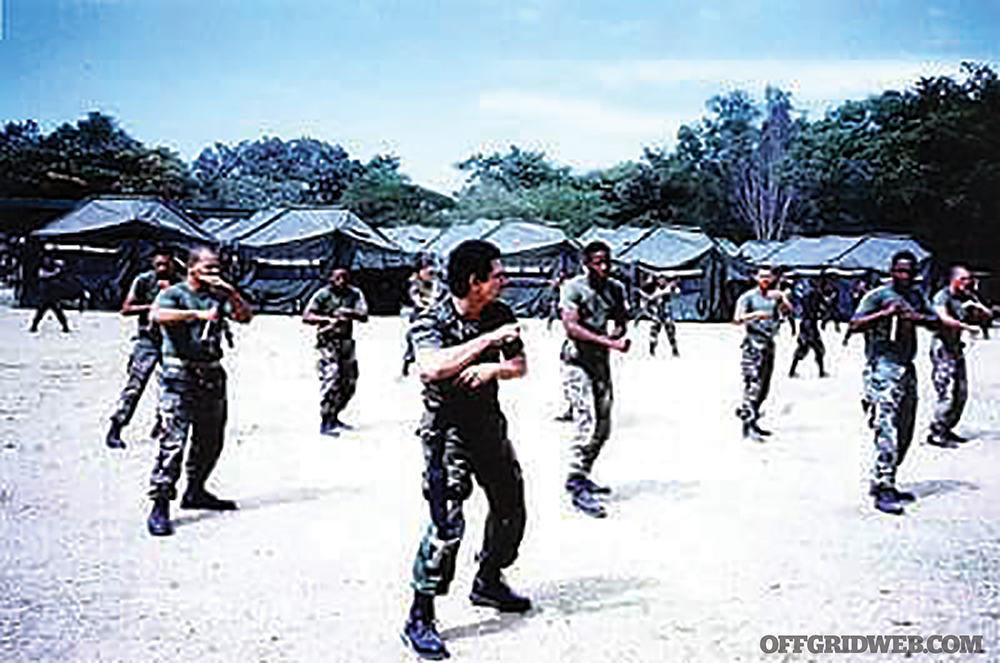
Joint U.S. Philippine Marines edged impact combatives training.
No wonder you are so good. What is your schedule of training now?
DM: Three times a week I train and teach two guys at 5 a.m.
When SHTF, how important is training? What about physical fitness?
DM: You default to what your comfort level is. This is muscle memory, taken from the repetition of training. Training is basic for every aspect of the art. In regards to a violent attack, it embraces the whole range from preventing to surviving it. Physical fitness is as useful in martial arts, as it is in the preservation of a sound cardiovascular system. If you do not have the physical attributes to do what you learned, then it can’t be executed. I guess that is why I like Kali. The weapons act as the ultimate force multiplier. You do not have to be super strong or flexible to use an edge or impact weapon, yet you can have the same results as one who is younger and stronger.
Do you think a person who trains in the martial arts has an advantage during a violent situation?
DM: Anyone who trains correctly will become aware and then create preventive measures. Training will give you possible answers to violent situations. Training and preparing for violence gives you a better chance compared to someone who has never even thought of violence and simply relies on their natural instincts once it occurs. We are all different, so some are natural at dealing with violence and some are not. Given that you choose to learn something so you can deal with it makes you that much better at dealing with that situation.
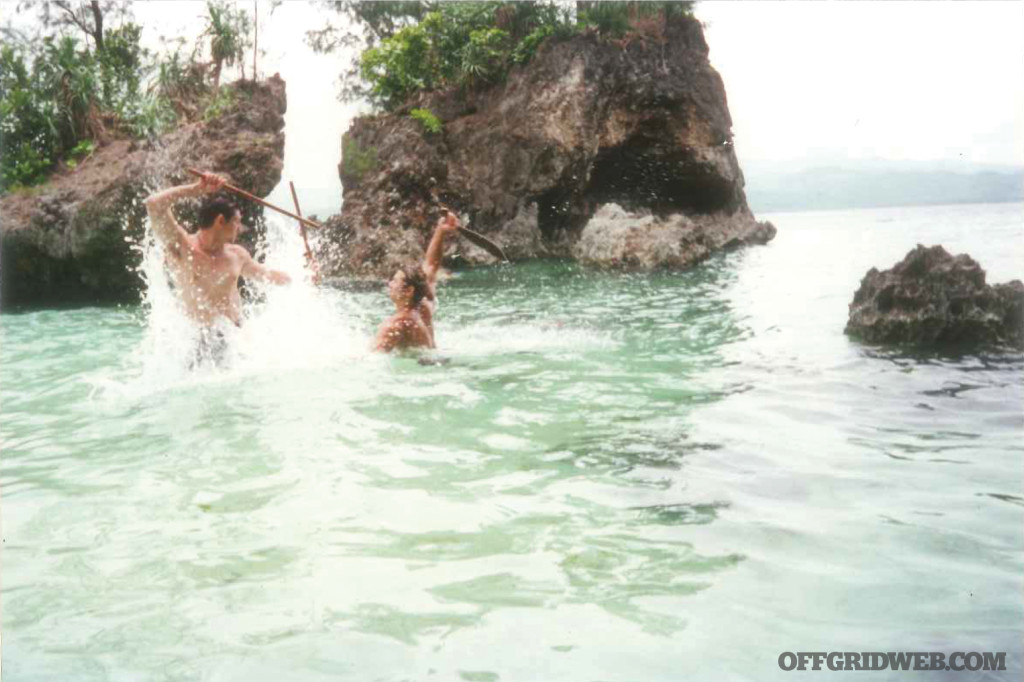
On the beach, water sparring with brother.
During any crisis, like a survival situation, how can martial arts be of help?
DM: If your martial art teaches you crisis management, and it is trained properly then yes, we are all different and train differently. But one thing martial arts discipline does teach is a chance to focus on whatever you are learning. Training the mind to control the body helps you deal with a crisis much better. It’s not just the self-defense techniques of martial arts that come into play. Breathing helps control emotions and keeps you focused and relaxed. You’ll be able to assess things better and make the right choices. The martial practices give conditioning, but mind, body, and spirit should work as a whole. This increases your chances of surviving a crisis in my opinion.
You teach a lot of seminars. What is it that people are looking to learn?
DM: My guess is to move and do the things they see me doing. I, in turn, try to teach them the methodology of how I learned these things and how I train them, as opposed to memorizing techniques.
If someone wants to protect home and hearth, what should they do?
DM: Educate yourself about everything that has to do with your home. Learn about entry and exit points, weapons of opportunity around the house, safe rooms, emergency plans, and where to meet in case things happen. Make a plan, but make sure you actually train your plans. Knowledge without the ability to execute will limit your effectiveness.
We agree, practicing your plan is critical. Do you have to spend a lot of time training?
DM: If you know how to incorporate training into your daily life then you are training all the time. There is no limit to the amount you should train in something you want to be good at.
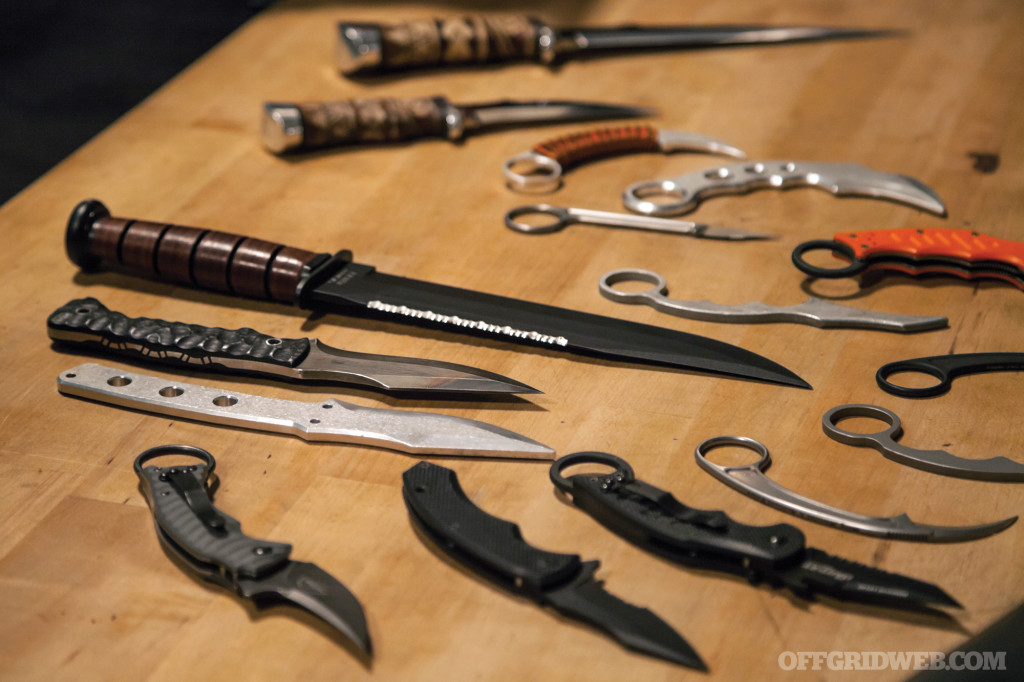
Above: Doug Marcaida blade designs and collaborations with KaBar Knives, Fox Knives Italy, Max Venom, Bastinelli Knives, Russian Blades, and Jason Knight.
How does one go about incorporating training into their daily life?
DM: “Train the way you will fight, so you will fight the way you train.” I will take it further — you should, “Live the way you will fight, so that you will fight the way you live.” Unless you are in a sport where you are sure the fight will take place in a ring, you need to realize that the dojo (training hall) is probably the safest place to be. Fights happen outside and mostly while you are just living your life. So if living your life is a constant; meaning how you move, how you do things, how you think all the time, and that is what you want to protect, then train those very same things to be functional in a fight. Here’s an example, if I normally swing my hands as I walk, can I turn that swing into strikes? If I normally walk and stomp on an insect, can I turn that stomp to be a strike? If a wrist lock is a turn of a wrist, is that motion similar to turning a door knob? If using a spear in combat is about creating a barrier in combat, can chairs, tables, or the obvious broom be used? These are the same principles that I see in everyday living. These are the things that I do every day, so training is an all the time thing.
With all this training, have you been in an altercation where you used your skills? If so, what happened and what did you learn?
DM: I plead the 5th. But I did learn that ego is the real enemy. It gets you into trouble where trouble could have been avoided and even if you win a fight, you lost at harmony in life. Could it have been prevented? Most of the time the answer is yes.
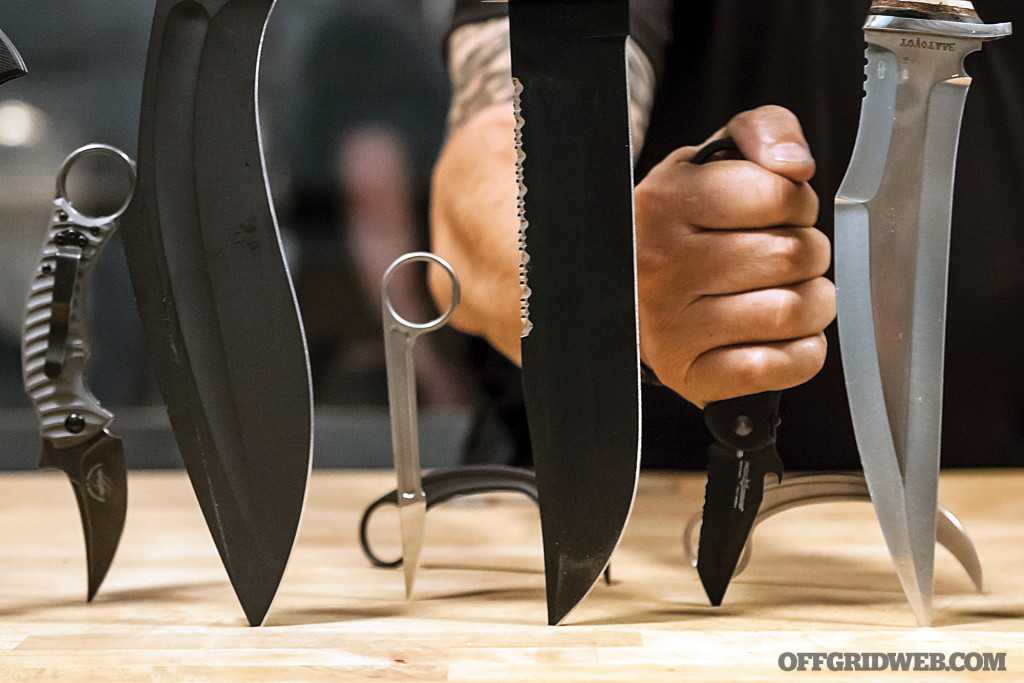
UFC and MMA has a large following now. What are your views of the UFC and MMA?
DM: I am a big fan of the sport. What I love is the idea to be well rounded; that one should learn to cover all bases that just one art cannot provide. What I find disappointing is the way some athletes conduct themselves in public. Their aggressive nature is what martial arts tries to control, and they think it’s OK to act this way in public. Those who are exposed to true violence, where life and death is a matter of opportunity, know that you don’t act this way. No one is bulletproof or stab-proof. But as public figures how they conduct themselves affects the impressionable fans who will take on their persona because perception is reality to them. Also, there’s nothing wrong in practicing martial arts as a sport as long as one understands the difference between playing and fighting for one’s life and limb. Intent is the key.
If you were to learn a new martial arts, what would it be and why?
DM: Brazilian Jiu-Jitsu and Russian Sambo. I have always wanted to put a lot of time in to learn, but have not had the pleasure of doing so.
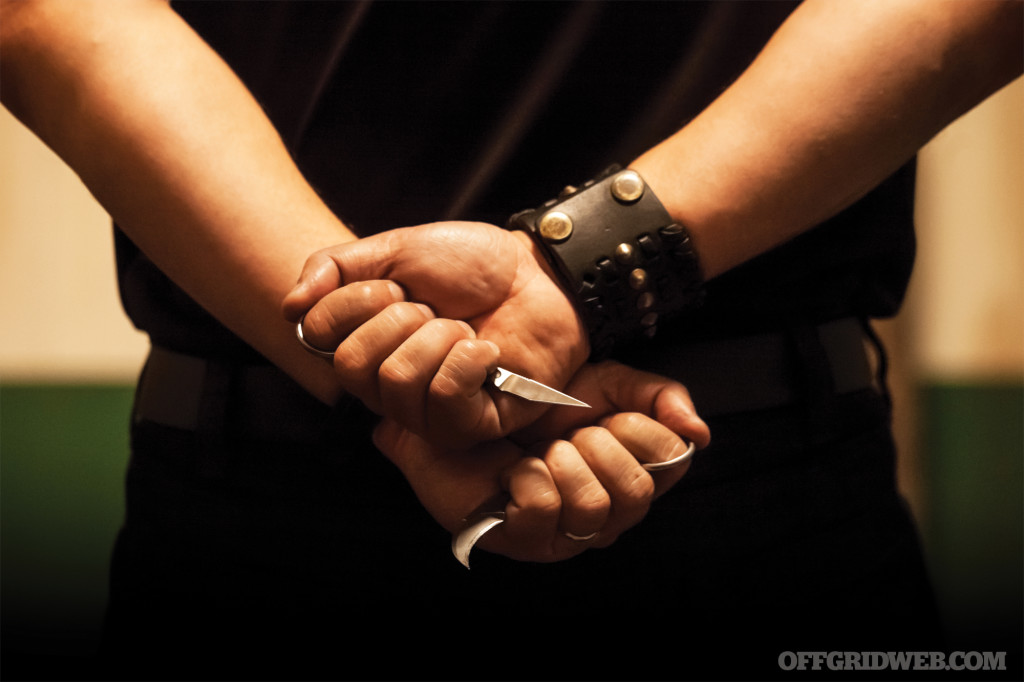
Do you consider yourself a “prepper?”
DM: Yes. I try to prepare for things that may or may not happen in my life.
What should the average prepper/survivalist prepare for?
DM: Take yourself out of your comfort zone. What would you do if you do not have the things you depend on daily to live? How would you then survive? Your answer to that will give you lessons about yourself that you may or may not be aware of. It will show you your strengths and weakness. Maybe you’re a tech-savvy person, but when technology is out the window, what then? Can you live without certain things? We all say we can do without, but how does your mindset deal with the stress when you are without? Some of us can’t handle it and go through withdrawals. Try going without your smartphone for even a few hours and watch your response. There are some who get stressed. [Laughs] What things are really necessities over niceties? Once you expose the weakness, prepare to strengthen it.
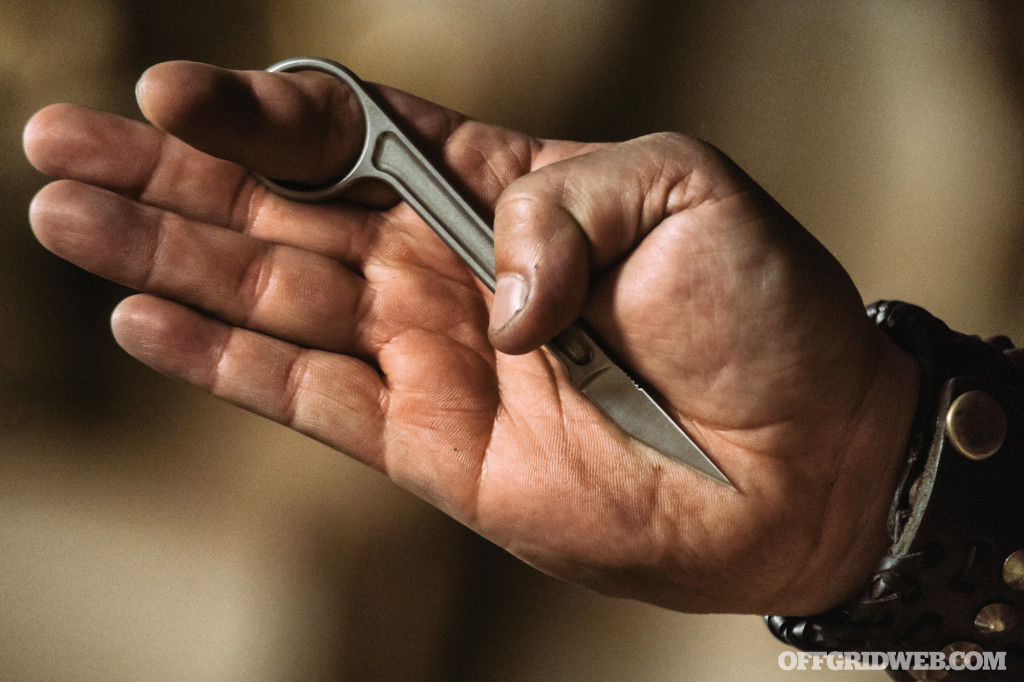
The Bastinelli Knives Le Picouer scalpel.
What’s been keeping you busy lately?
DM: Forged in Fire, knife designing, and martial program writing.
Martial program writing? What is that?
DM: Ever since I transitioned into media, I have not been able to continue my work as a military contractor for my edged and impact weapons instruction. I want to continue this even if it’s in the “train the trainer” capacity, which means write the programs so others can teach them.
Any cool knife design you’re working on now or have completed recently?
DM: The Kortada Knife and the Kortada Dagger are two of my current designs that I am releasing. The kortada as the word sounds, means “to cut.” This blade design is based on a ginunting (scissor) knife I was exposed to when I was training with the Force Recon Marines. My version has a more acute edge to allow for thrusting, but keeps the geometry to do what it was named to do — to cut.
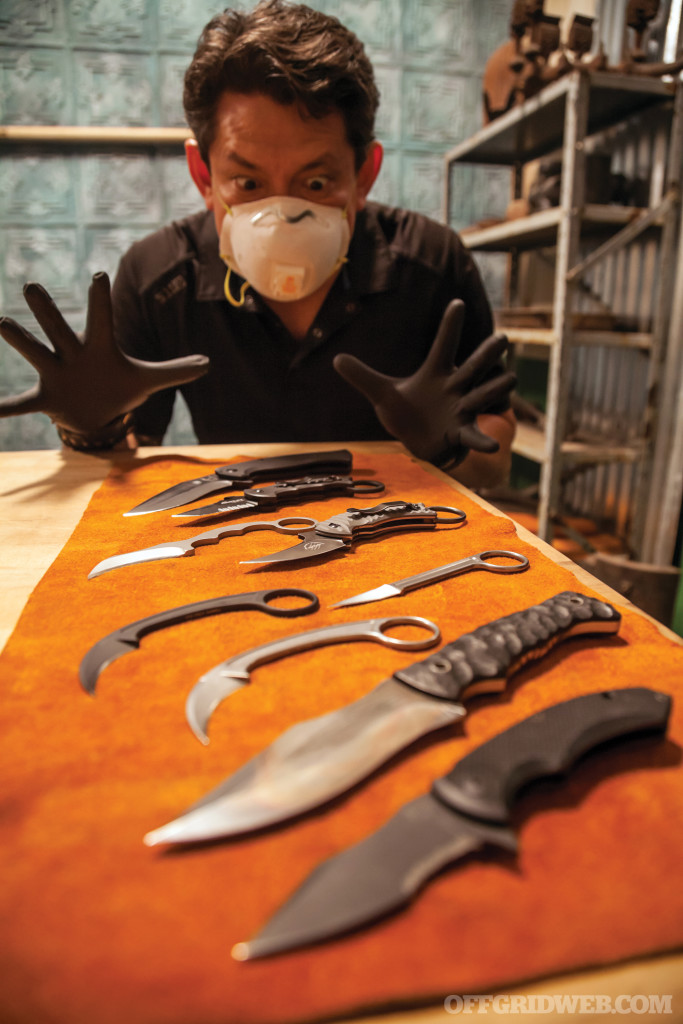
A man in his element — Doug looking over several of his knife design collaborations.
About Doug Marcaida
Age: 52
Occupation: Martial artist, knife designer, media personality
Base of operations: Rochester, NY
Top 5 recommended reading list:
- The Alchemist by Paolo Colhoe
- On Killing by Dave Grossman
- The Gift of Fear by Gavin De Becker
- Just Two Seconds by Gavin De Becker
- The Little Prince by Antoine de Saint
Family: Wife, Joelle and three sons: Alex, DJ, and Jaden
Favorite Film: The Last Samurai
Favorite quote: “It’s not about how many you can hurt, but how many you can protect”
Most Effective Pickup Line: I’m married
Favorite Knife: The ones I design.
Favorite Firearm: M1911
Military Background: U.S. Air Force
Martial Arts Background: Kali
Website: dougmarcaida.com
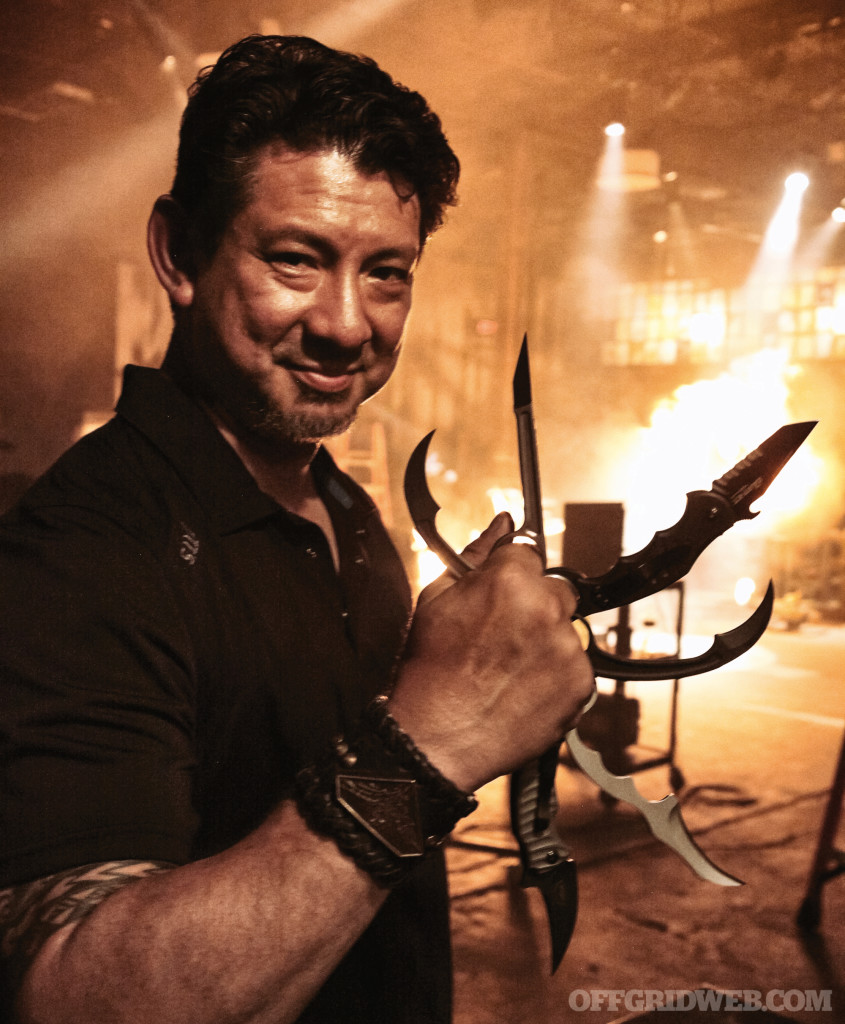
Doug’s EDC (clockwise from top left)
- Pika Karambit
- Le Picoeur
- Fox DART
- DMaX neck knife
- Mako folder
- MK Ultra Kukri folder (not pictured)
Doug’s ring knife designs from top to bottom: Pika karambit satin finish (Bastinelli Knives), Le Picouer scalpel (Bastinelli Knives), The Fox Dart XT (Fox Knives Italy), Pika karambit black cerakote (Bastinelli Knives), DmaX karambit neck knife (Max Venom), Mako Knife folder (Bastinelli Knives).
More From Issue 29
Don’t miss essential survival insights—sign up for Recoil Offgrid’s free newsletter today!
Read articles from the next issue of Recoil Offgrid: Issue 30
Read articles from the previous issue of Recoil Offgrid: Issue 28
Check out our other publications on the web: Recoil | Gun Digest | Blade | RecoilTV | RECOILtv (YouTube)
Editor’s Note: This article has been modified from its original version for the web.

